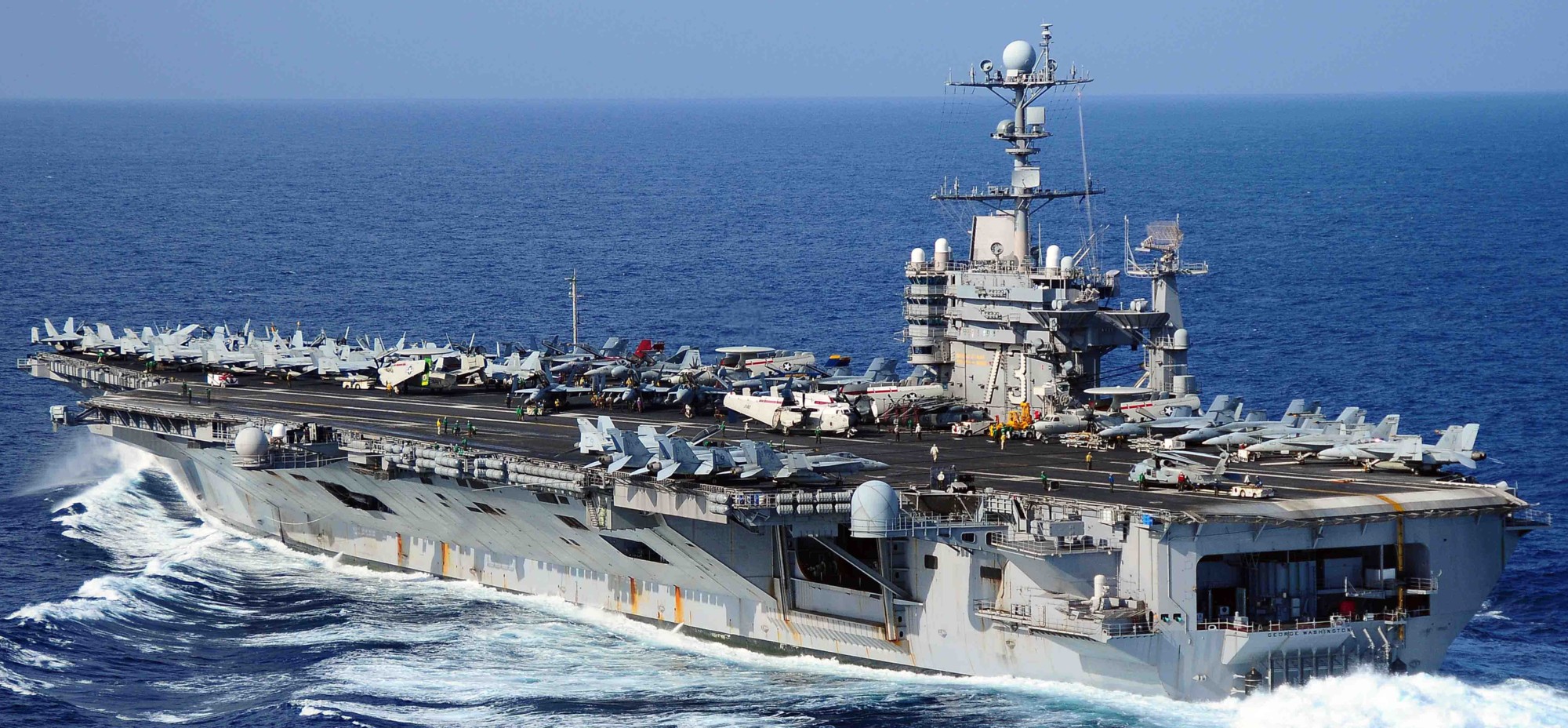 |
||
|
HOME
|
US Navy -
ships
|
US Navy - air
units
|
USMC - air
units
|
International
Navies
|
Weapon Systems
|
Special Reports |
||
|
US Navy - Aircraft Carrier CVN 73 - USS George Washington |
||
|
||
| 06/25 | ||
|
Type, class:
Aircraft Carrier - CVN; Nimitz class Builder: Newport News Shipbuilding, Newport News, Virginia, USA STATUS: Awarded: December 27, 1982 Laid down: August 25, 1986 Launched: July 21, 1990 Commissioned: July 4, 1992 IN SERVICE Homeport: forward deployed to Fleet Activities Yokosuka, Japan Namesake: George Washington (1732-1799), 1st President of the USA Ships Motto: SPIRIT OF FREEDOM Technical Data: see: INFO > Nimitz class Aircraft Carrier - CVN |
||
|
Deployments / Carrier Air Wings embarked / major maintenance periods: 1992 ? with Carrier Air Wing 7 (CVW-7) embarked - shakedown cruise - Caribbean Sea January 1993 - May 1993: Post Shakedown Availability (PSA) at Newport News Shipbuilding, Virginia May 1994 - November 1994 with Carrier Air Wing 7 (CVW-7) embarked - Mediterranean Sea January 1995 - May 1995: Selected Restricted Availability (SRA) at Norfolk Naval Shipyard, Virginia January 1996 - July 1996 with Carrier Air Wing 7 (CVW-7) embarked - Mediterranean Sea August 1996 - February 1997: Planned Incremental Availability (PIA) at Norfolk Naval Shipyard, Virginia October 1997 - April 1998 with Carrier Air Wing 1 (CVW-1) embarked - Mediterranean Sea, Gulf May 1998 - March 1999: Drydocking Planned Incremental Availability (DPIA) at Norfolk Naval Shipyard, Virginia June 2000 - December 2000 with Carrier Air Wing 17 (CVW-17) embarked - Mediterranean Sea, Gulf February 2001 - July 2001: Planned Incremental Availability (PIA) at Portsmouth Naval Shipyard, Kittery, Maine June 2002 - December 2002 with Carrier Air Wing 17 (CVW-17) embarked - Mediterranean Sea, Arabian Sea February 2003 - August 2003: Planned Incremental Availability (PIA) at Norfolk Naval Shipyard, Virginia January 2004 - July 2004 with Carrier Air Wing 7 (CVW-7) embarked - Mediterranean Sea, Gulf January 2005 - December 2005: Drydocking Planned Incremental Availability (DPIA) at Newport News Shipbuilding, Virginia April 2006 - May 2006 with Carrier Air Wing 17 (CVW-17) embarked - Caribbean Sea September 2006 - August 2007: Drydocking Planned Incremental Availability (DPIA) at Norfolk Naval Shipyard, Virginia April 2008 - May 2008 with Carrier Air Wing 17 (CVW-17) embarked - Norfolk to San Diego via Cape Horn August 2008 - August 2015 permanently forward deployed to Fleet Activities Yokosuka, Japan with Carrier Air Wing 5 (CVW-5) assigned September 2015 - December 2015 with Carrier Air Wing 2 (CVW-2) embarked - San Diego to Norfolk via Cape Horn August 2017 - May 2023: Refueling and Complex Overhaul (RCOH) at HII Newport News Shipbuilding, Virginia 2024 > transferring from east to west coast via the Strait of Magellan > arriving at NAS North Island, San Diego on July 10, 2024 at NAS North Island the crews of USS George Washington and USS Ronald Reagan swapped ships October 8, 2024: USS George Washington departed San Diego for her journey to Yokosuka, Japan November 22, 2024: USS George Washington arrived at her new homeport, Yokosuka, Japan November 2024 - permanently forward deployed to Commander, Fleet Activities Yokosuka, Japan with Carrier Air Wing 5 (CVW-5) assigned |
||
| images | ||
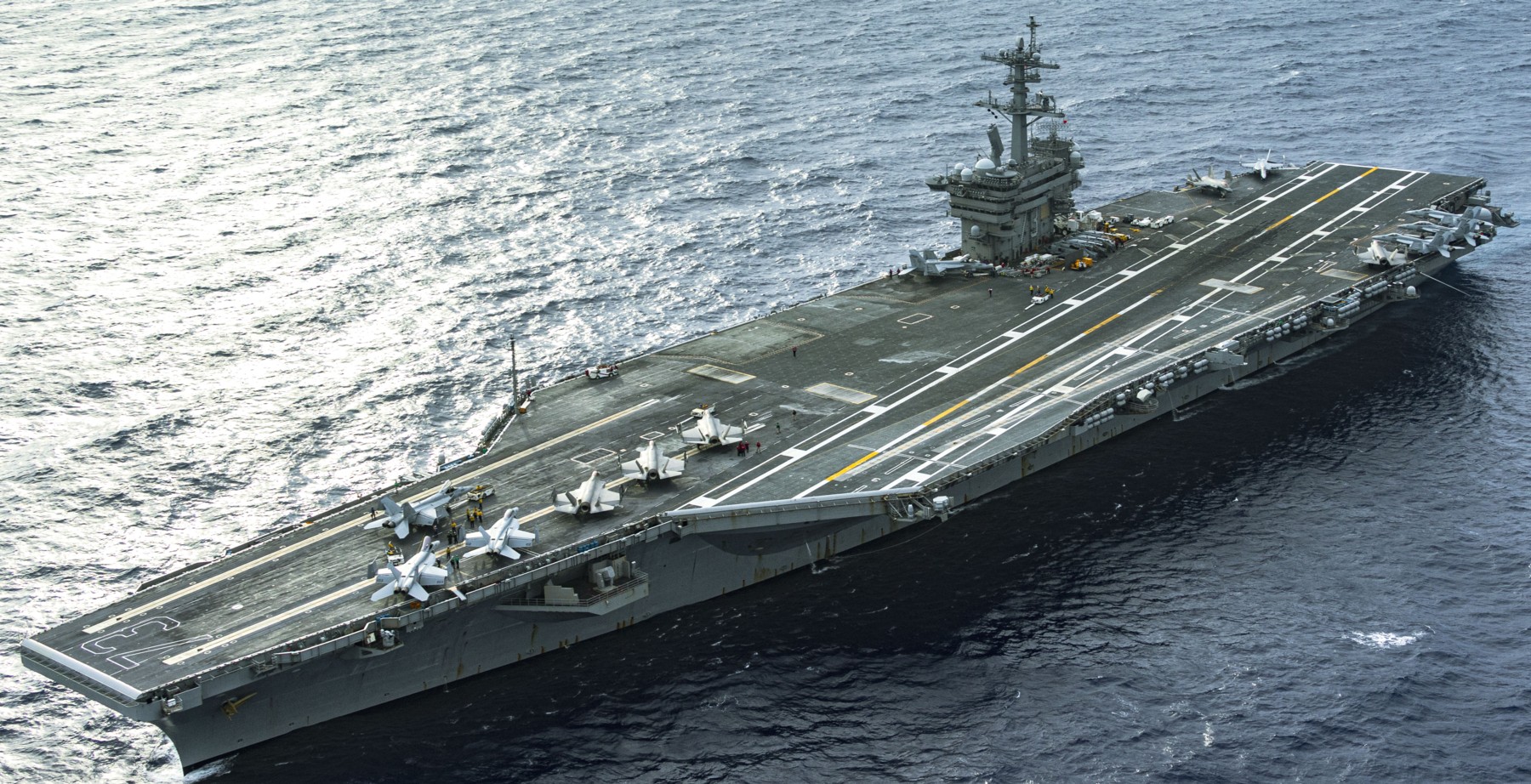 Philippine Sea - June 2025 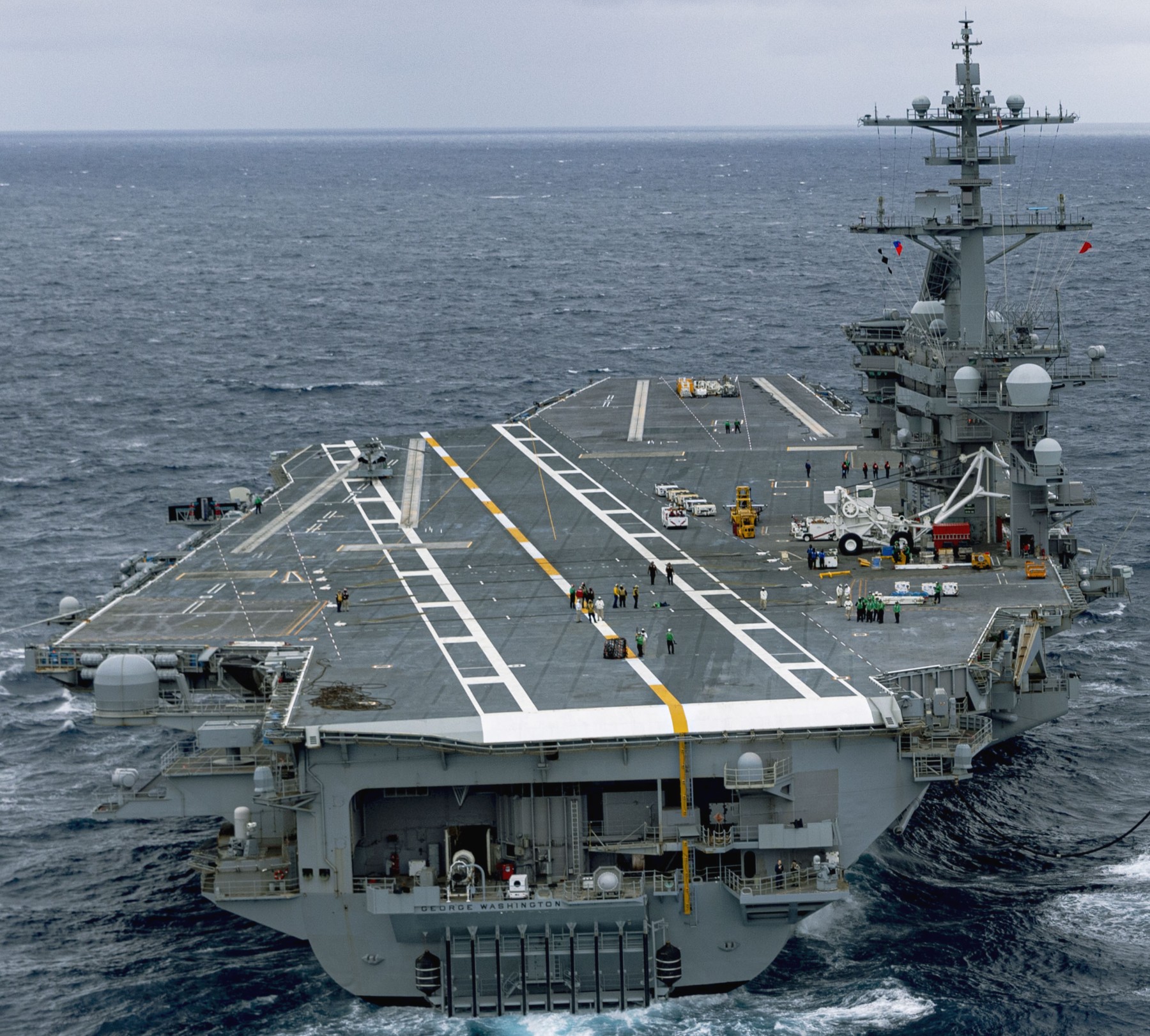 Philippine Sea - May 2025 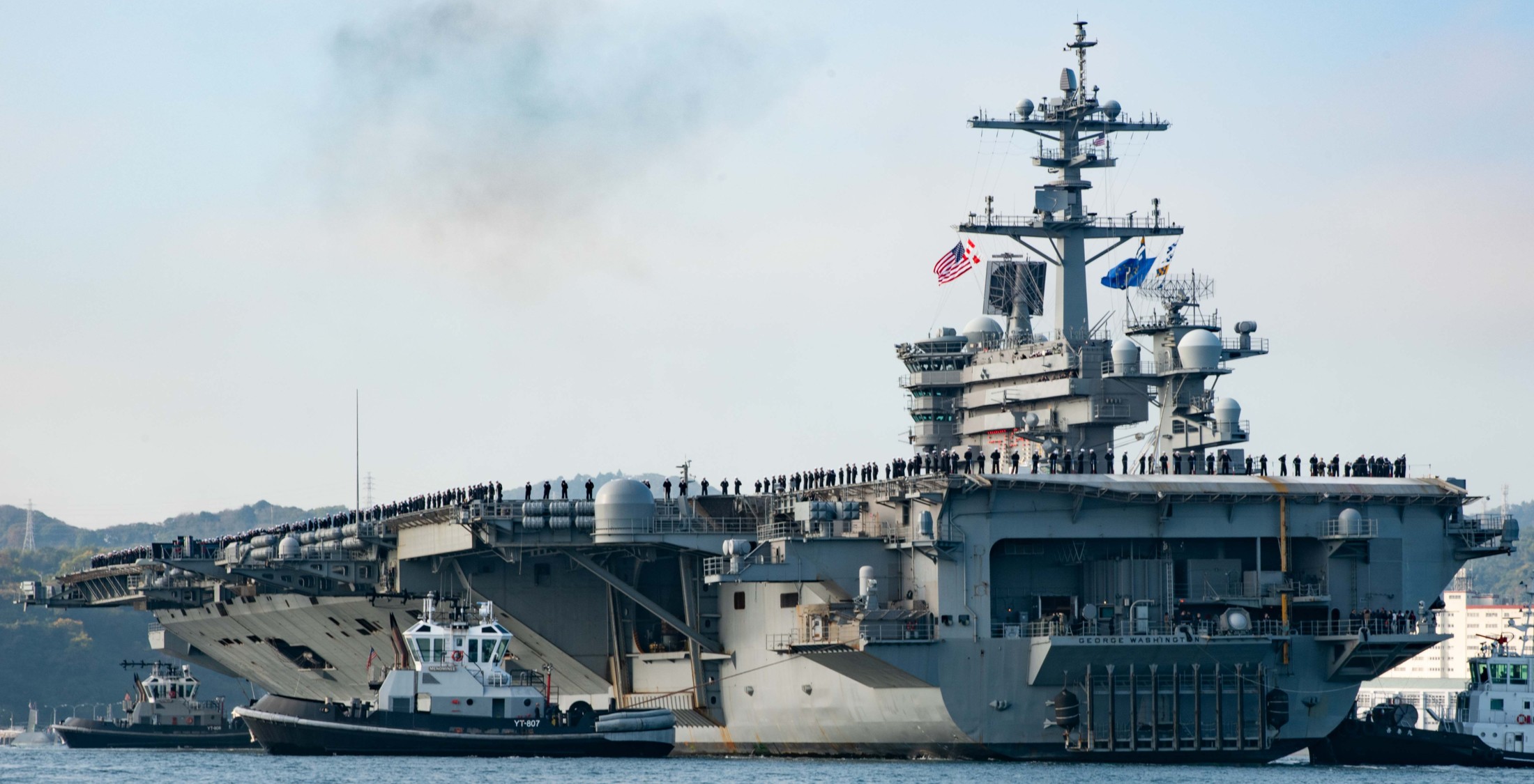 arriving at her new homeport, Commander Fleet Activities Yokosuka, Japan - November 22, 2024  arriving at her new homeport, Commander Fleet Activities Yokosuka, Japan - November 22, 2024  Sailors stand in formation to form Japanese kanji and hiragana characters spelling “hisashiburi”, which translates to “long time, no see,” Pacific Ocean, November 6, 2024 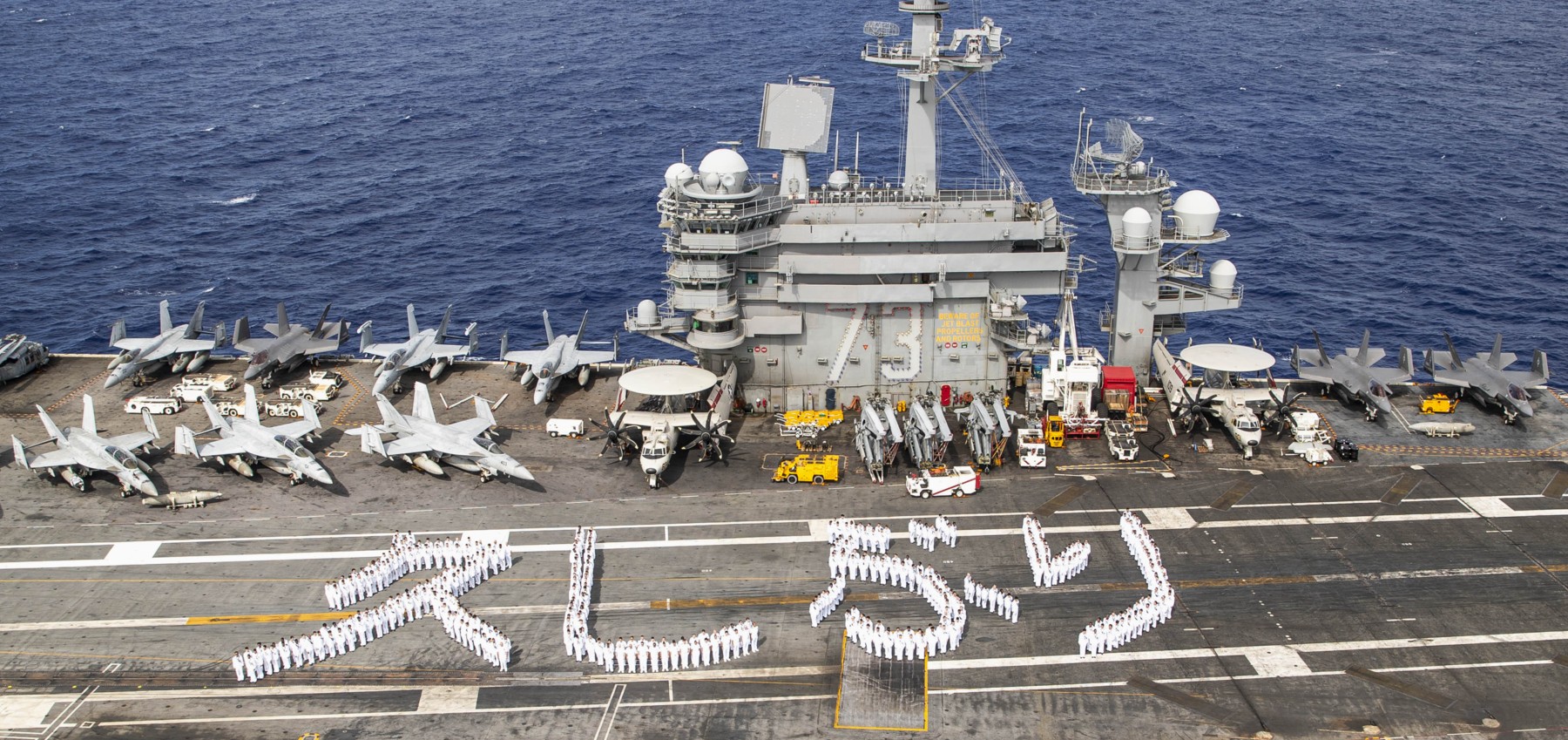 Sailors stand in formation to form Japanese kanji and hiragana characters spelling “hisashiburi”, which translates to “long time, no see,” Pacific Ocean, November 6, 2024  with CVW-5 embarked - Pacific Ocean - November 2024 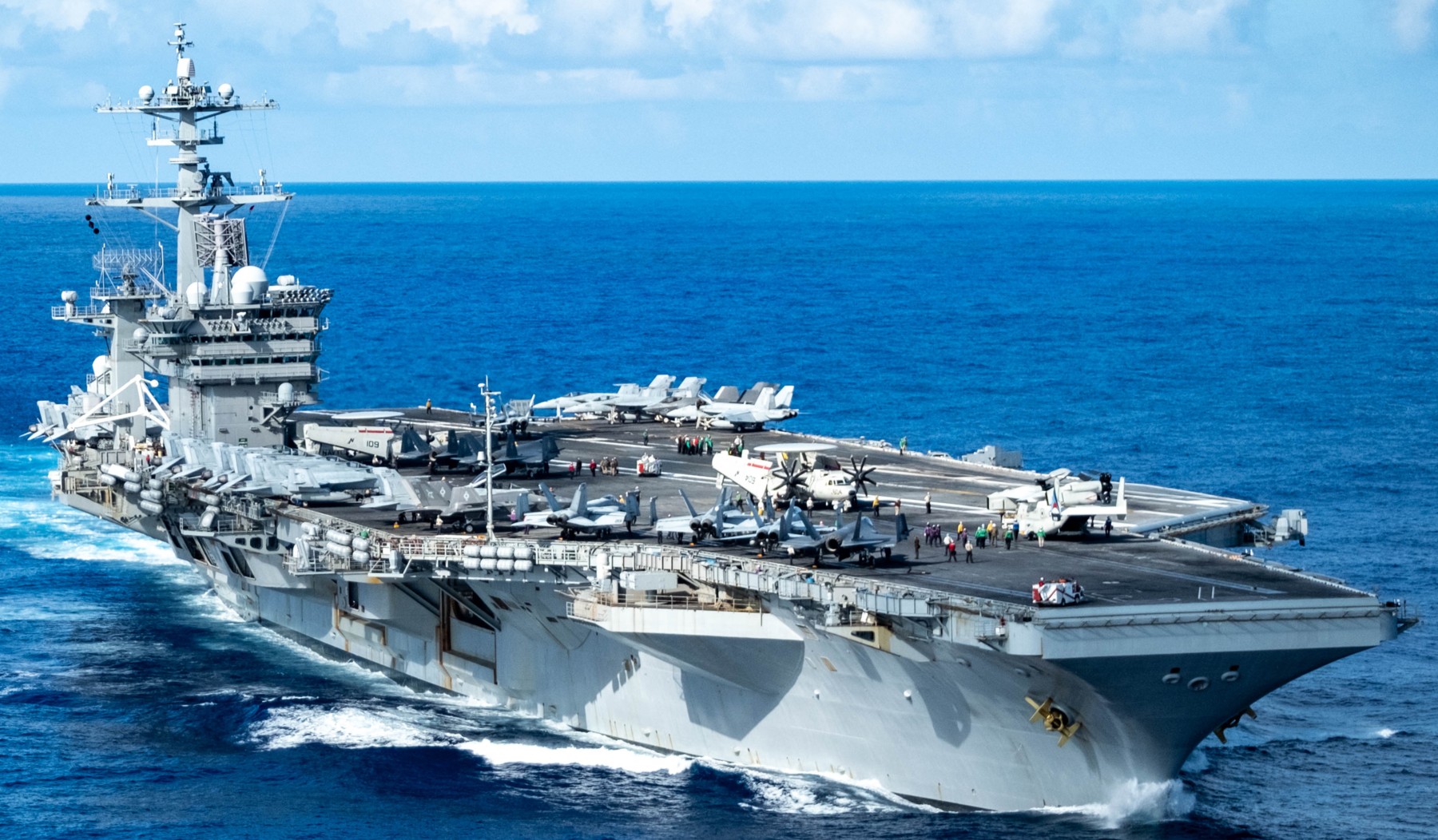 with CVW-5 embarked - Exercise Keen Sword - Pacific Ocean - October 2024 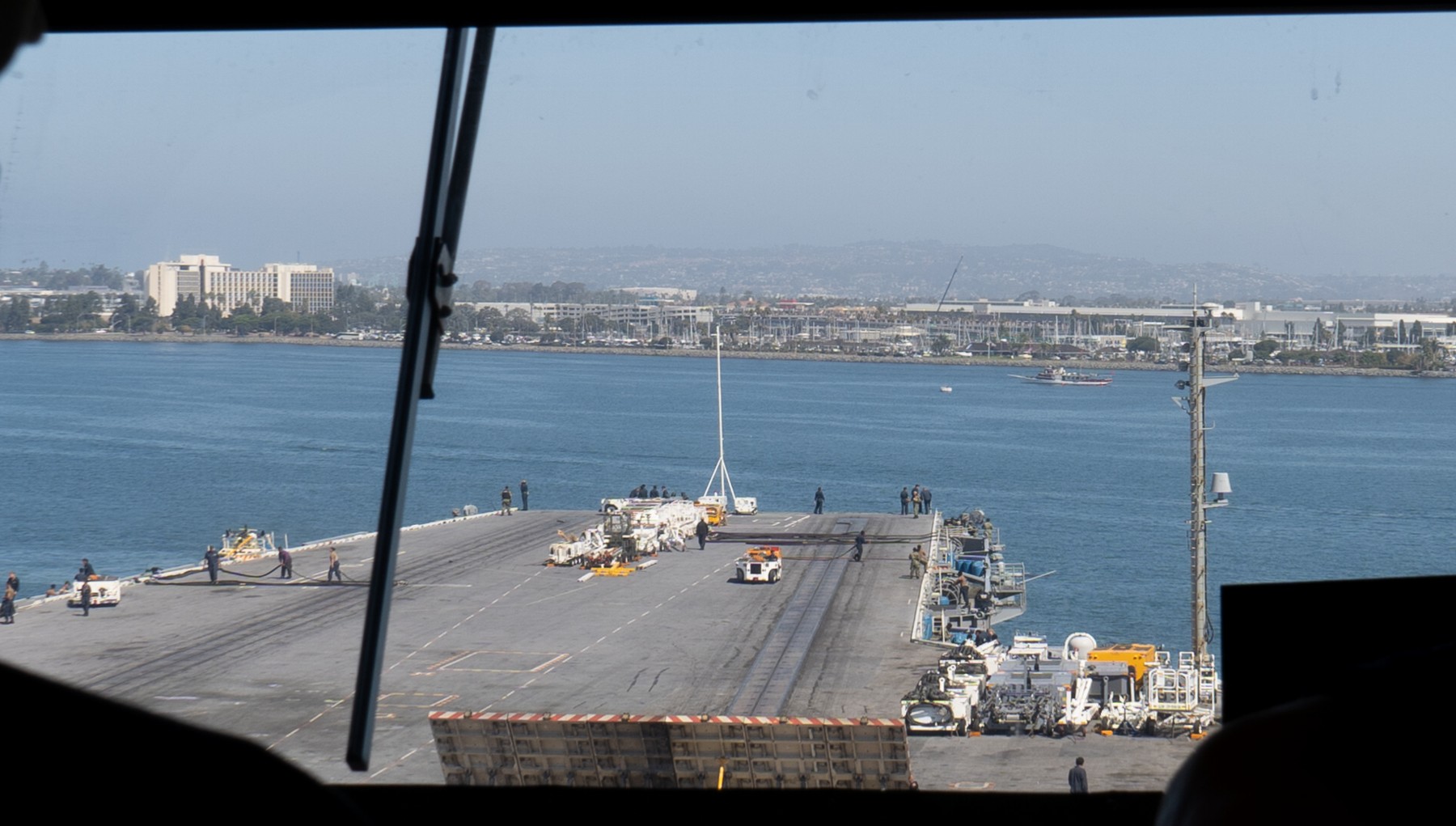 departing Naval Air Station North Island, California for her journey to Yokosuka, Japan - October 8, 2024  moored at Naval Air Station North Island, California - July 23, 2024  USS George Washington arrives at Naval Air Station North Island, California - July 10, 2024. USS George Washington and crew are in the process of completing a homeport change, replacing USS Ronald Reagan (CVN 76) as the forward-deployed US Naval Forces Japan aircraft carrier at Fleet Activities Yokosuka, Japan.  arriving at Naval Air Station North Island, California - July 10, 2024 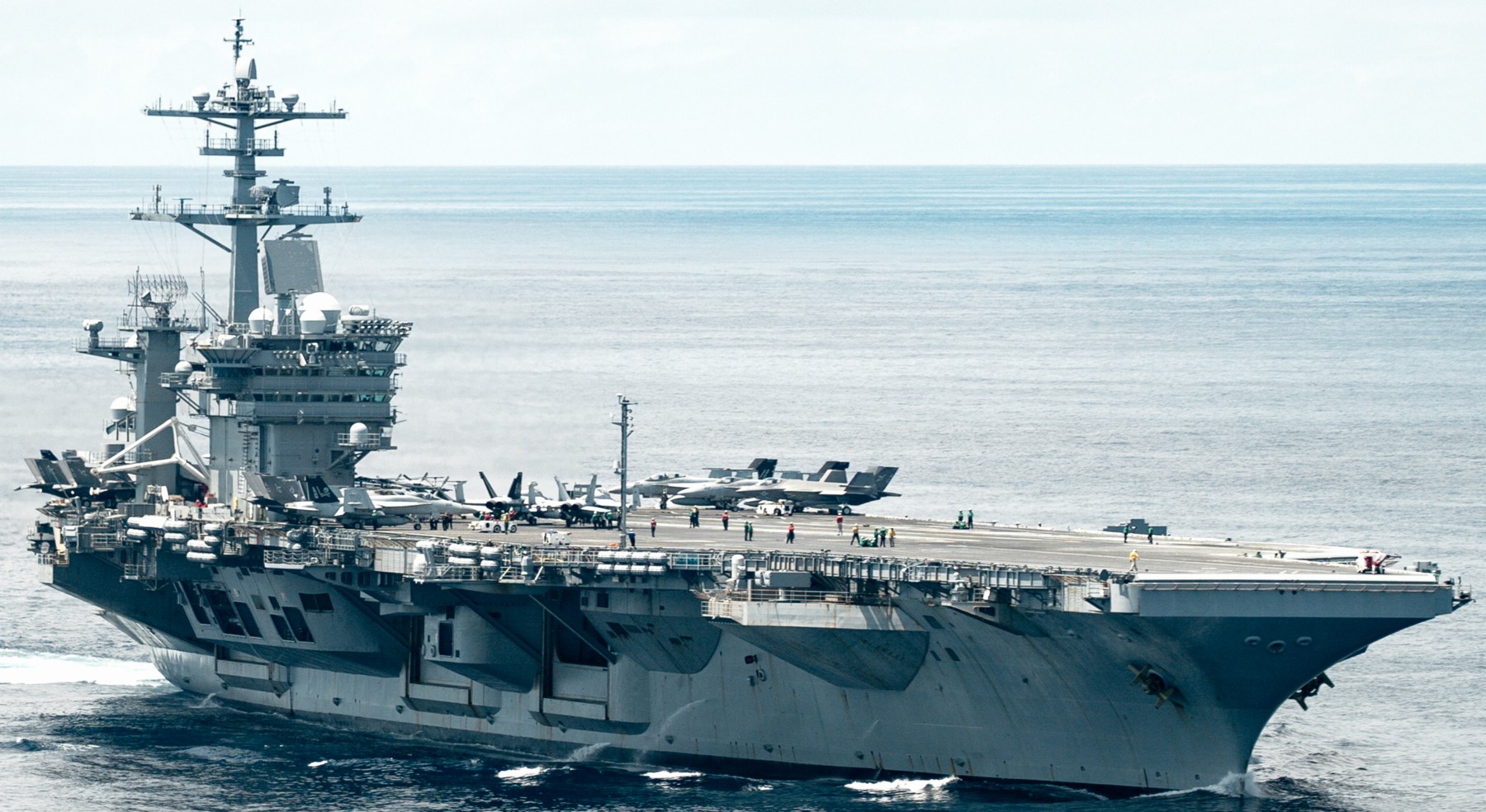 Southern Seas 2024 - off Colombia - June 2024  Southern Seas 2024 - off Peru - June 2024  Southern Seas 2024 - off Peru - June 2024 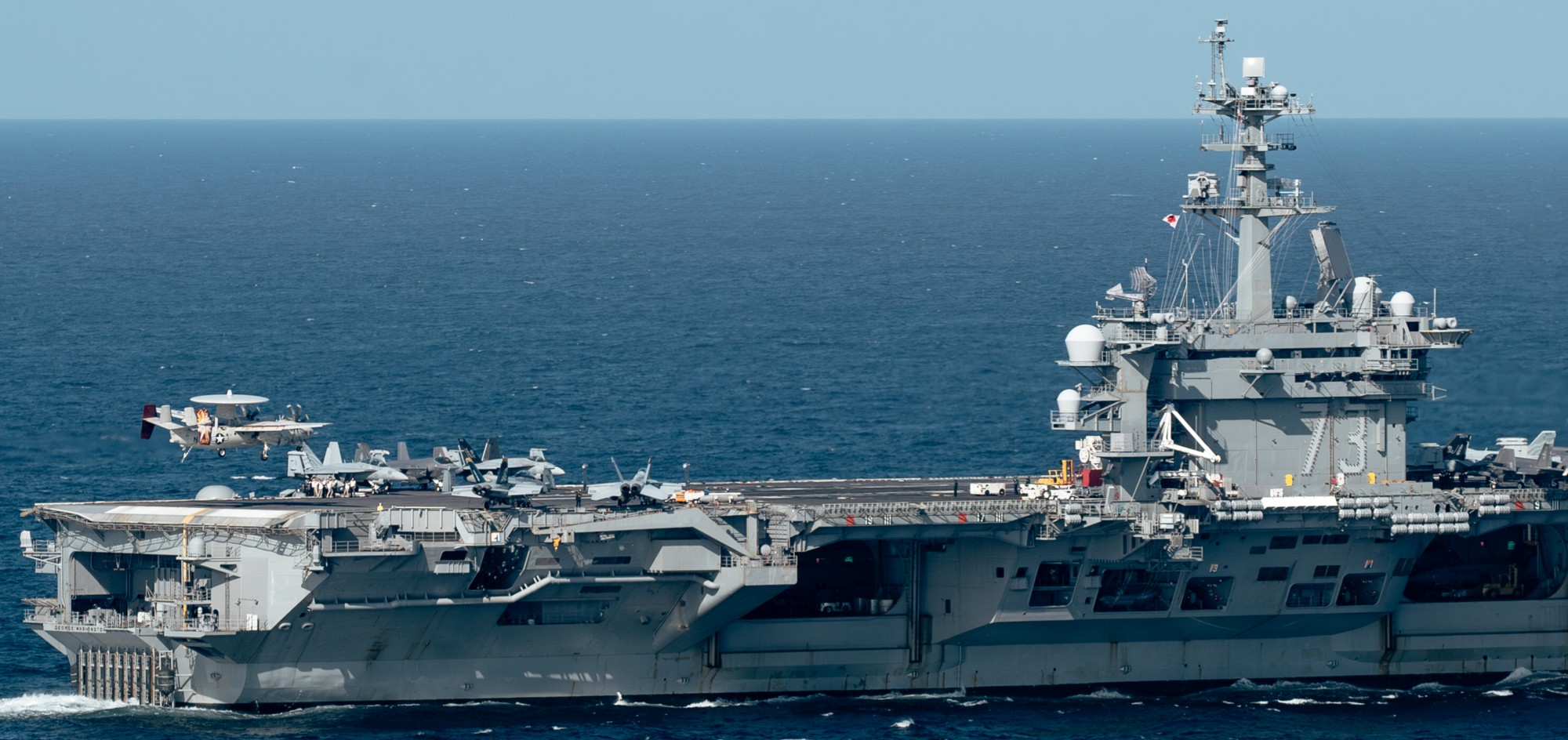 Southern Seas 2024 - off Peru - June 2024  Southern Seas 2024 - off Peru - June 2024 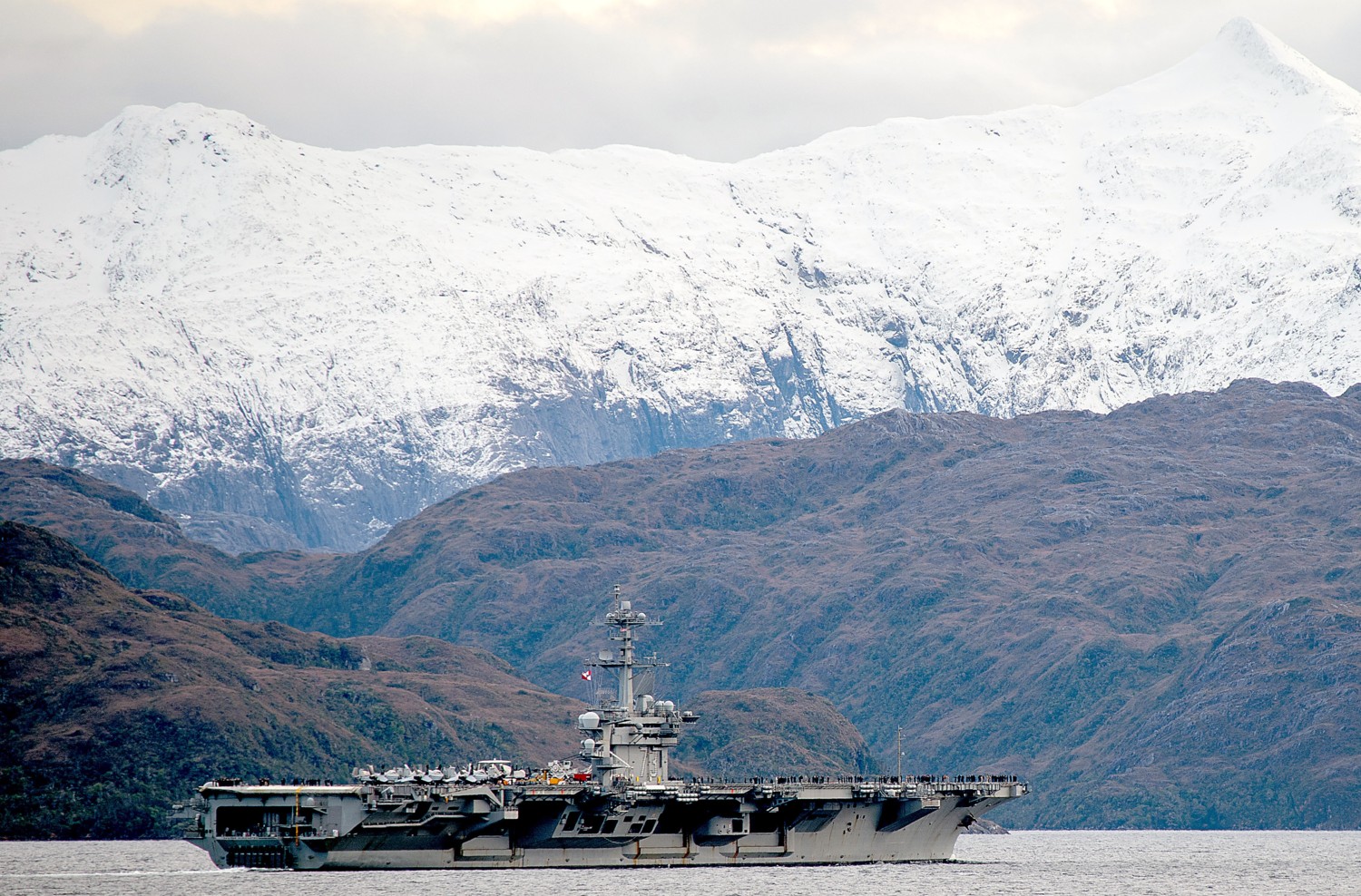 Strait of Magellan - June 5, 2024 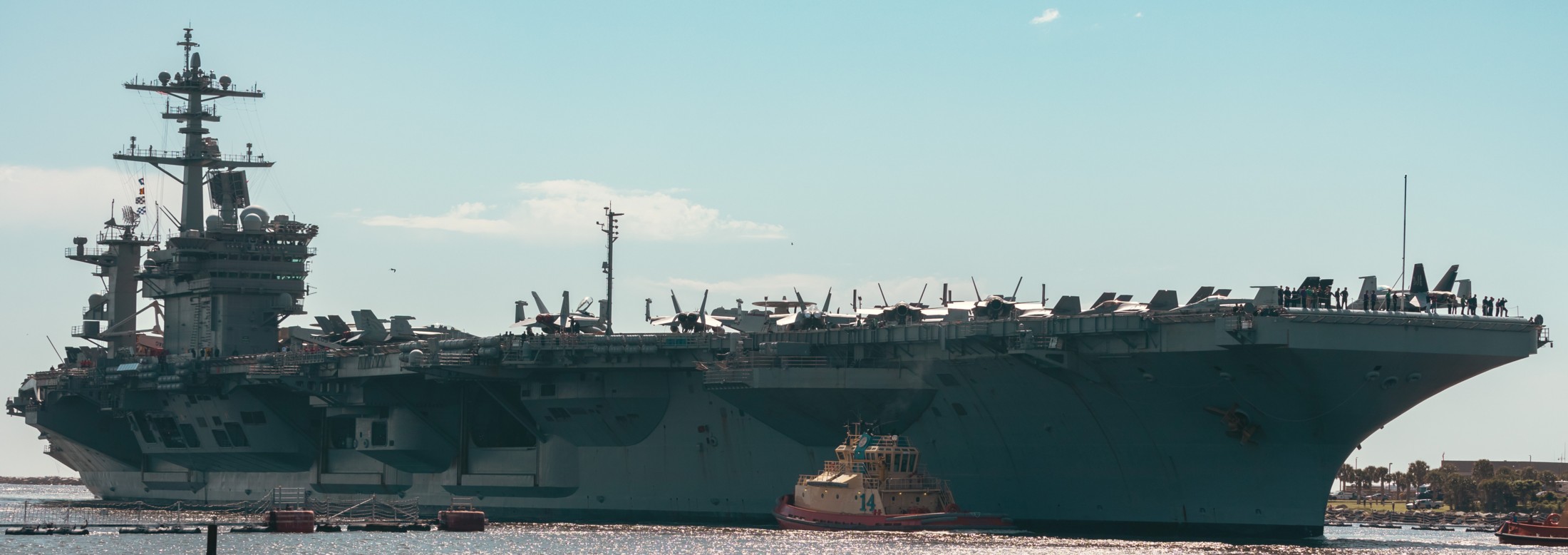 pulling into Naval Station Mayport, Florida - April 29, 2024 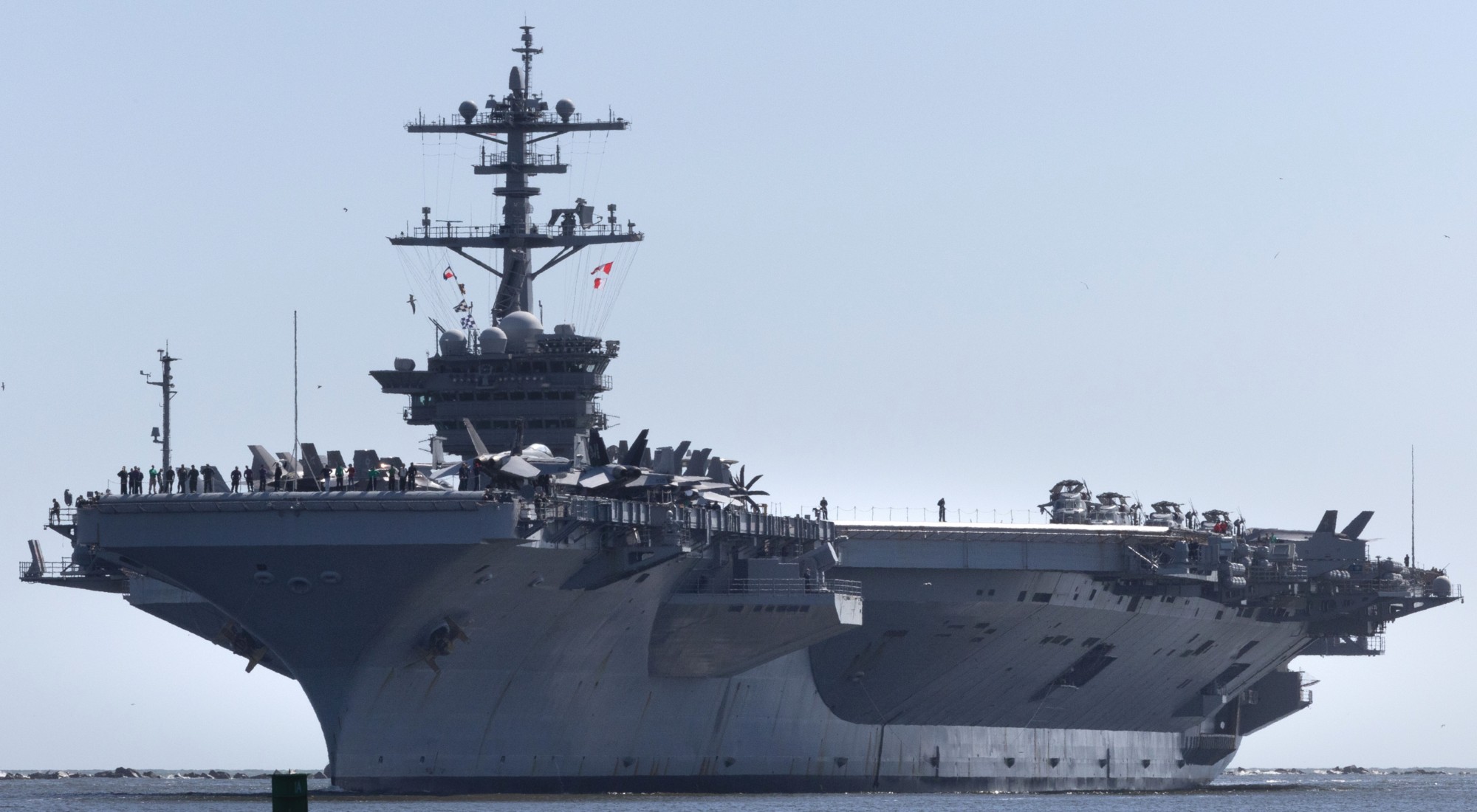 pulling into Naval Station Mayport, Florida - April 29, 2024 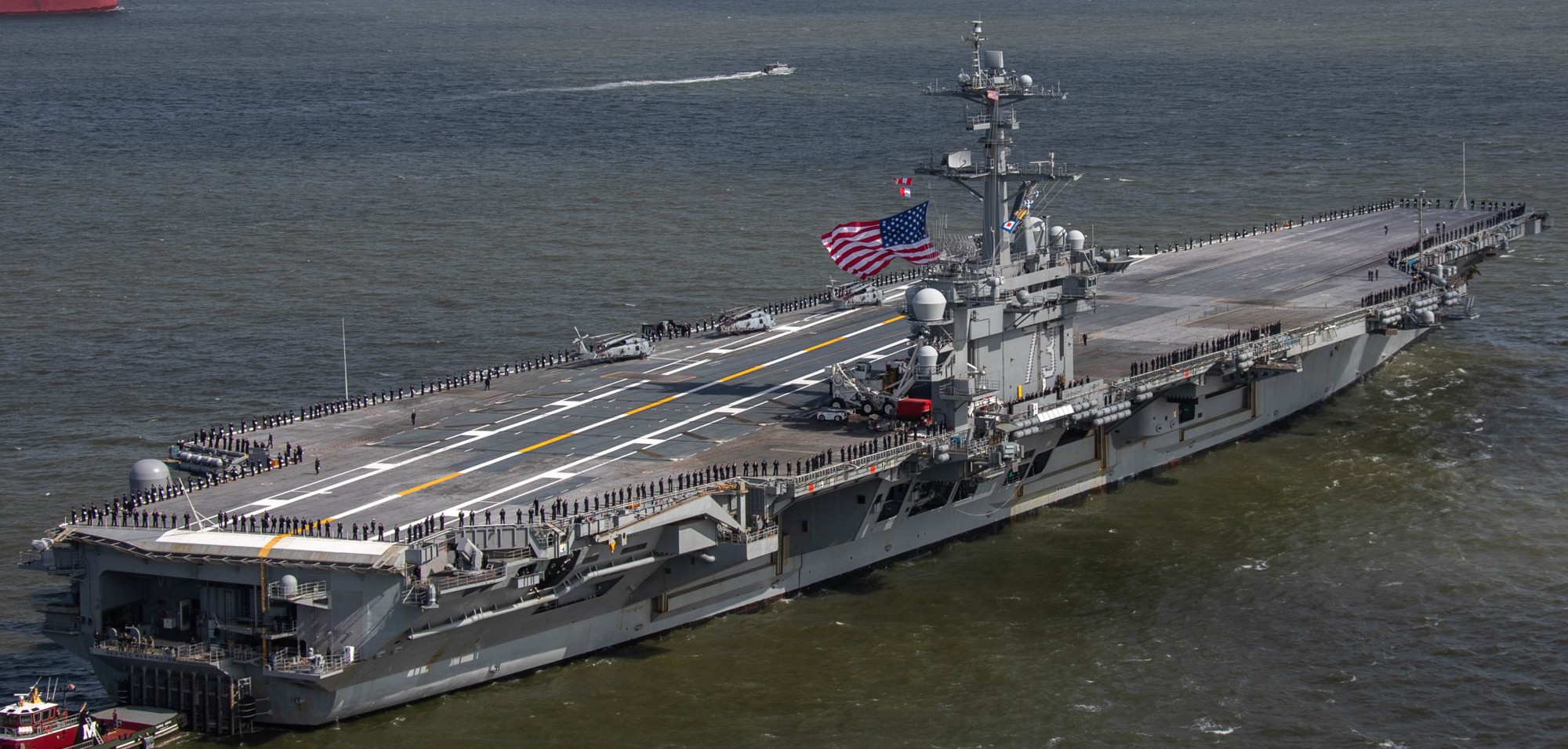 departing Naval Station Norfolk, Virginia - April 25, 2024 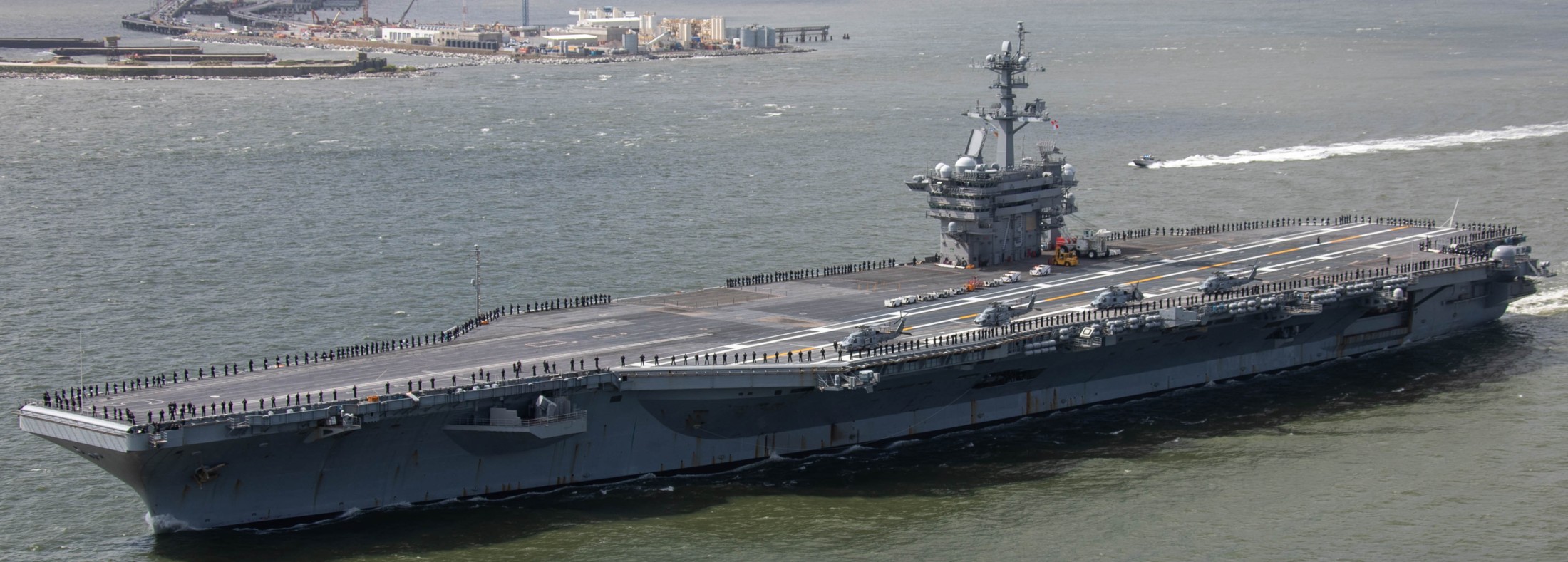 departing Naval Station Norfolk, Virginia - April 25, 2024  Atlantic Ocean - February 2024 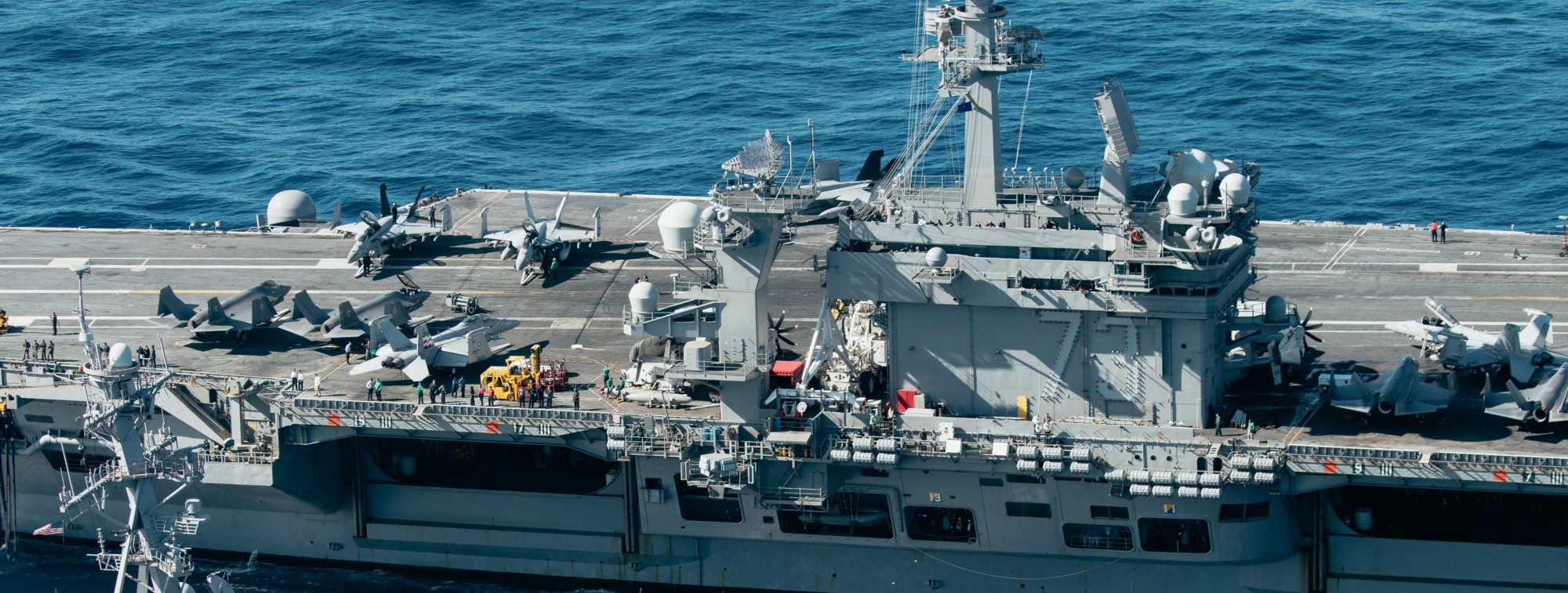 Atlantic Ocean - February 2024 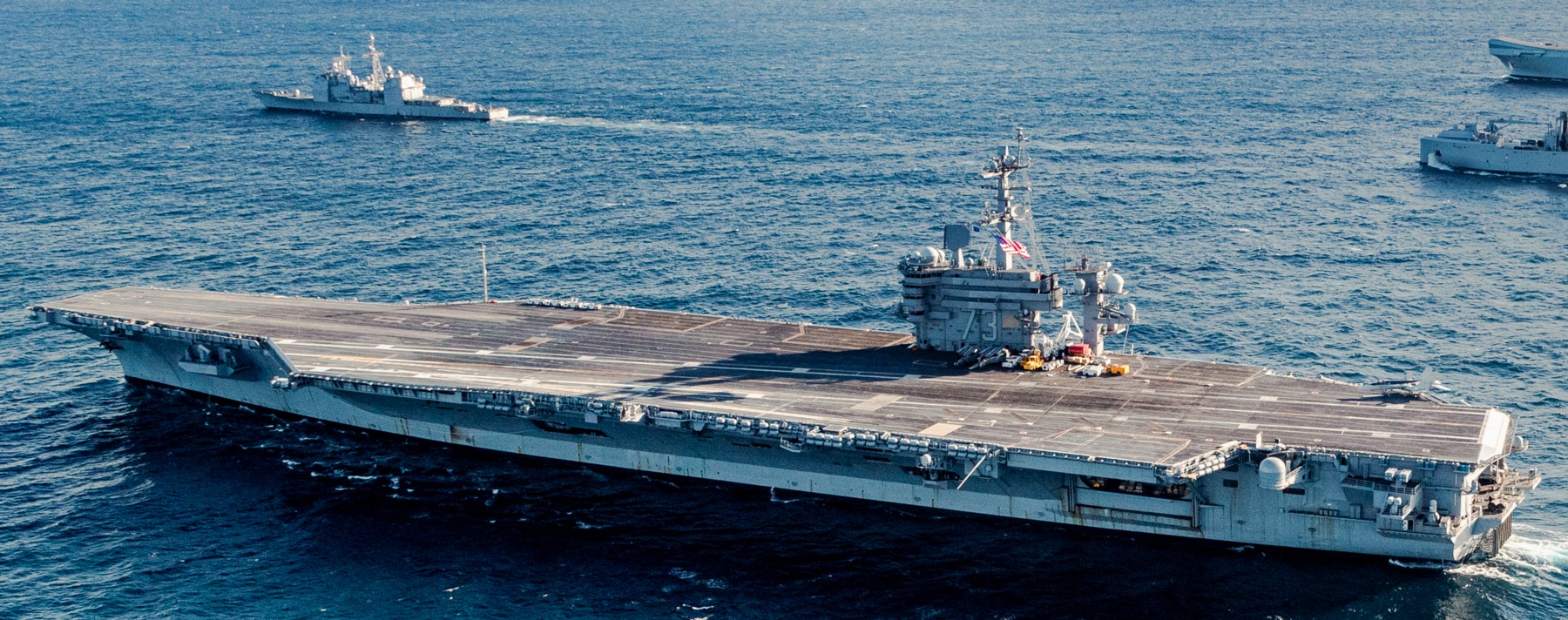 Atlantic Ocean - November 2023 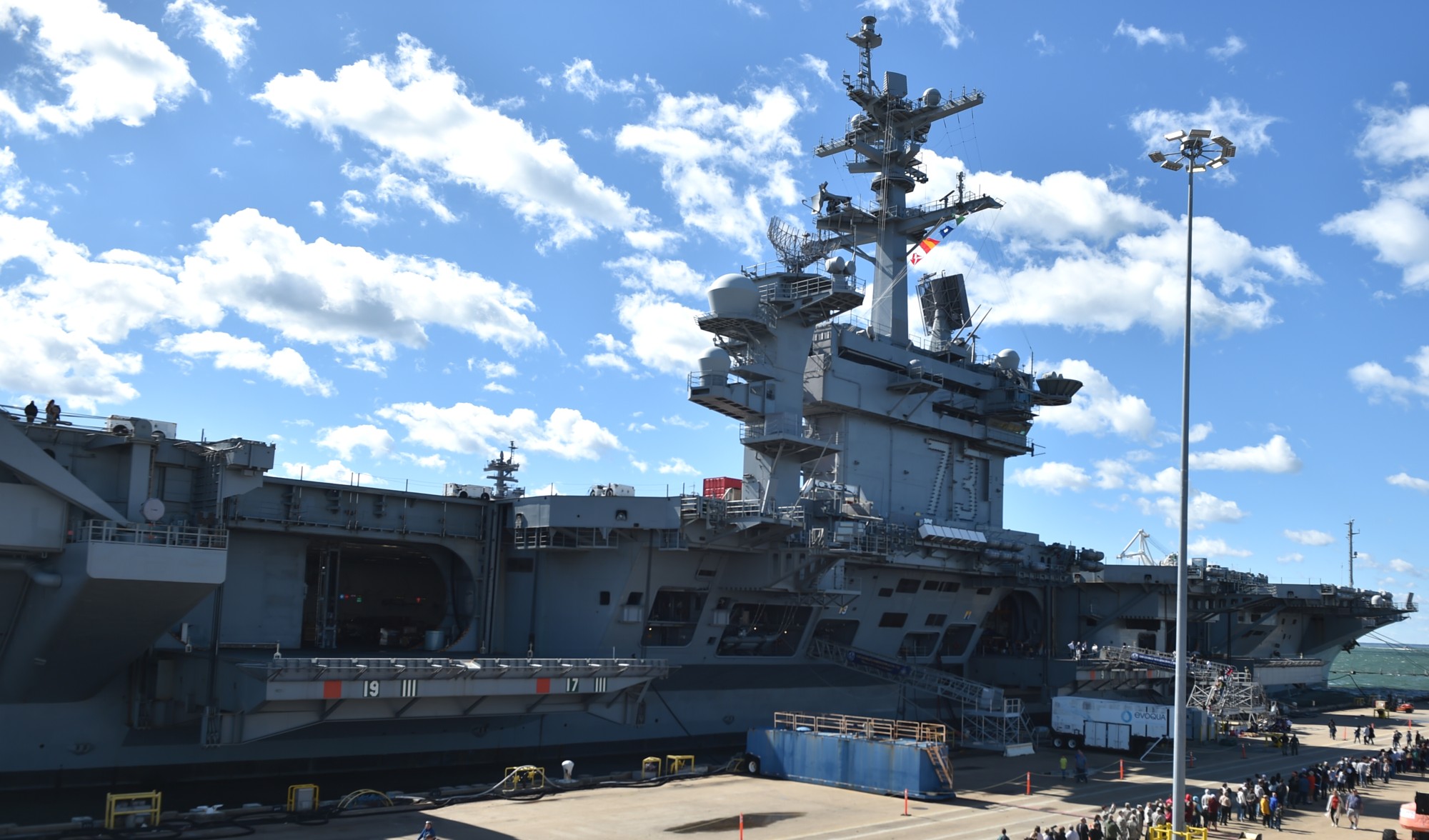 Norfolk Fleet Fest - October 2023 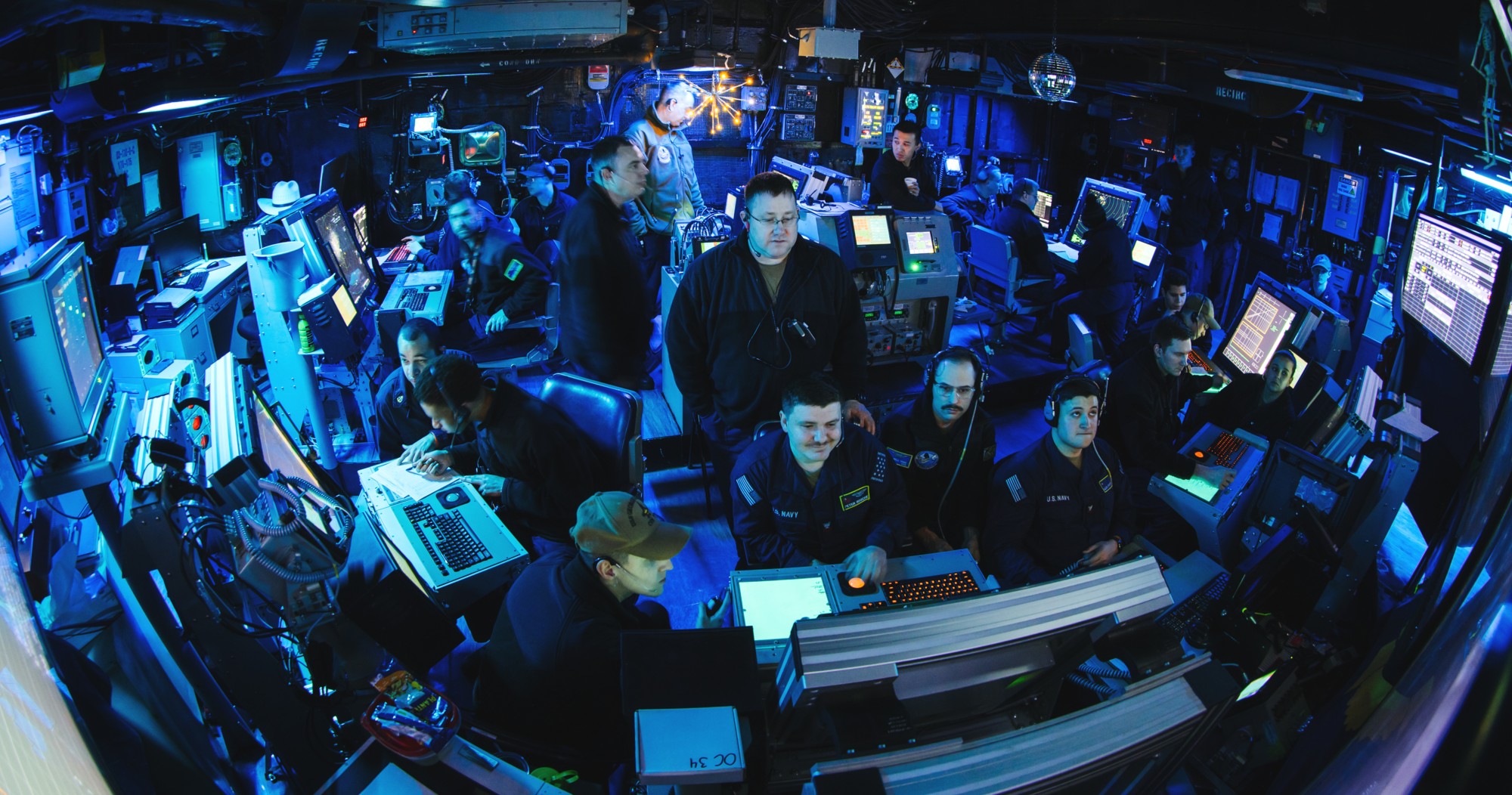 air traffic control ccenter (ATCC) - Atlantic Ocean - February 2024  Atlantic Ocean - August 2023 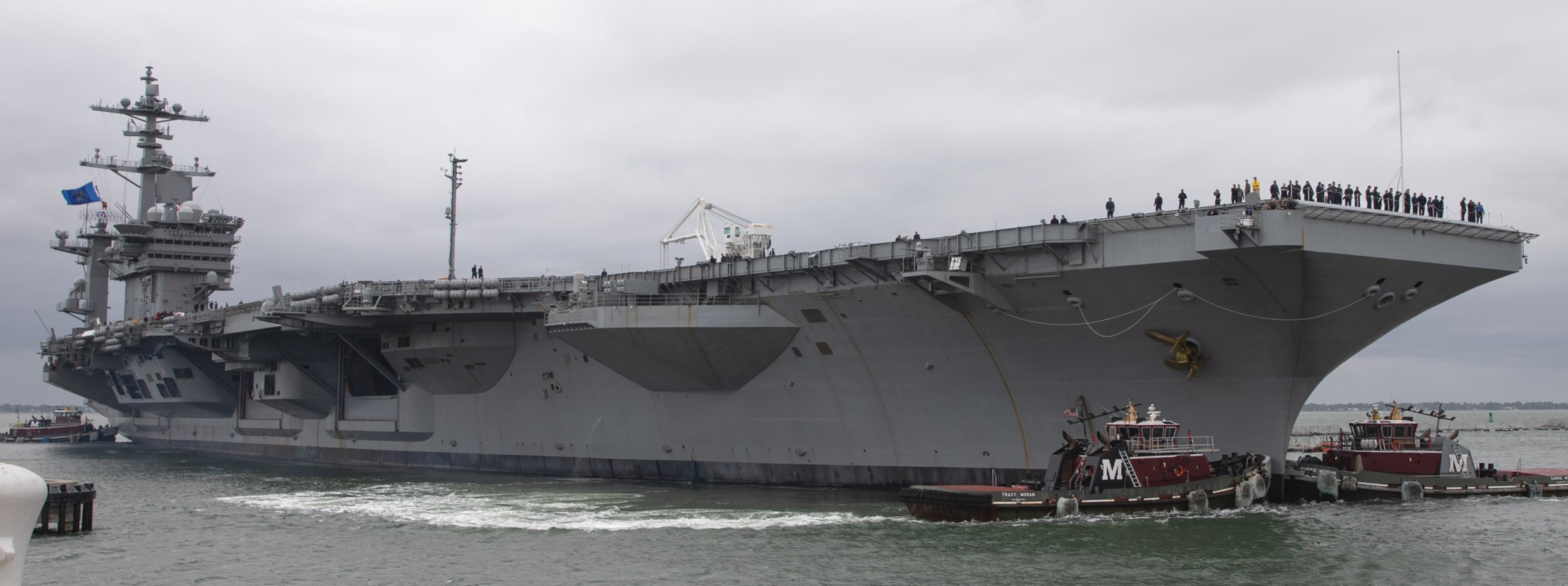 returning to Naval Station Norfolk, Virginia after sea trials - May 2023 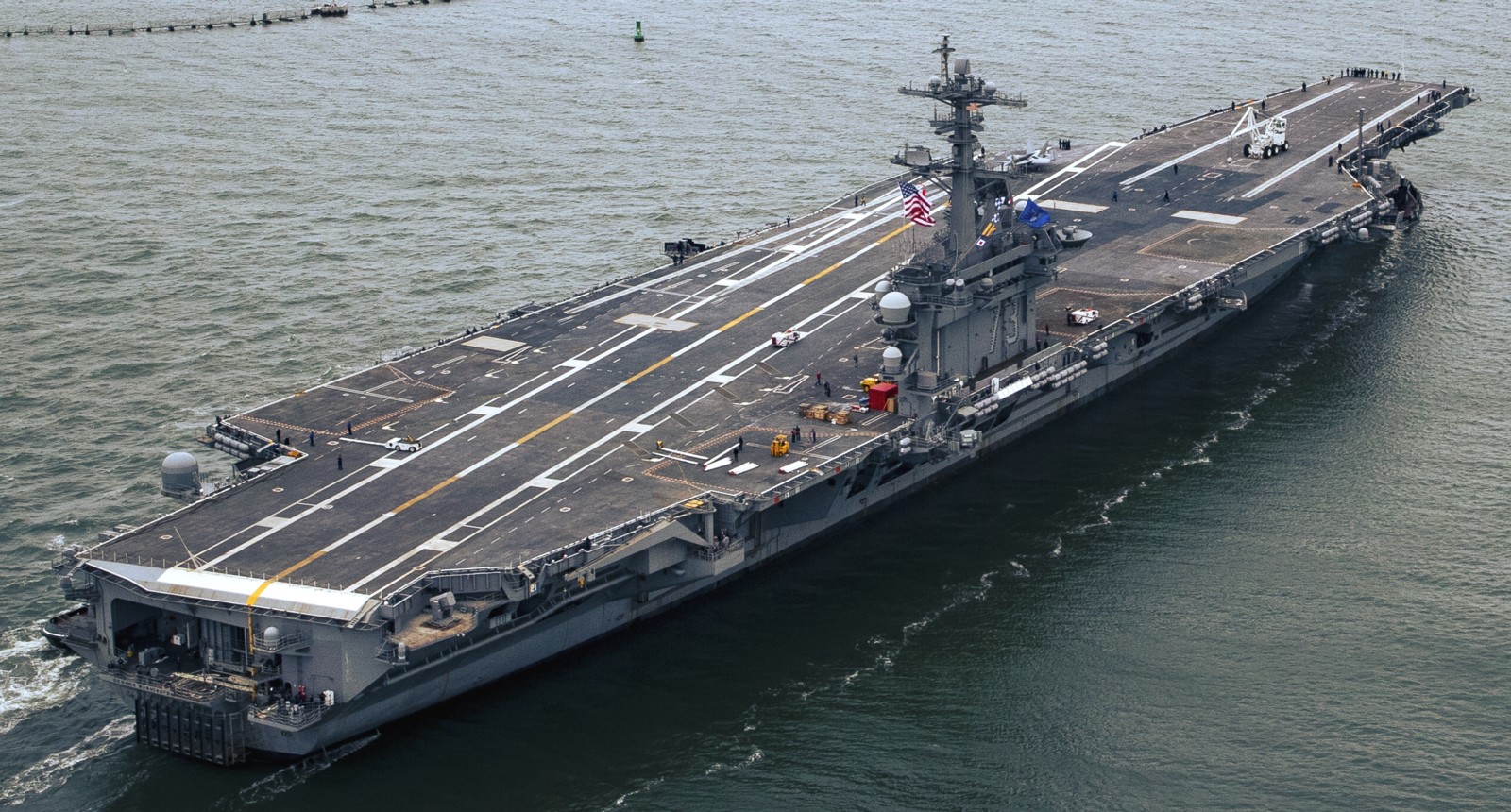 returning to Naval Station Norfolk, Virginia after sea trials - May 2023 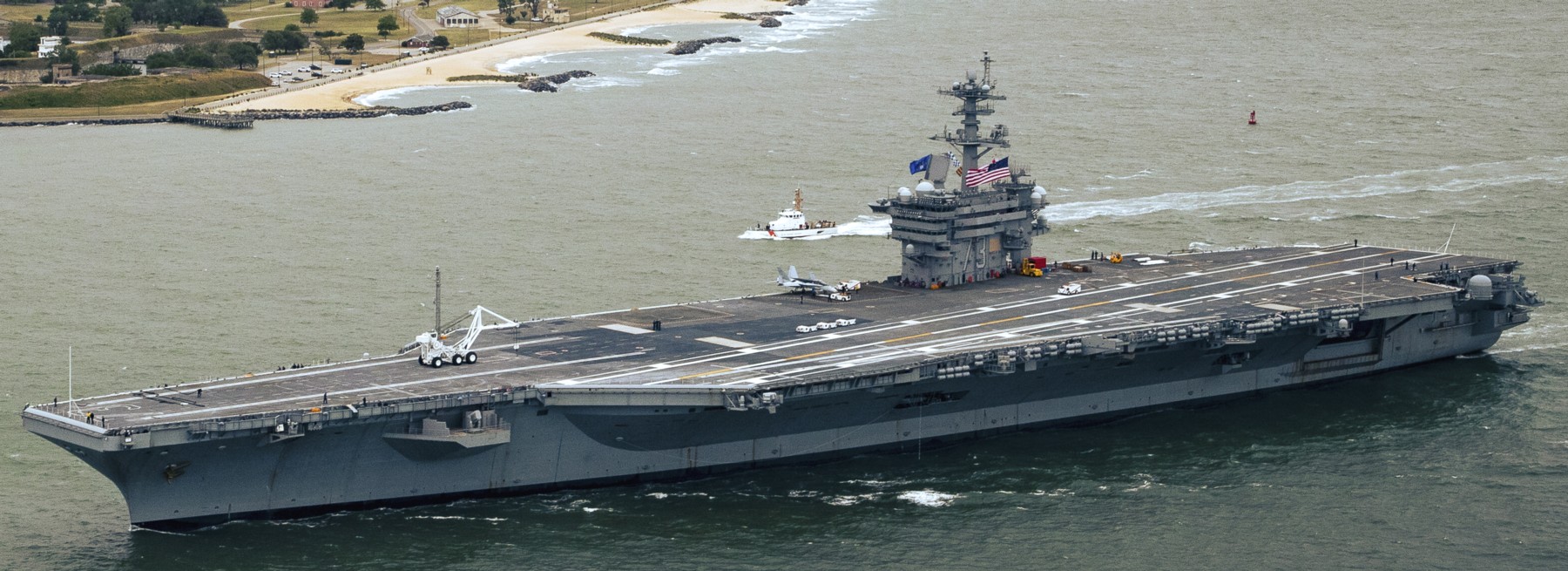 returning to Naval Station Norfolk, Virginia after sea trials - May 2023 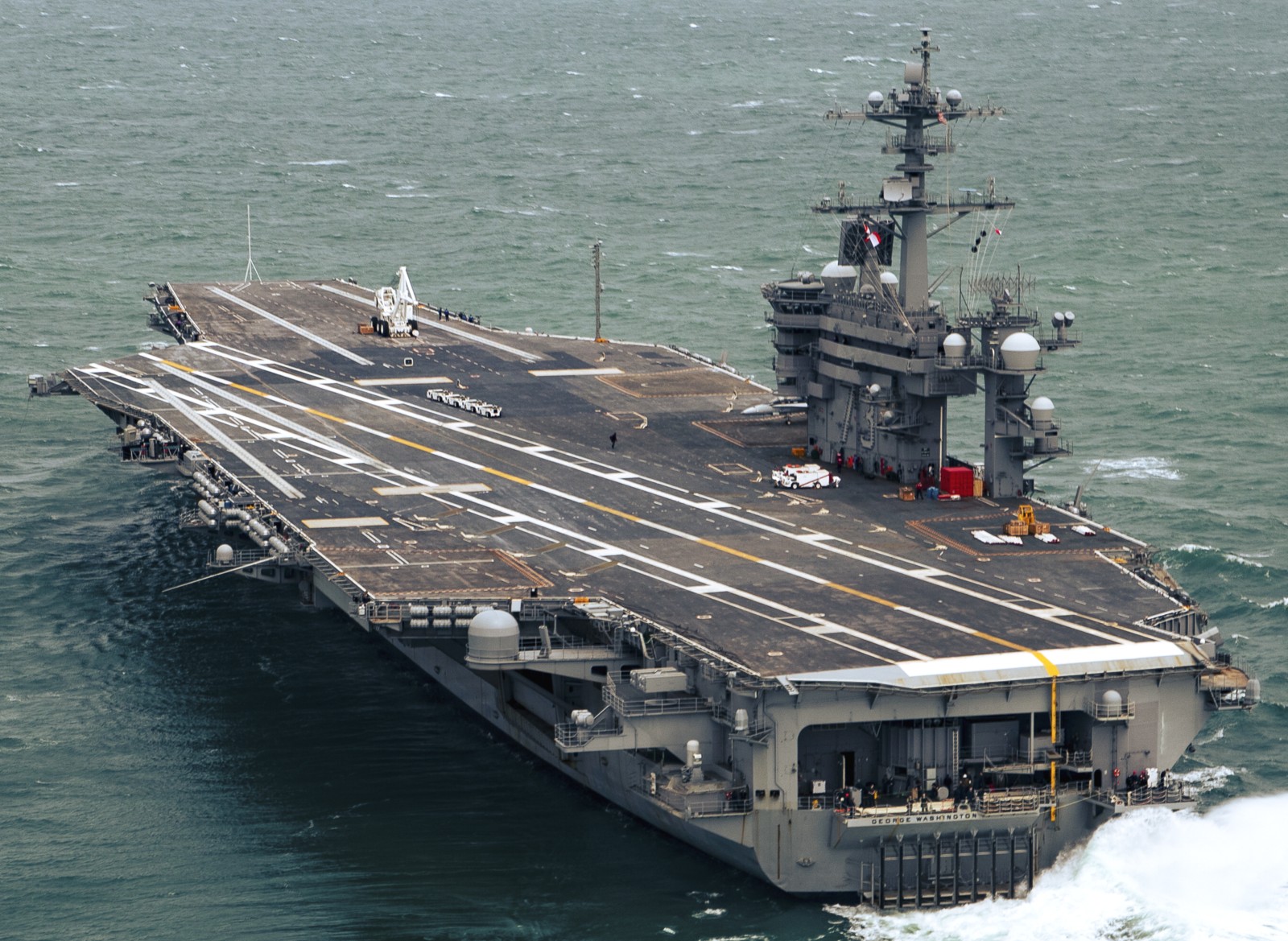 sea trials after Refueling and Complex Overhaul (RCOH) - Atlantic Ocean - May 2023 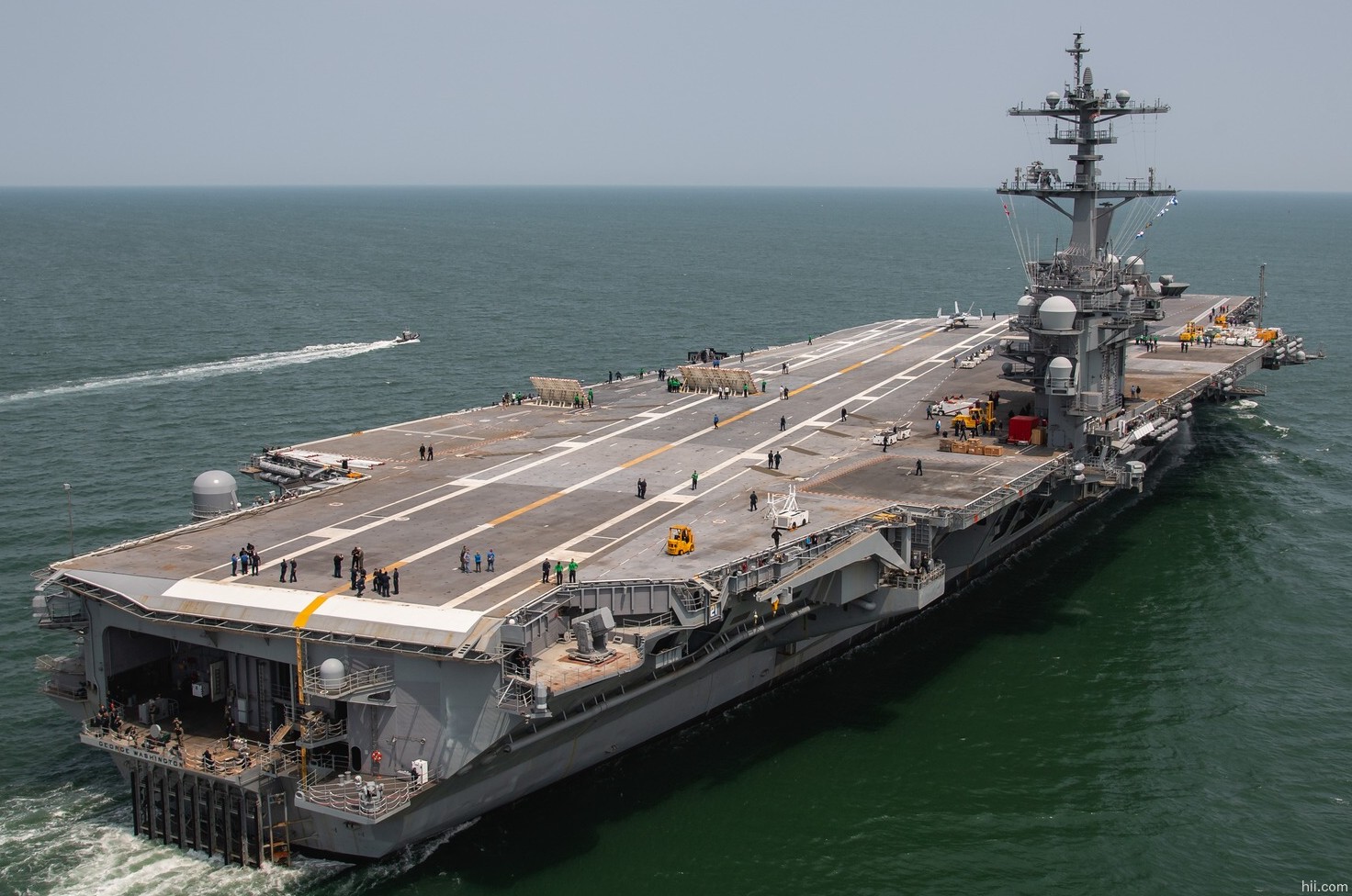 departing Newport News Shipbuilding, Virginia after her Refueling and Complex Overhaul (RCOH) - May 2023 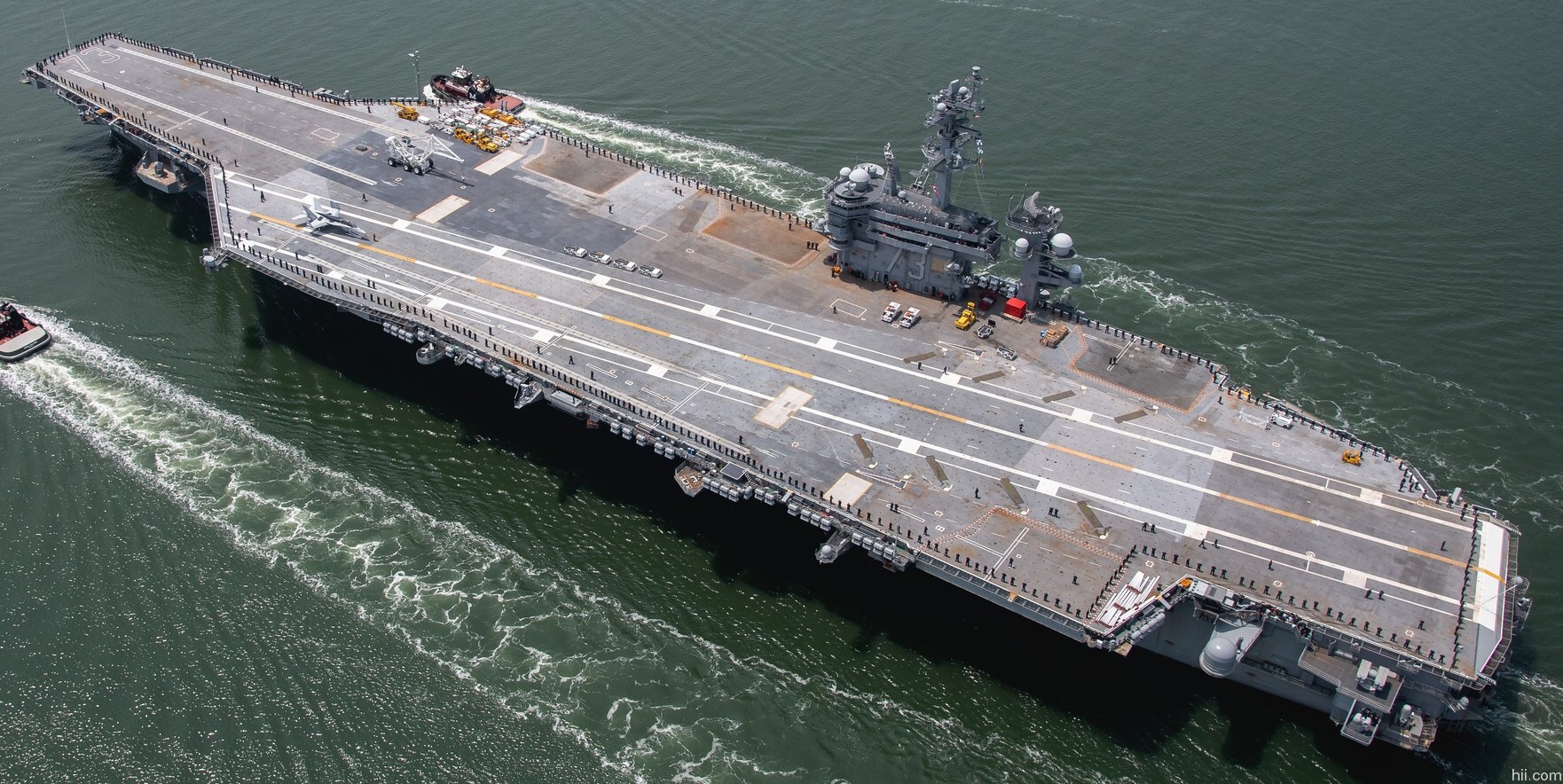 departing Newport News Shipbuilding, Virginia after her Refueling and Complex Overhaul (RCOH) - May 2023 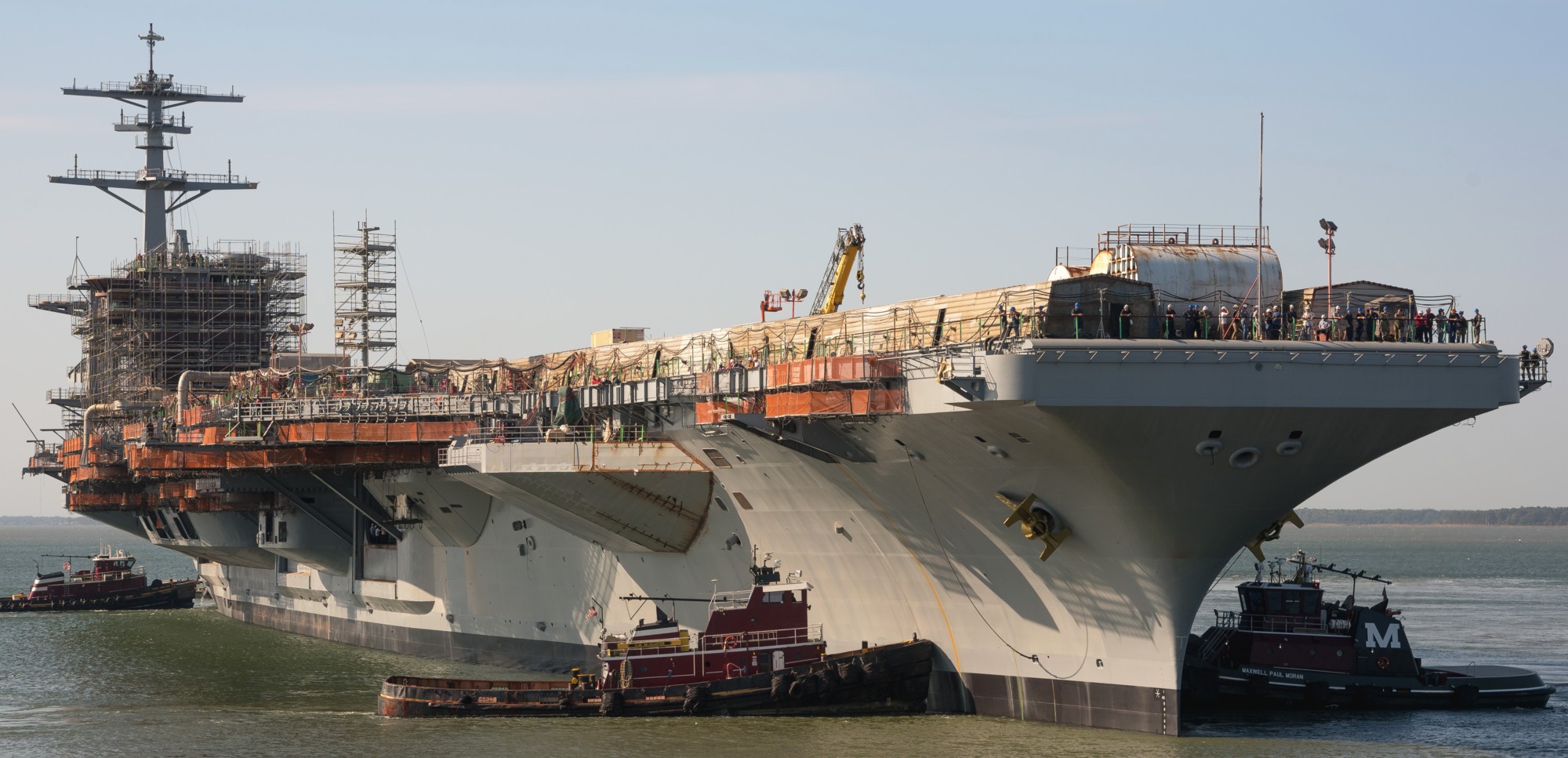 at Newport News Shipbuilding, Virginia during her Refueling and Complex Overhaul (RCOH) - September 2019 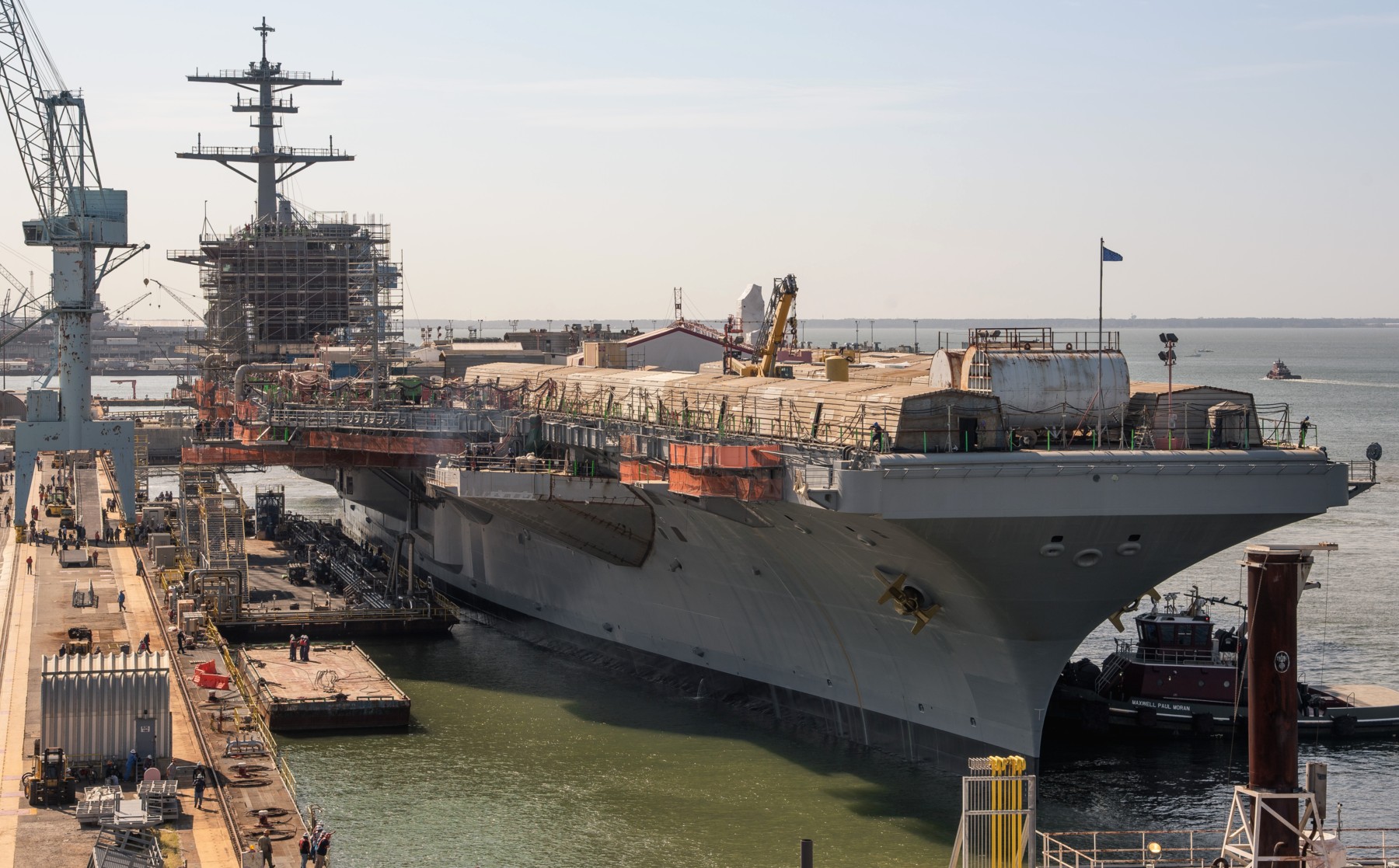 at Newport News Shipbuilding, Virginia during her Refueling and Complex Overhaul (RCOH) - September 2019  USS George Washington was towed from Norfolk to Newport News Shipbuilding, Virginia for her upcoming RCOH - August 2017 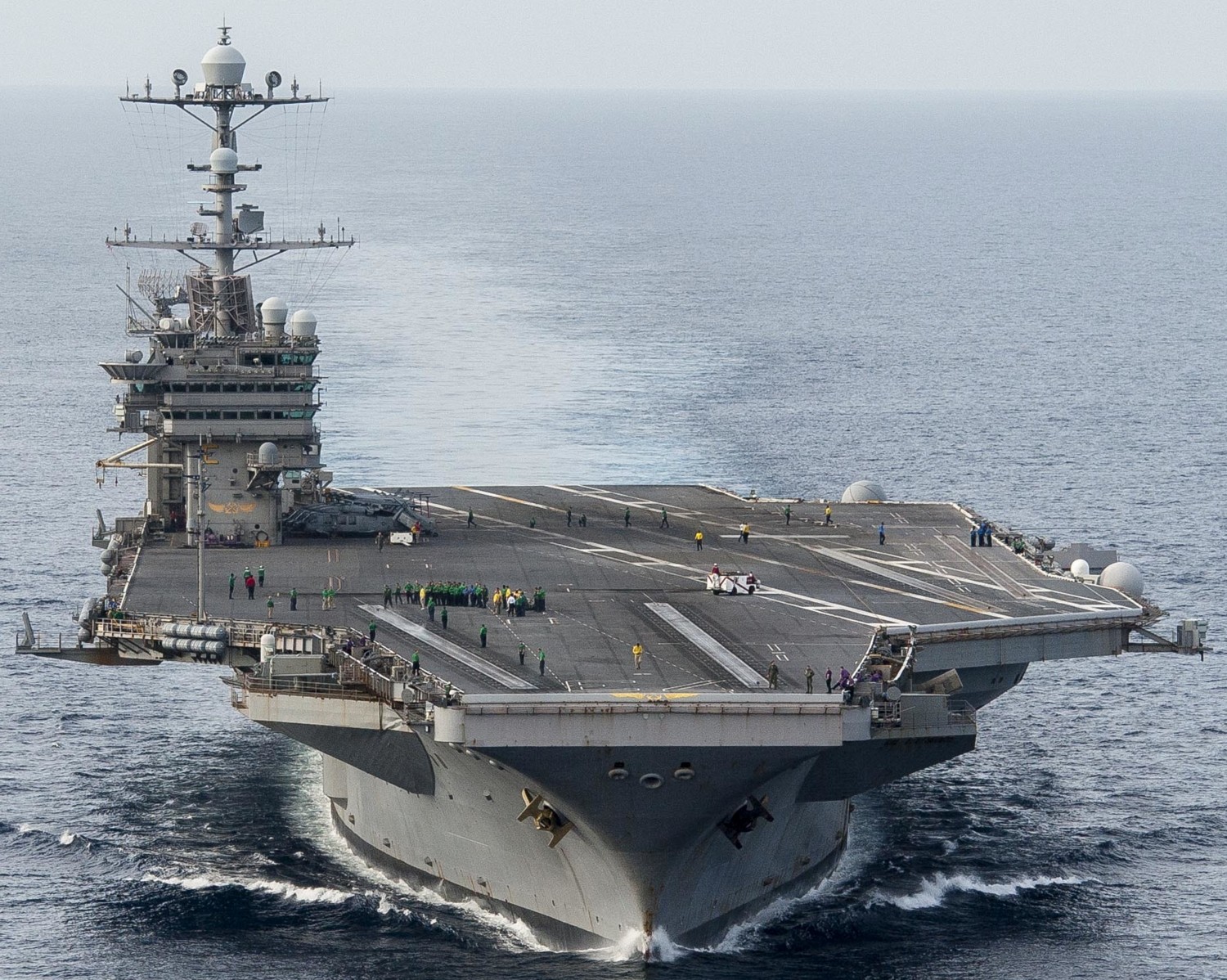 carrier qualifications - Atlantic Ocean - December 2016 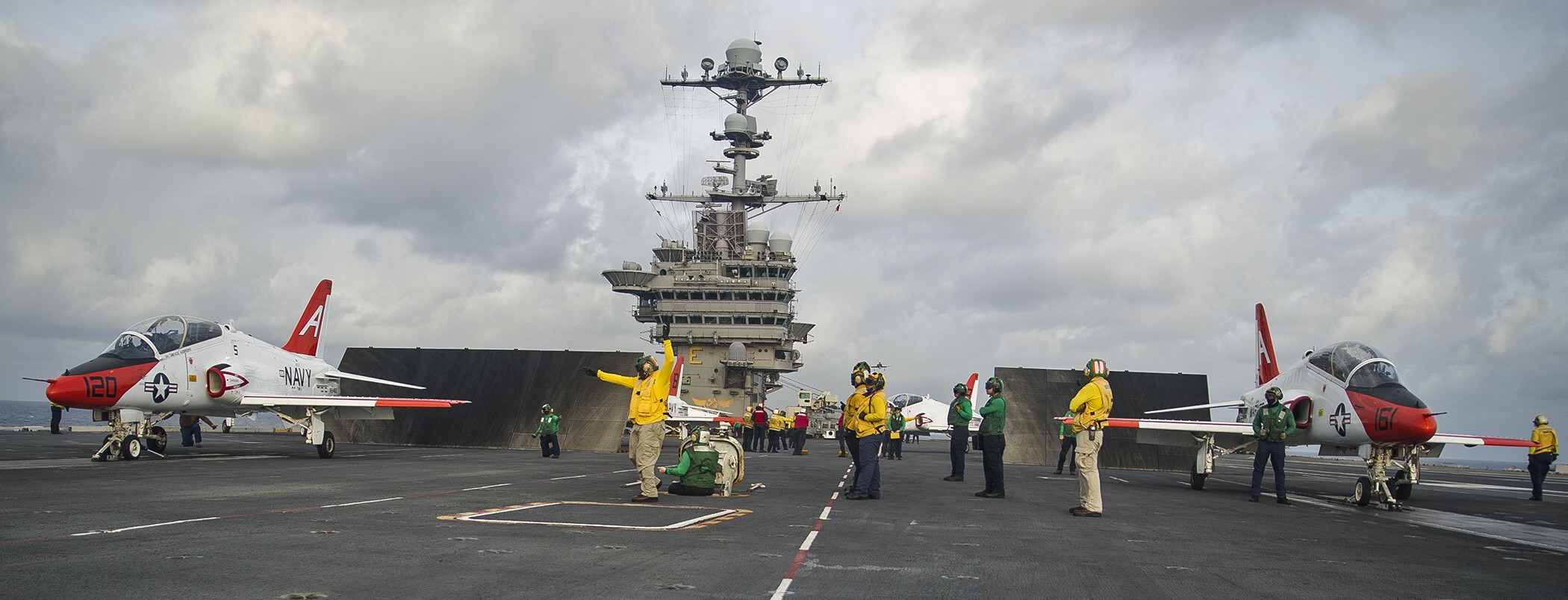 carrier qualifications - Atlantic Ocean - December 2016  friends and family day cruise - Atlantic Ocean - October 2016 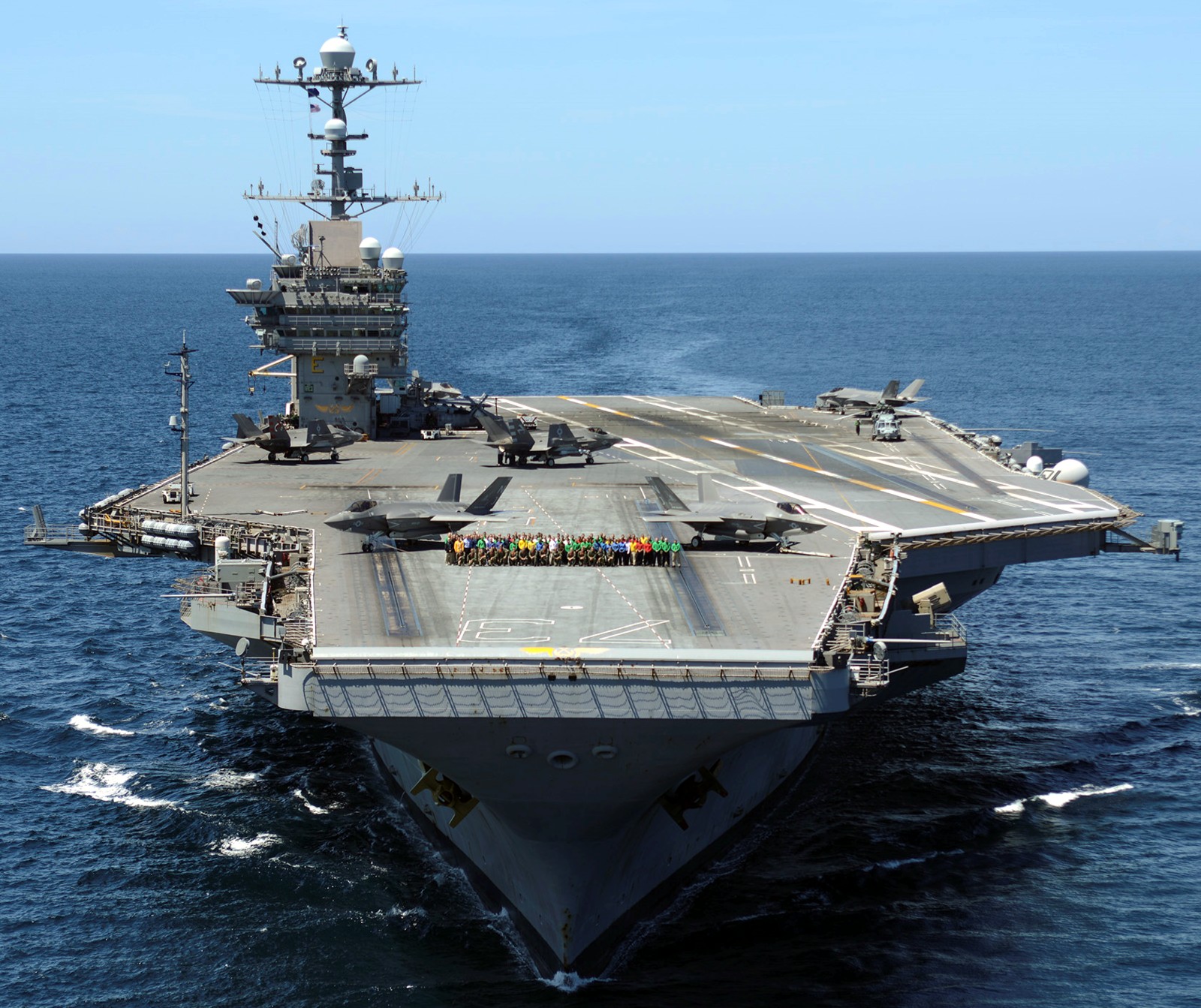 F-35C Lightning II's of VFA-101 and VX-23 during flight tests - Atlantic Ocean - August 2016 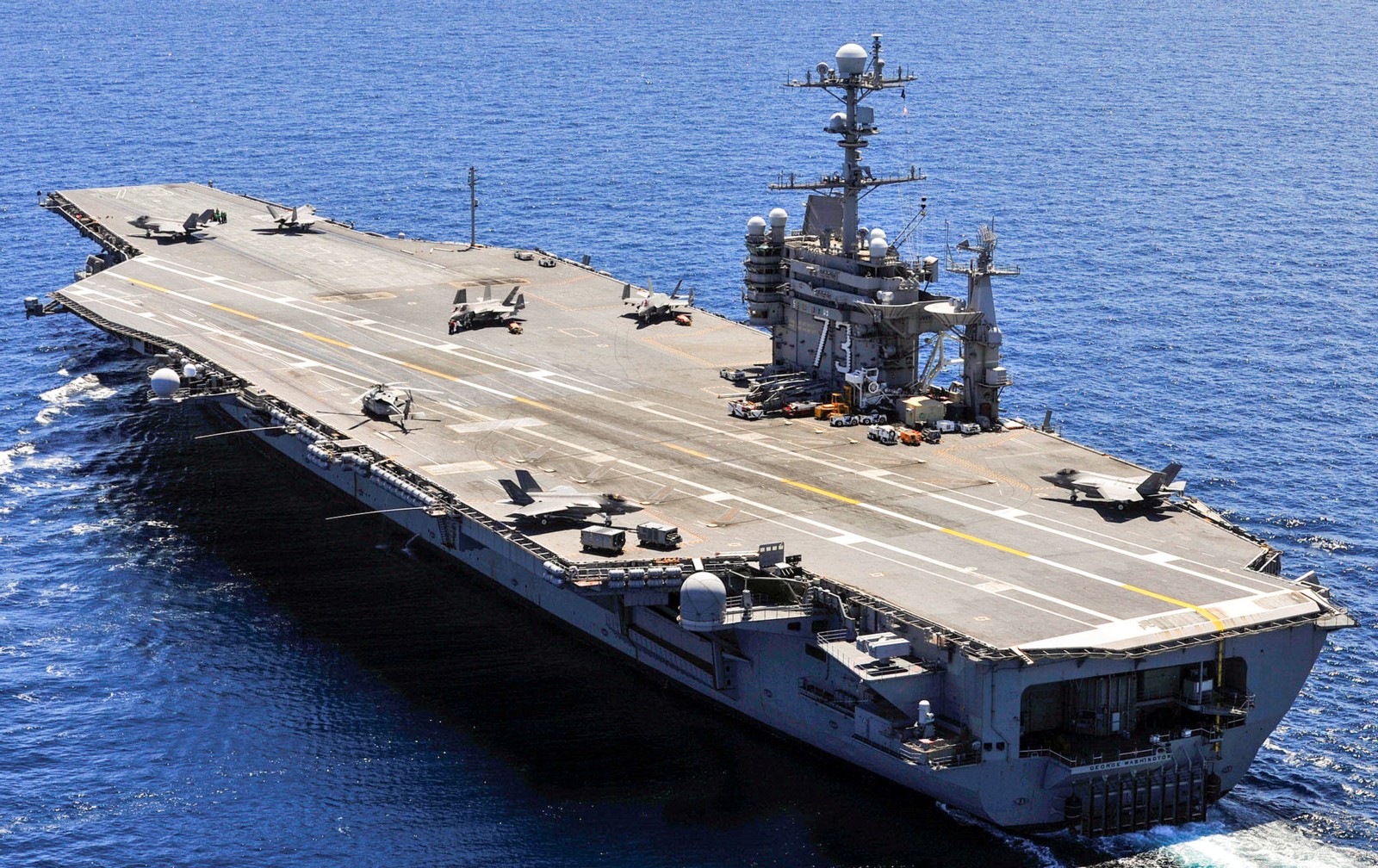 F-35C Lightning II's of VFA-101 and VX-23 during flight tests - Atlantic Ocean - August 2016 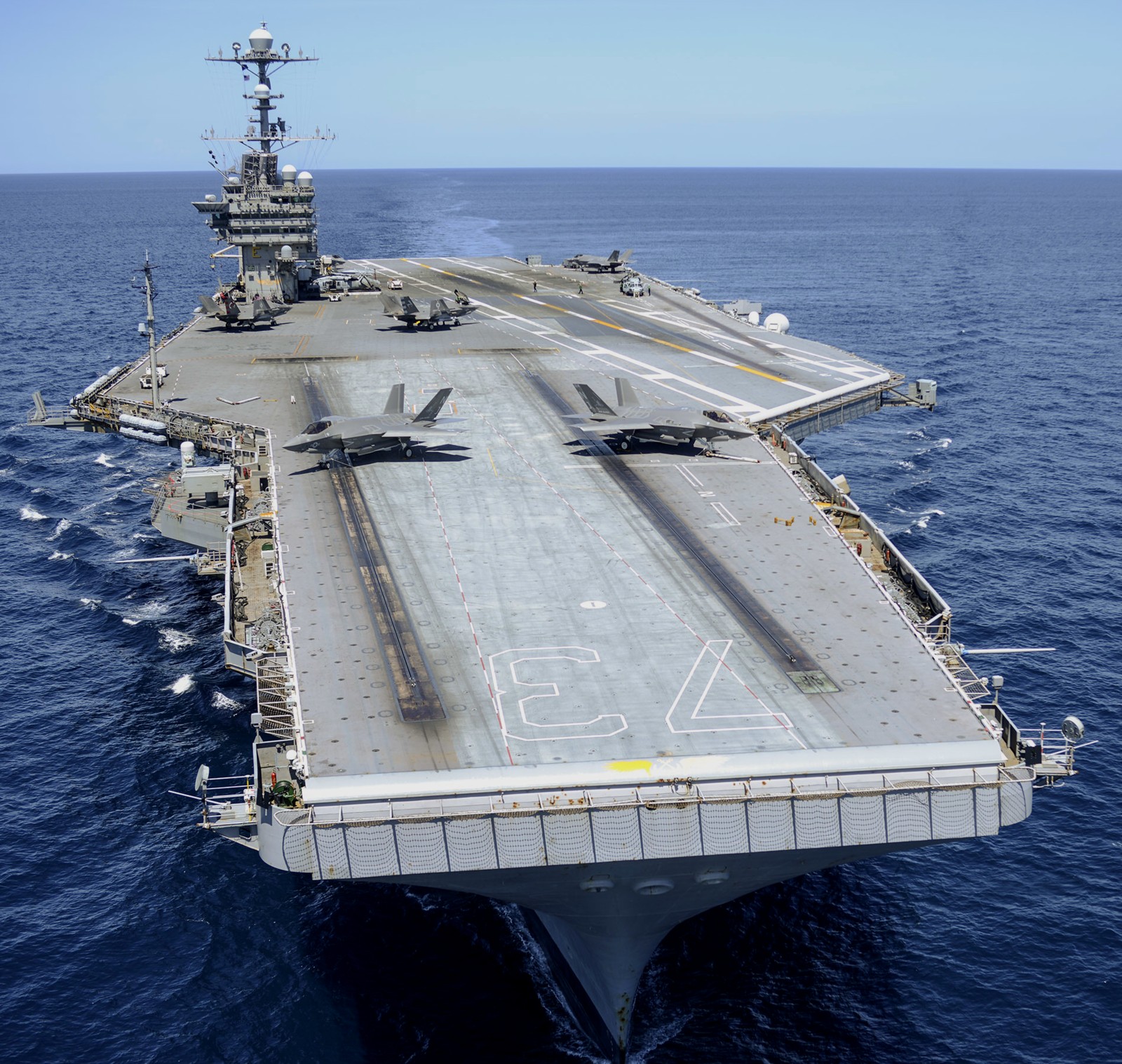 F-35C Lightning II's of VFA-101 and VX-23 during flight tests - Atlantic Ocean - August 2016 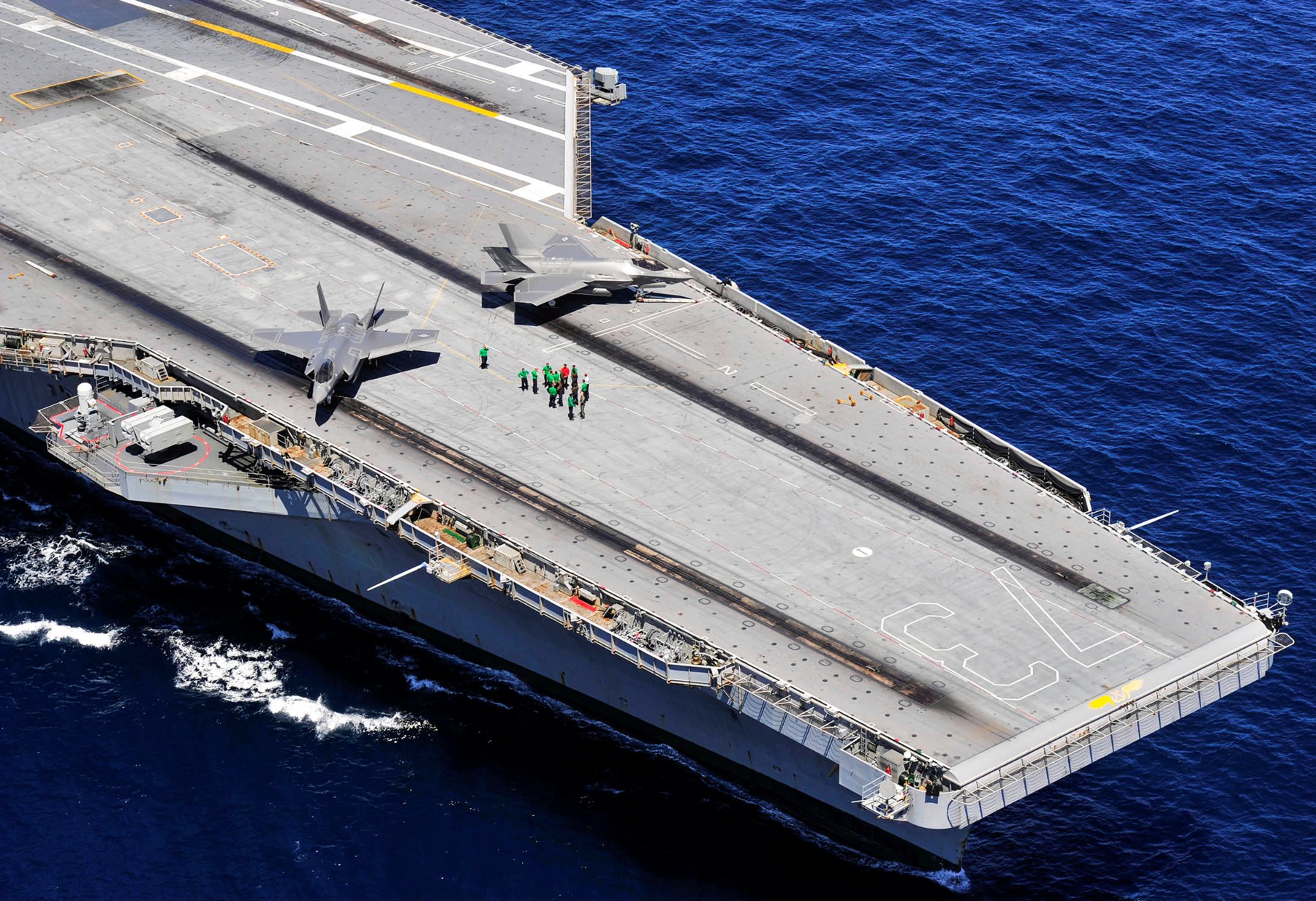 F-35C Lightning II's of VFA-101 and VX-23 during flight tests - Atlantic Ocean - August 2016 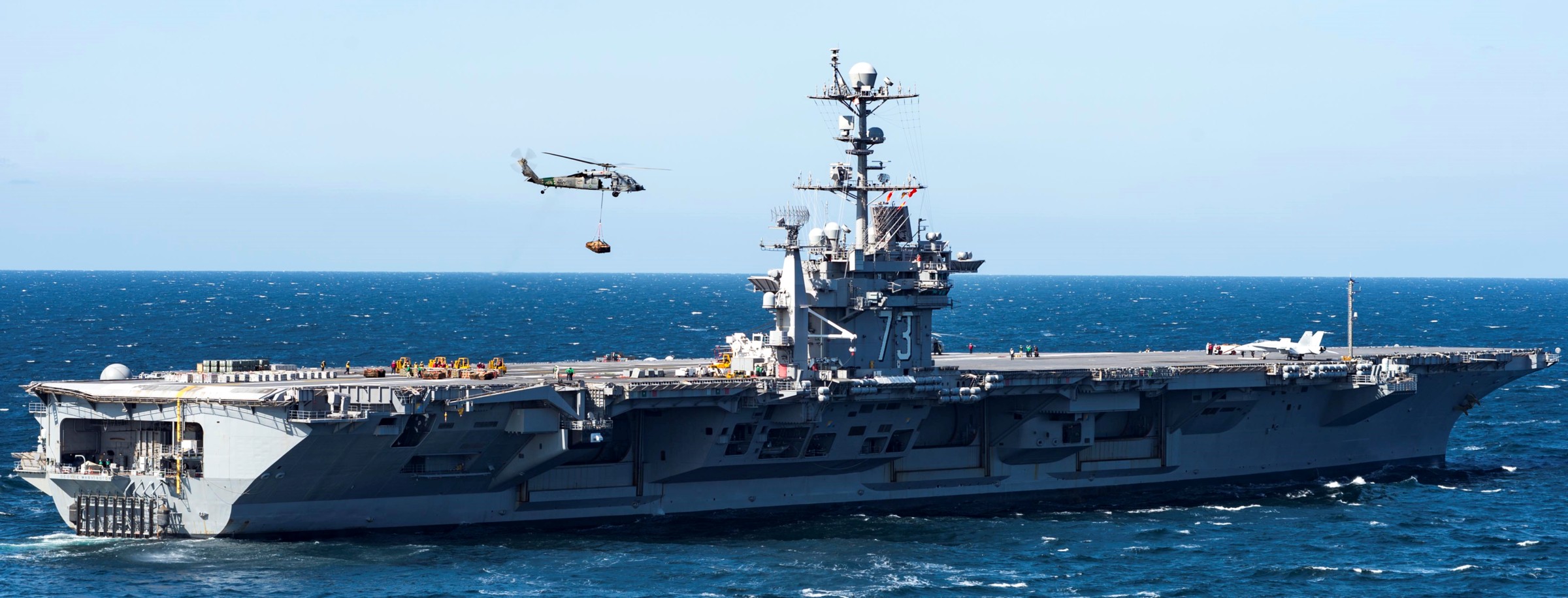 ammunition offload - Atlantic Ocean - April 2016 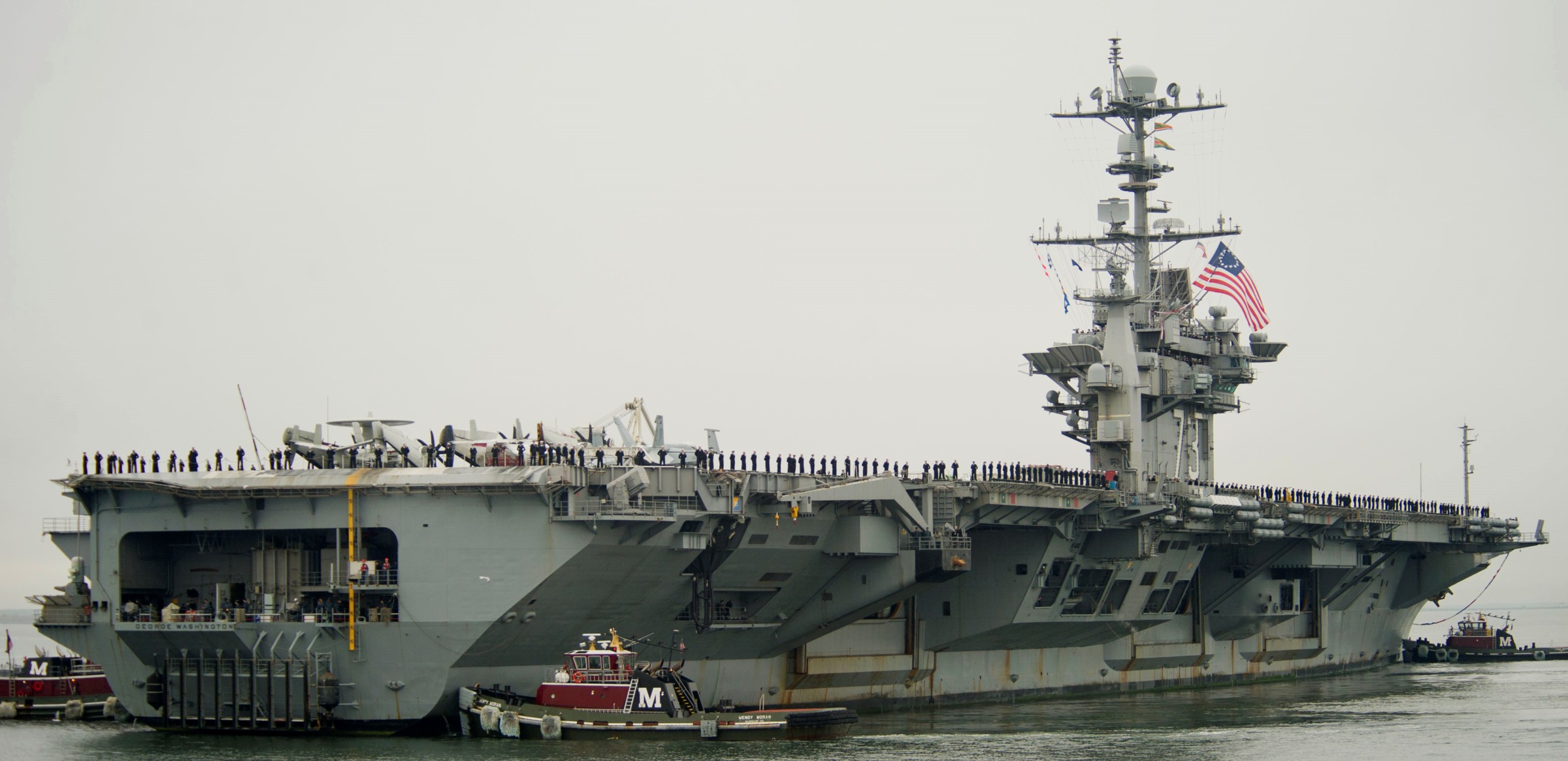 arriving at Naval Station Norfolk, Virginia - December 2015 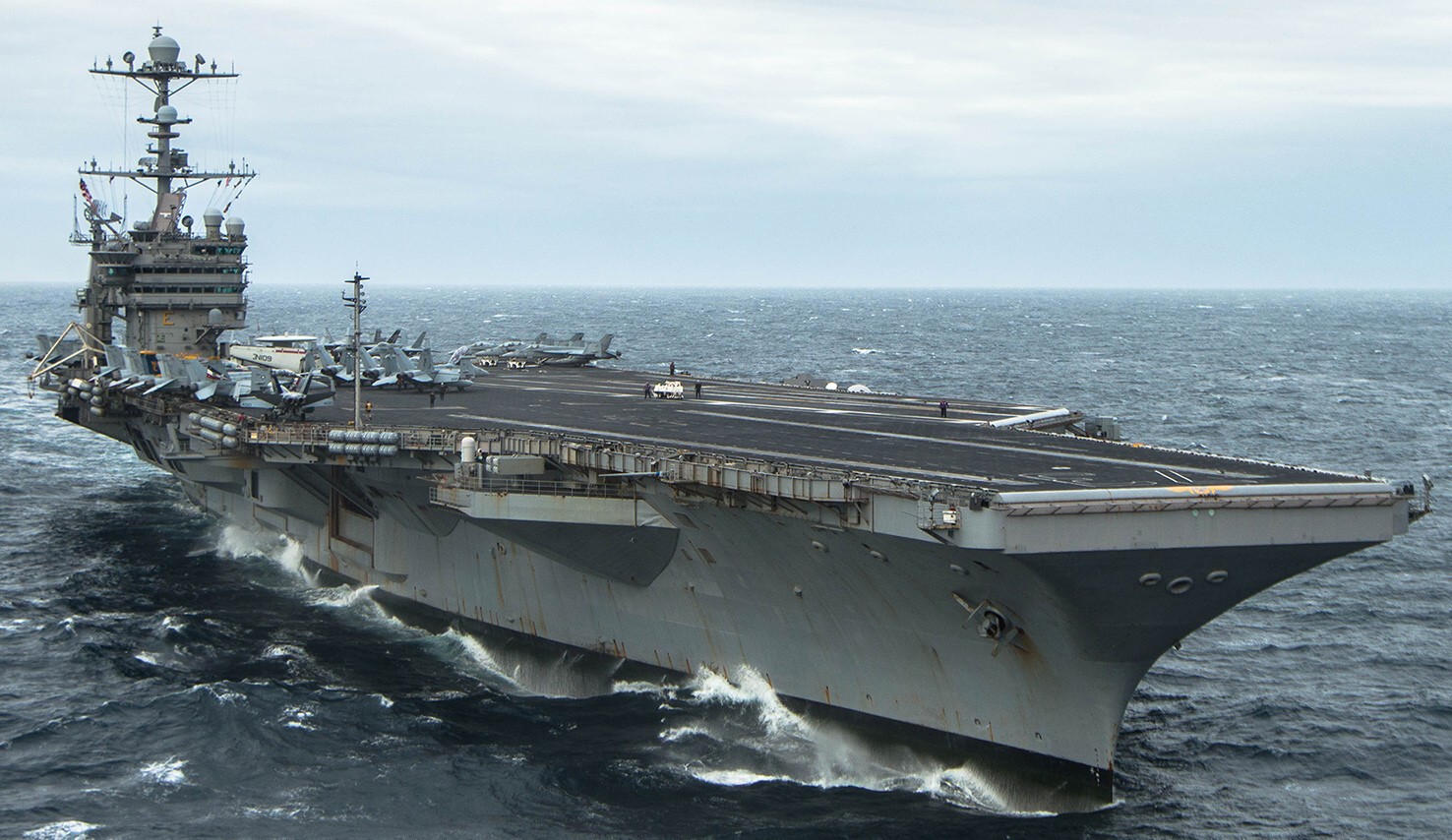 with CVW-2 embarked - exercise UNITAS 2015 - South Atlantic Ocean - November 2015 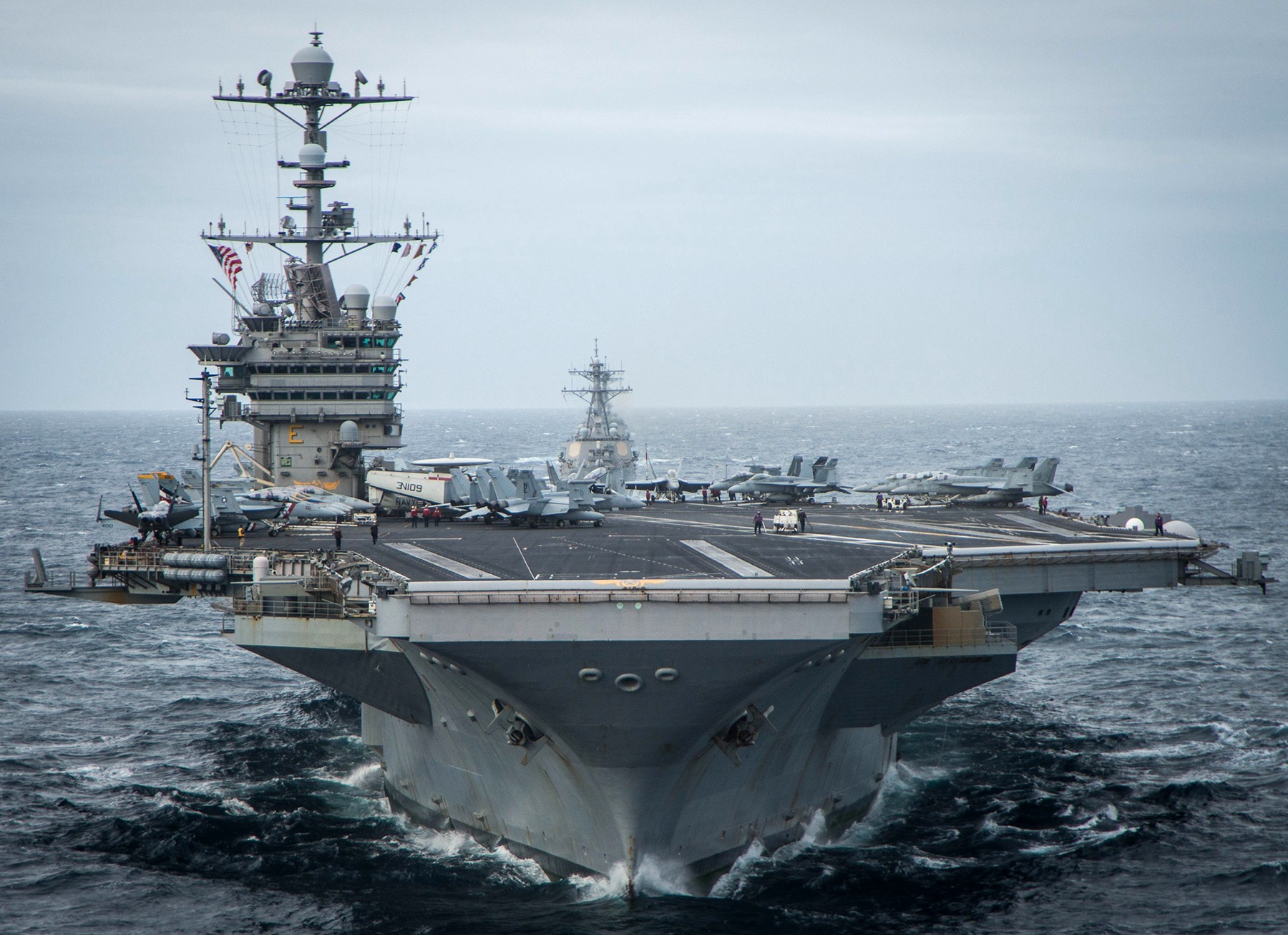 with CVW-2 embarked - exercise UNITAS 2015 - South Atlantic Ocean - November 2015 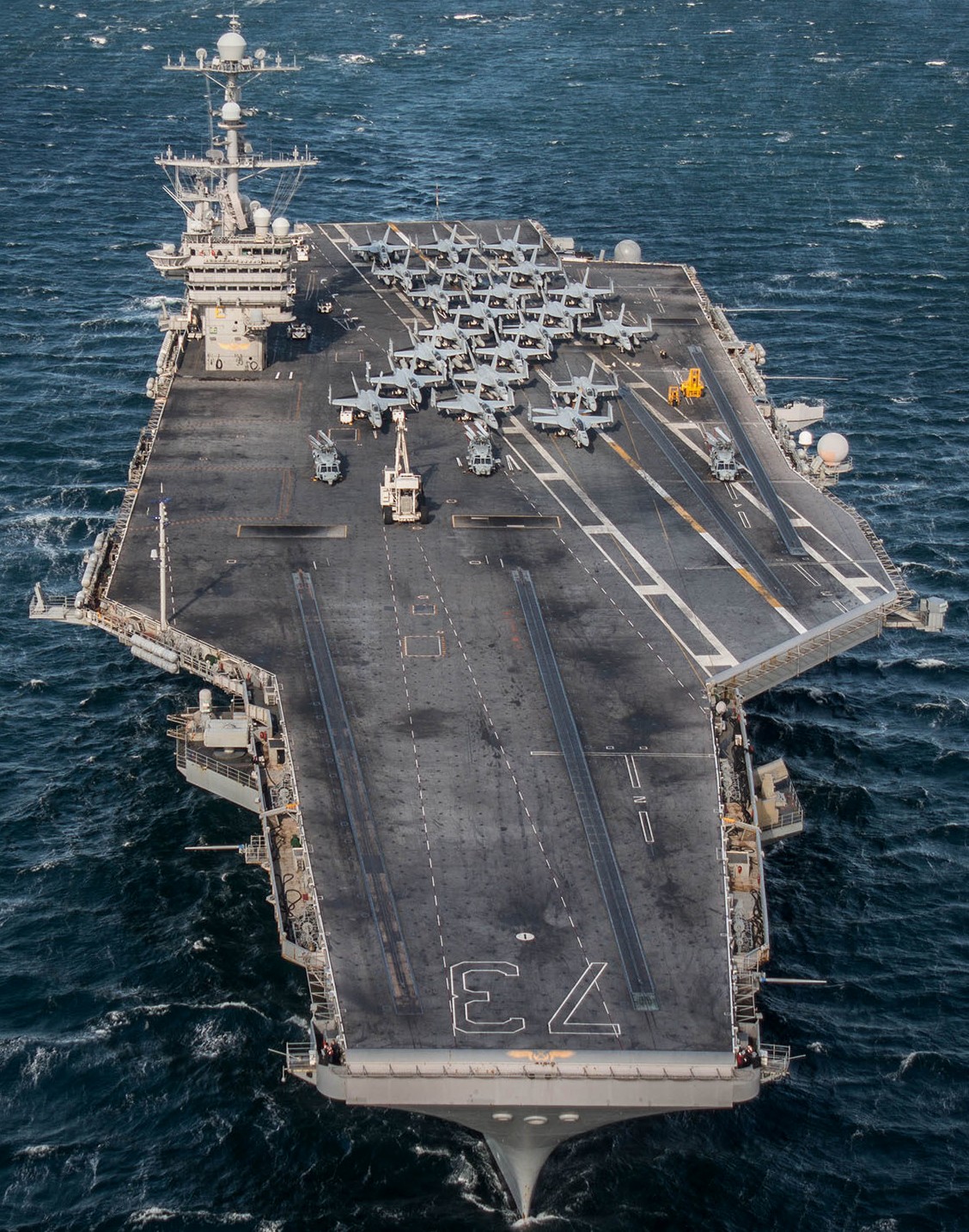 with CVW-2 embarked - Strait of Magellan - November 2015 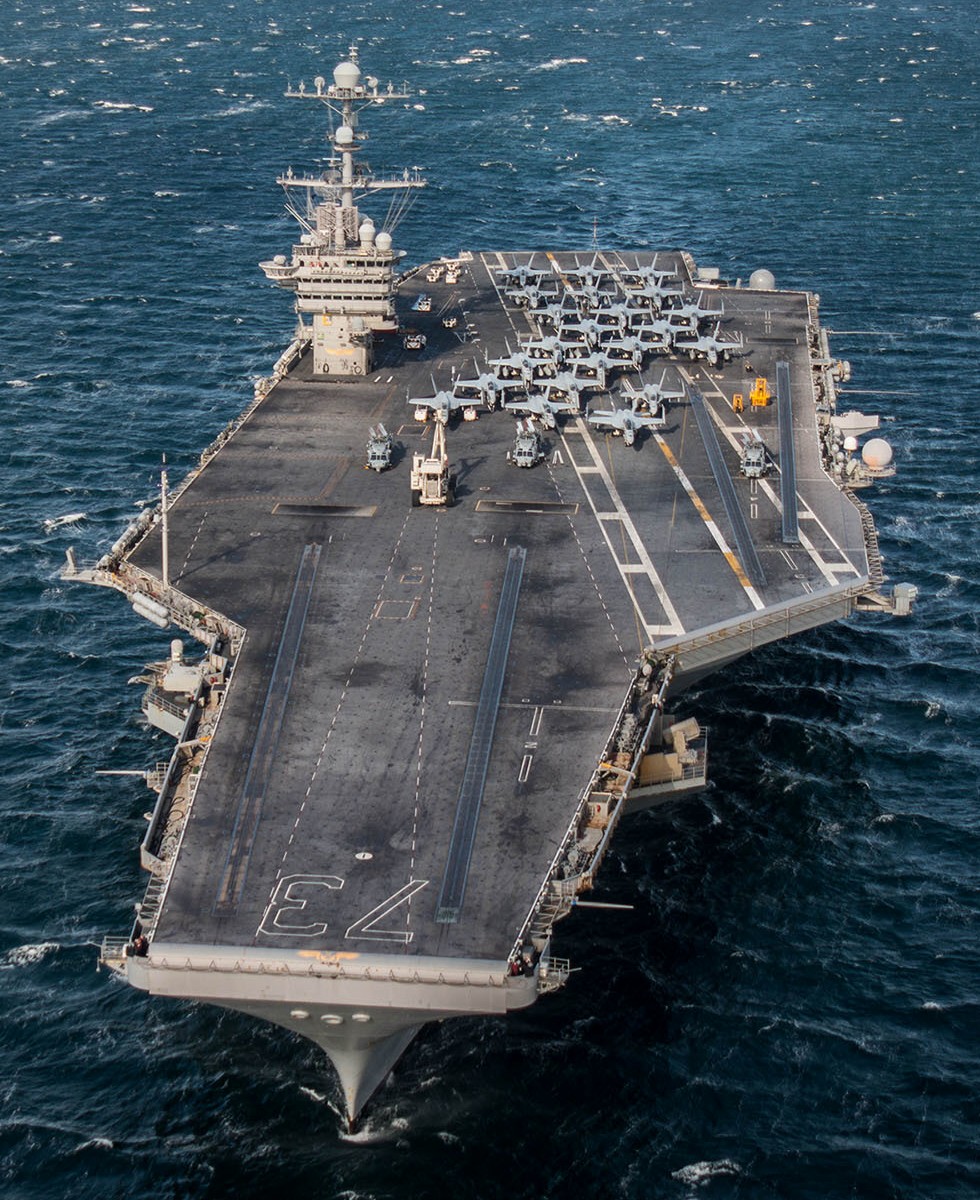 with CVW-2 embarked - Strait of Magellan - November 2015 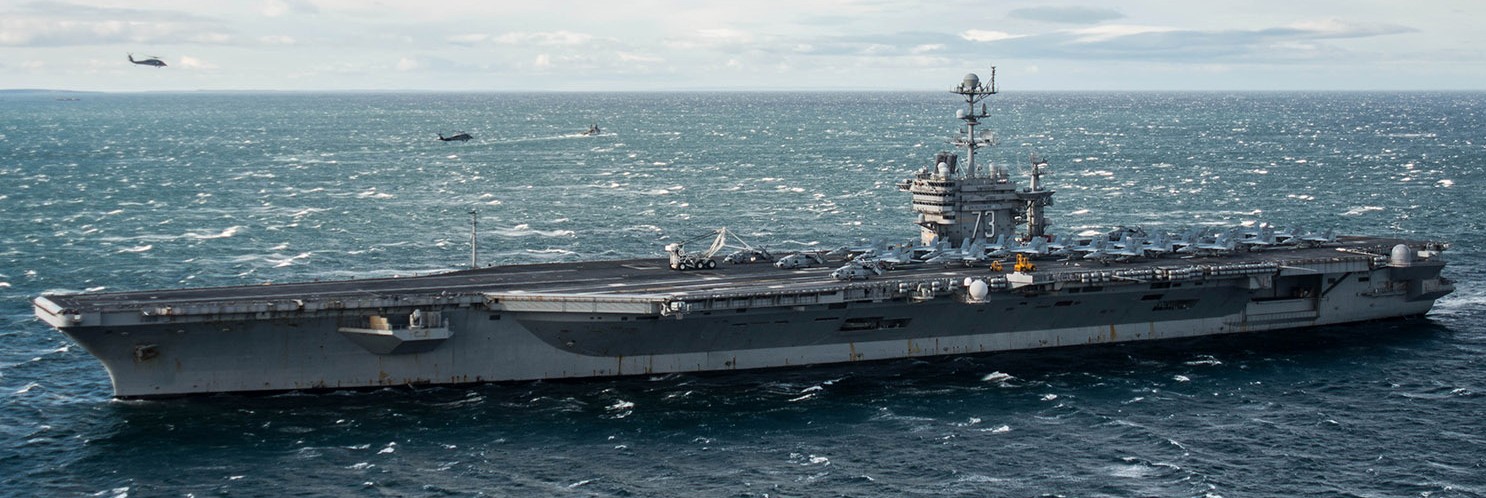 with CVW-2 embarked - Strait of Magellan - November 2015 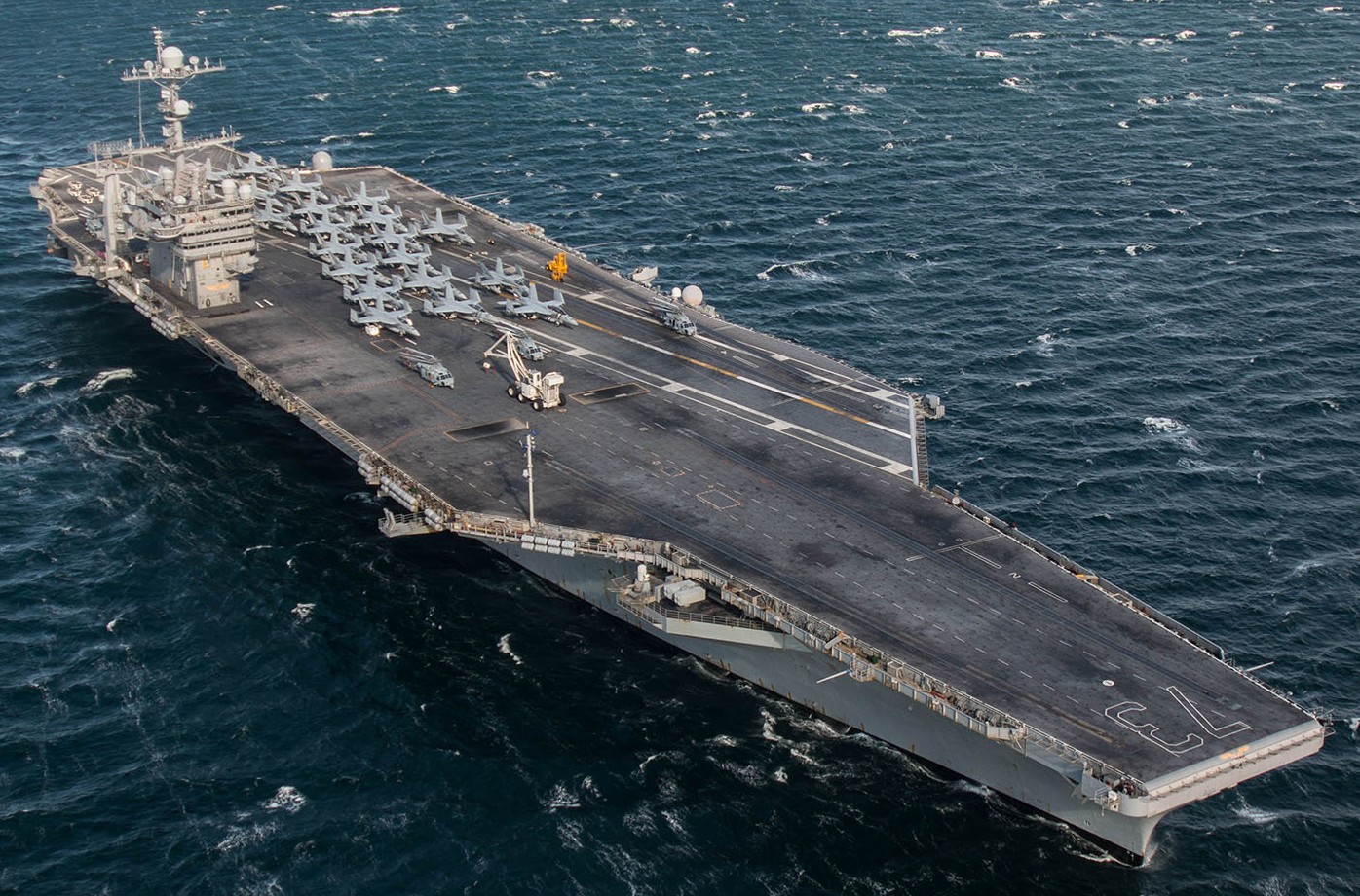 with CVW-2 embarked - Strait of Magellan - November 2015 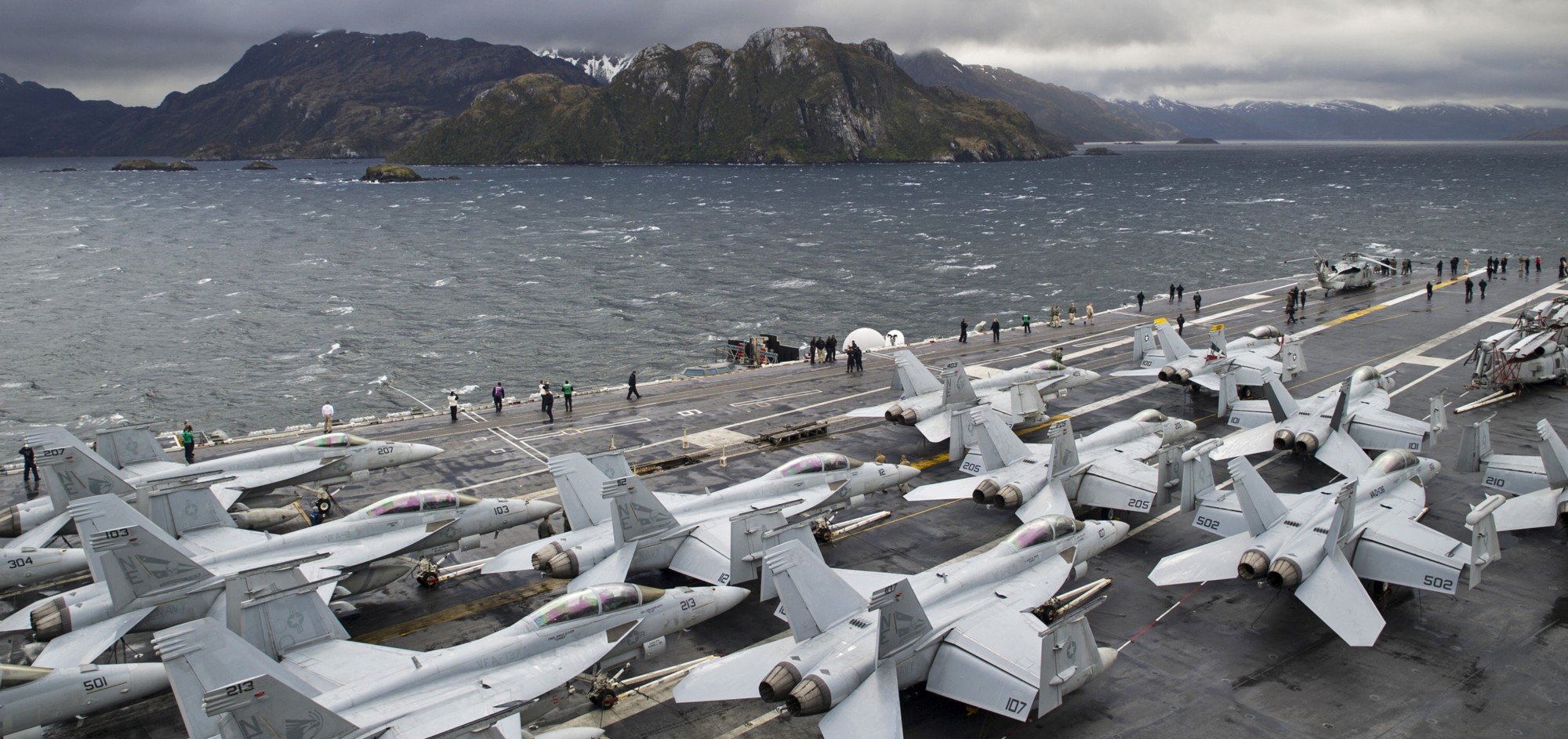 with CVW-2 embarked - Strait of Magellan - November 2015 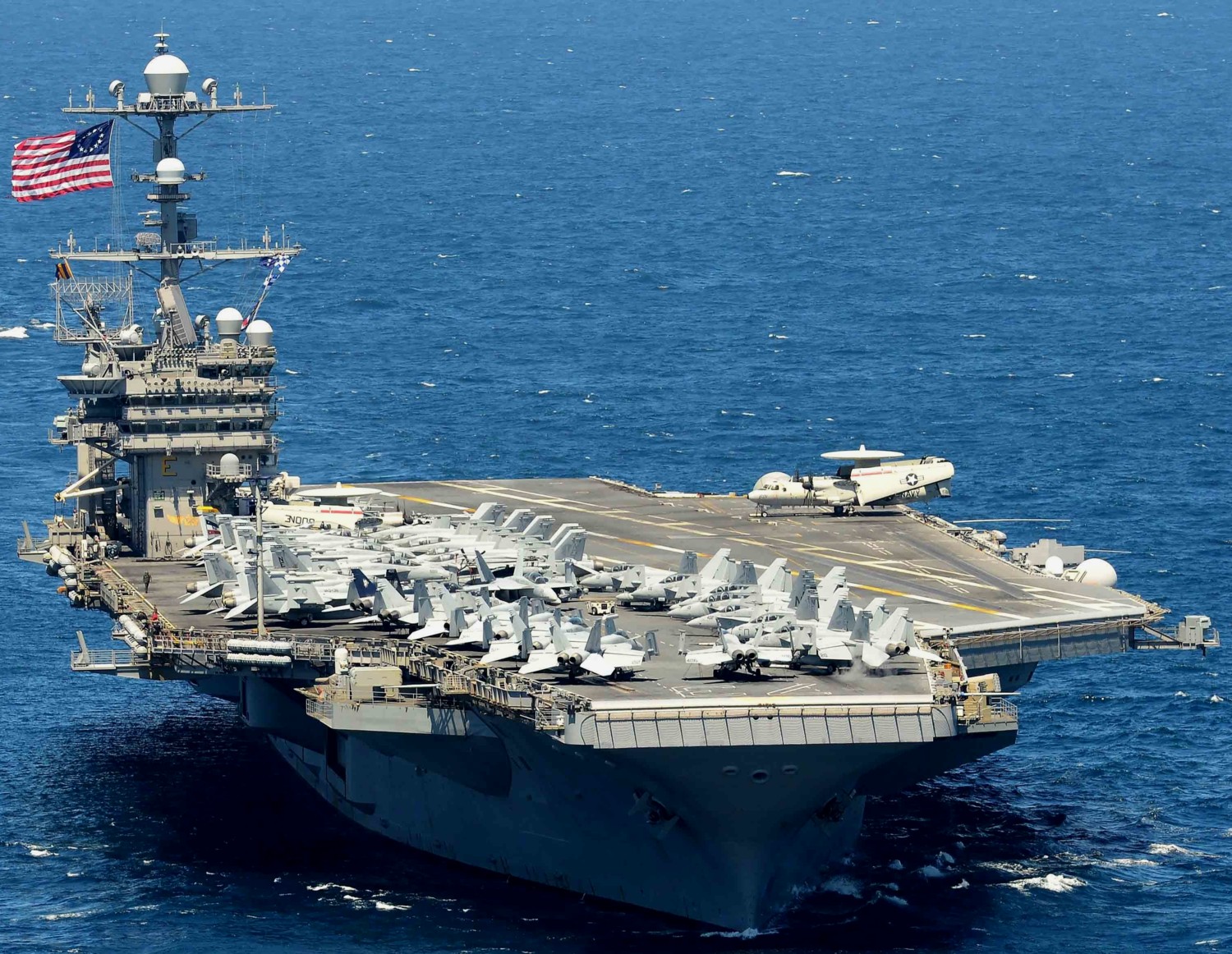 with CVW-2 embarked - exercise UNITAS 2015 - Pacific Ocean - October 2015 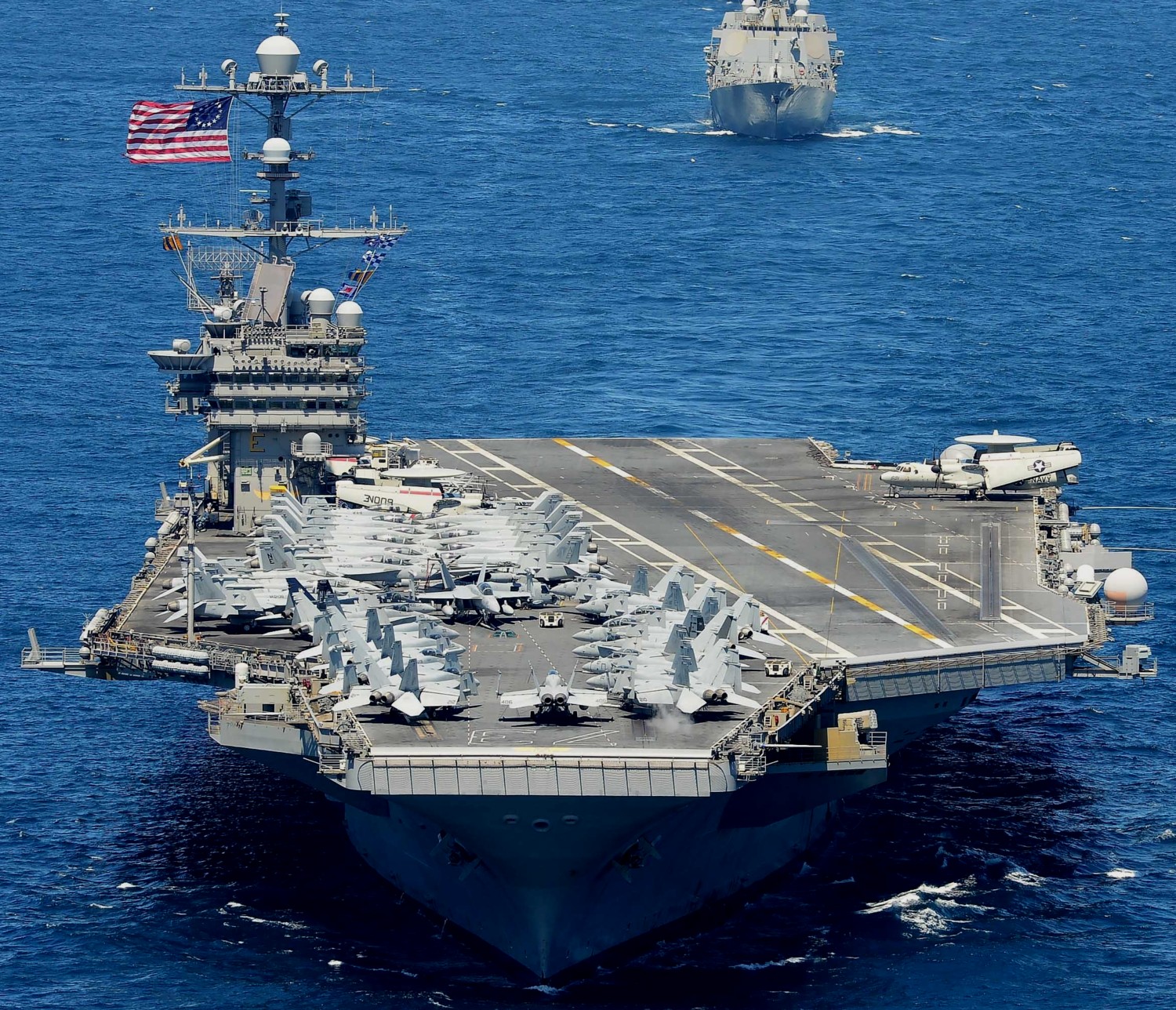 with CVW-2 embarked - exercise UNITAS 2015 - Pacific Ocean - October 2015 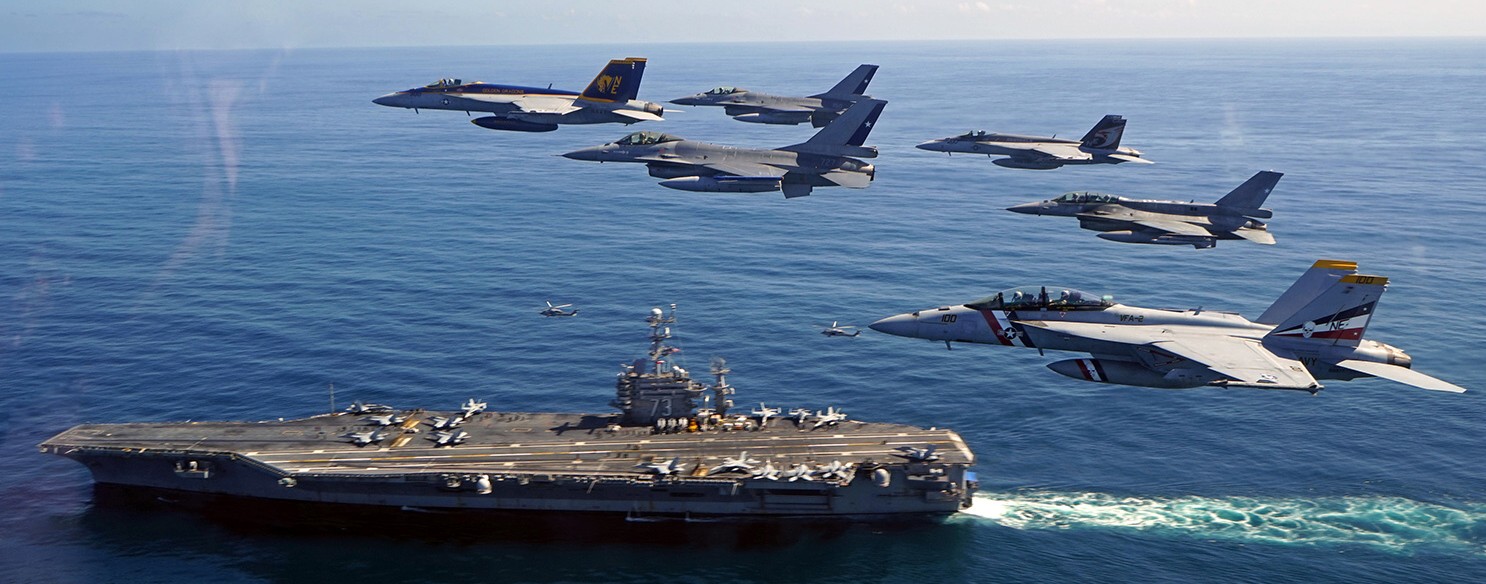 with CVW-2 and aircraft of Chilean Air Force - exercise UNITAS 2015 - Pacific Ocean - October 2015 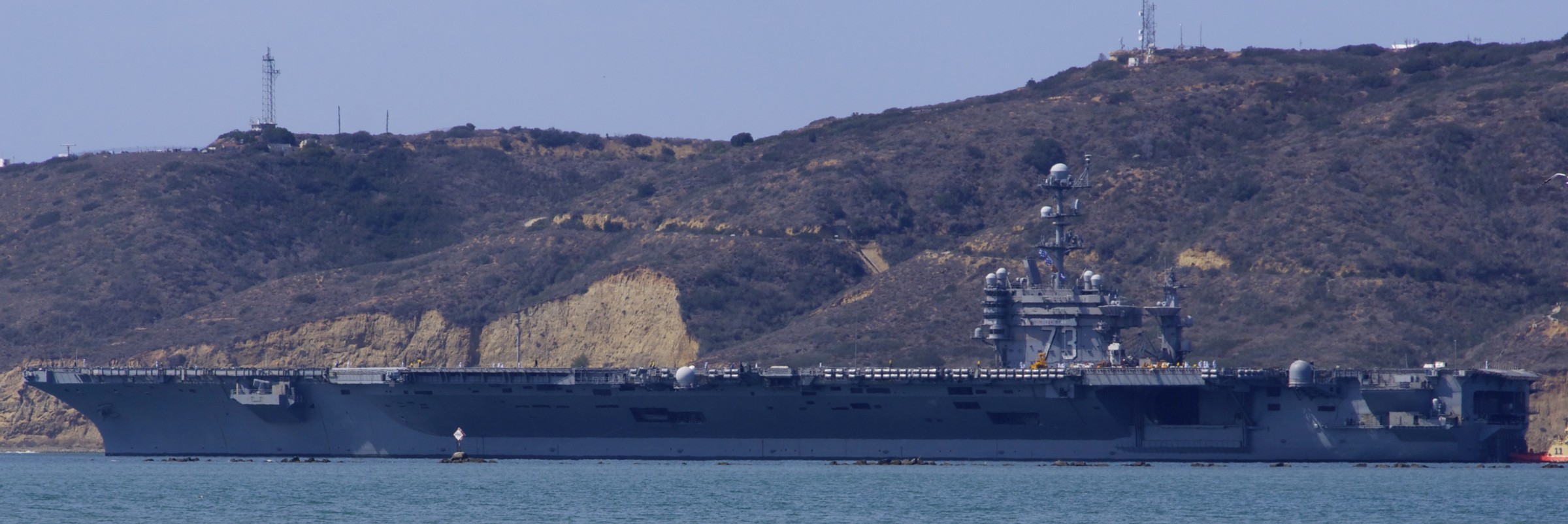 departing Naval Base Coronado, California - September 2015  carrier hull swap at Naval Air Station North Island, San Diego, California - August 2015 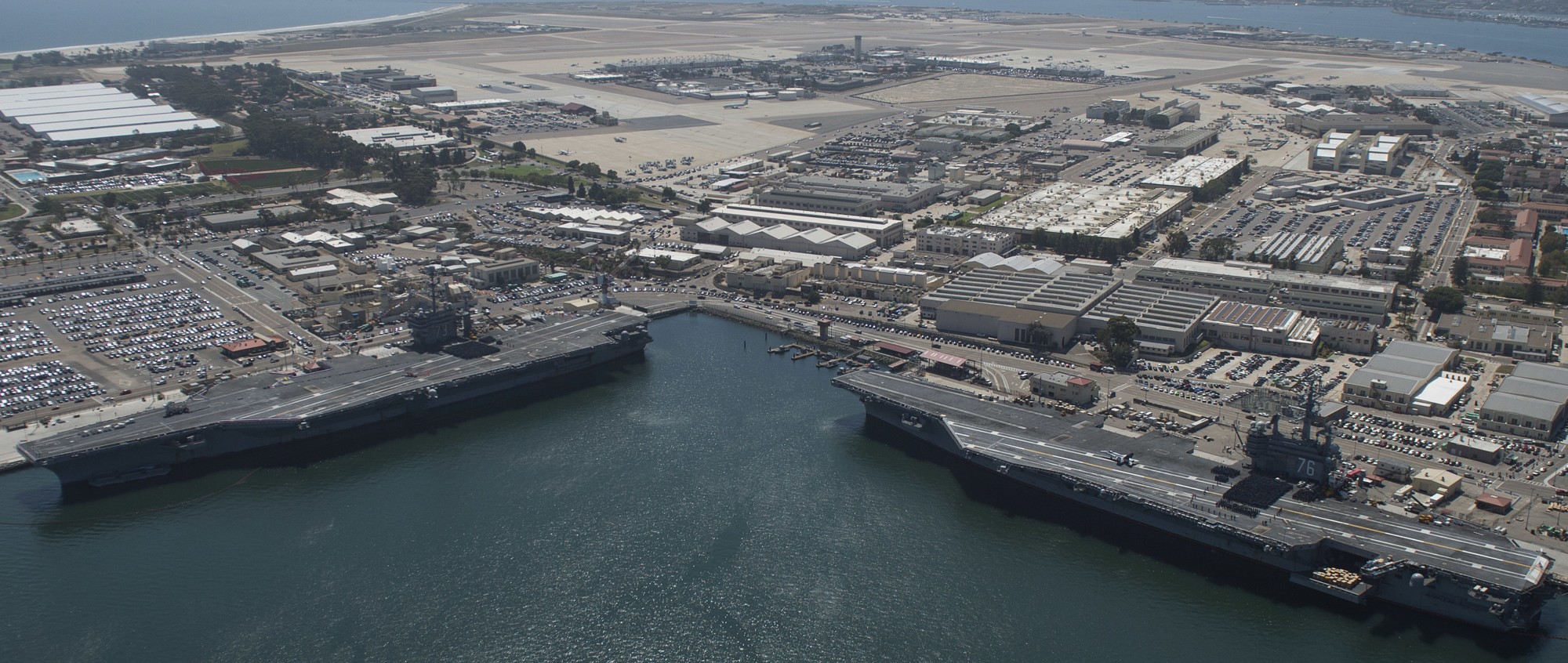 carrier hull swap with USS Ronald Reagan (CVN 76) at Naval Air Station North Island, San Diego, California - August 2015 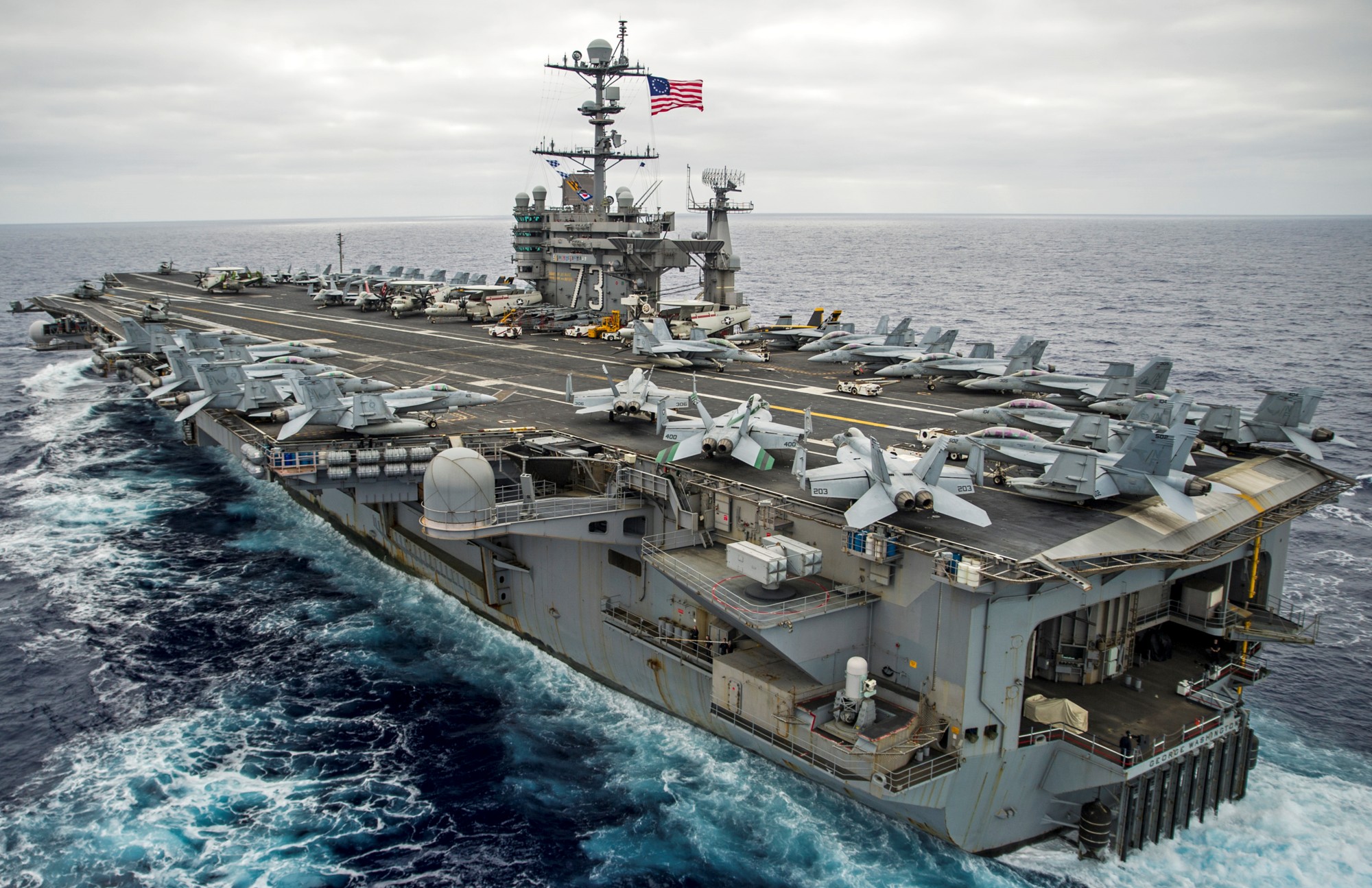 with CVW-5 embarked - Pacific Ocean - August 2015 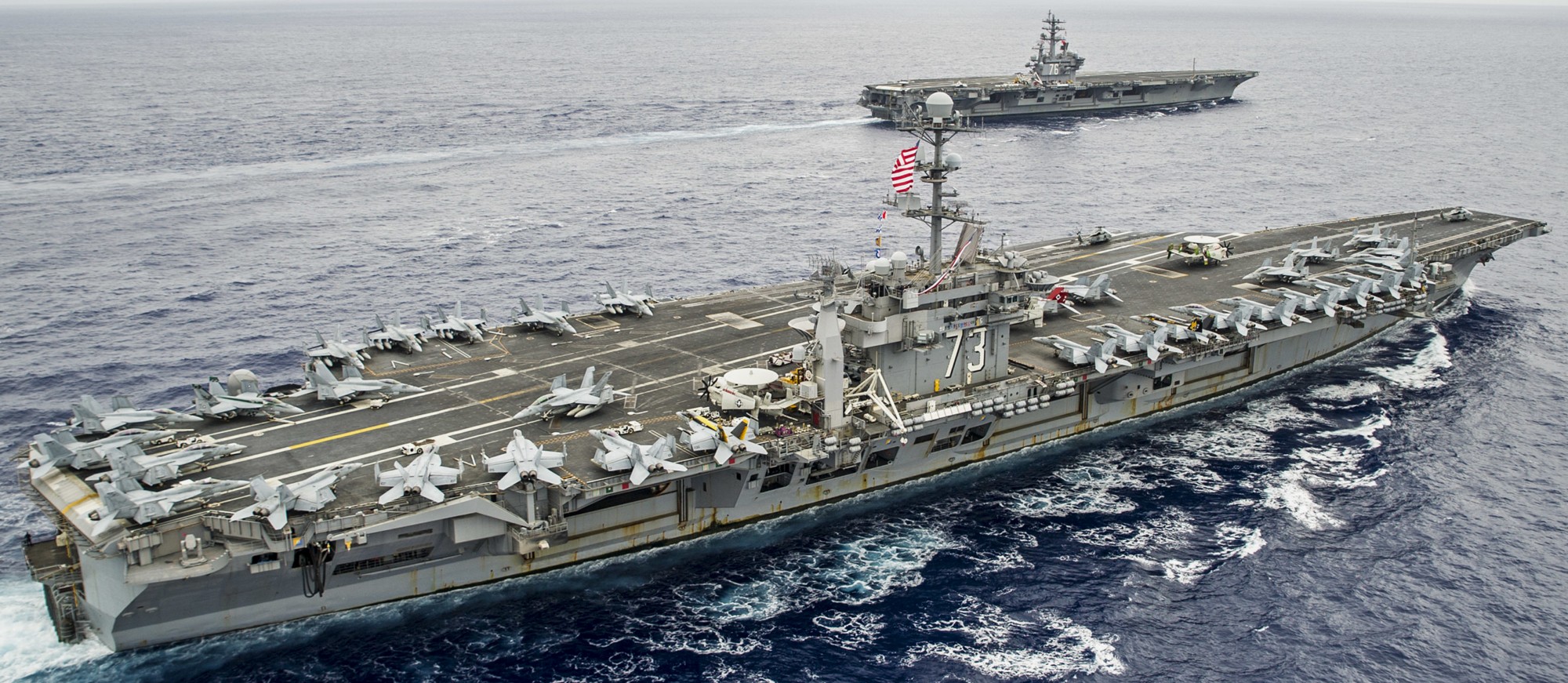 with CVW-5 embarked - Pacific Ocean - August 2015  with CVW-5 embarked - Pacific Ocean - August 2015 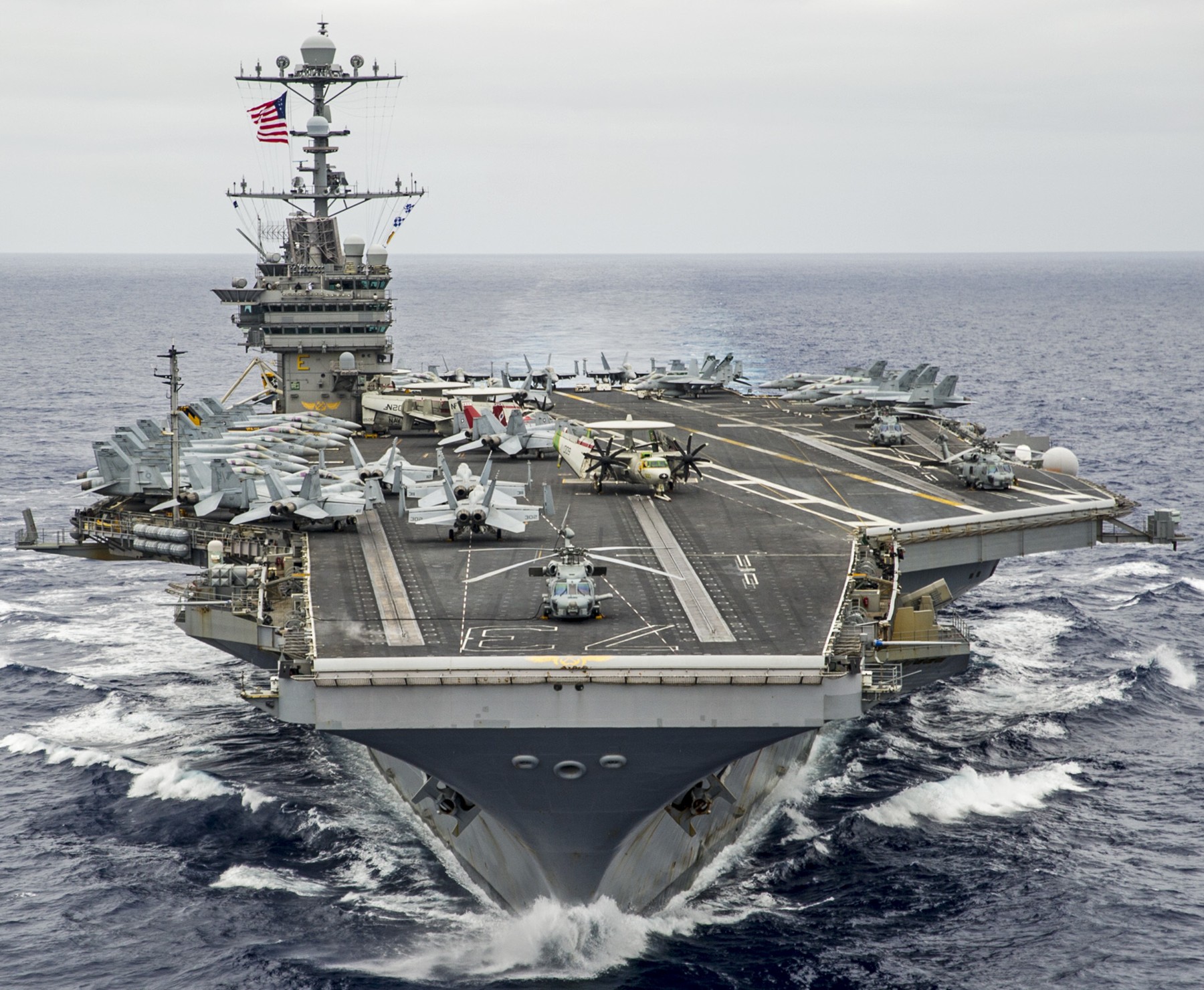 with CVW-5 embarked - Pacific Ocean - August 2015 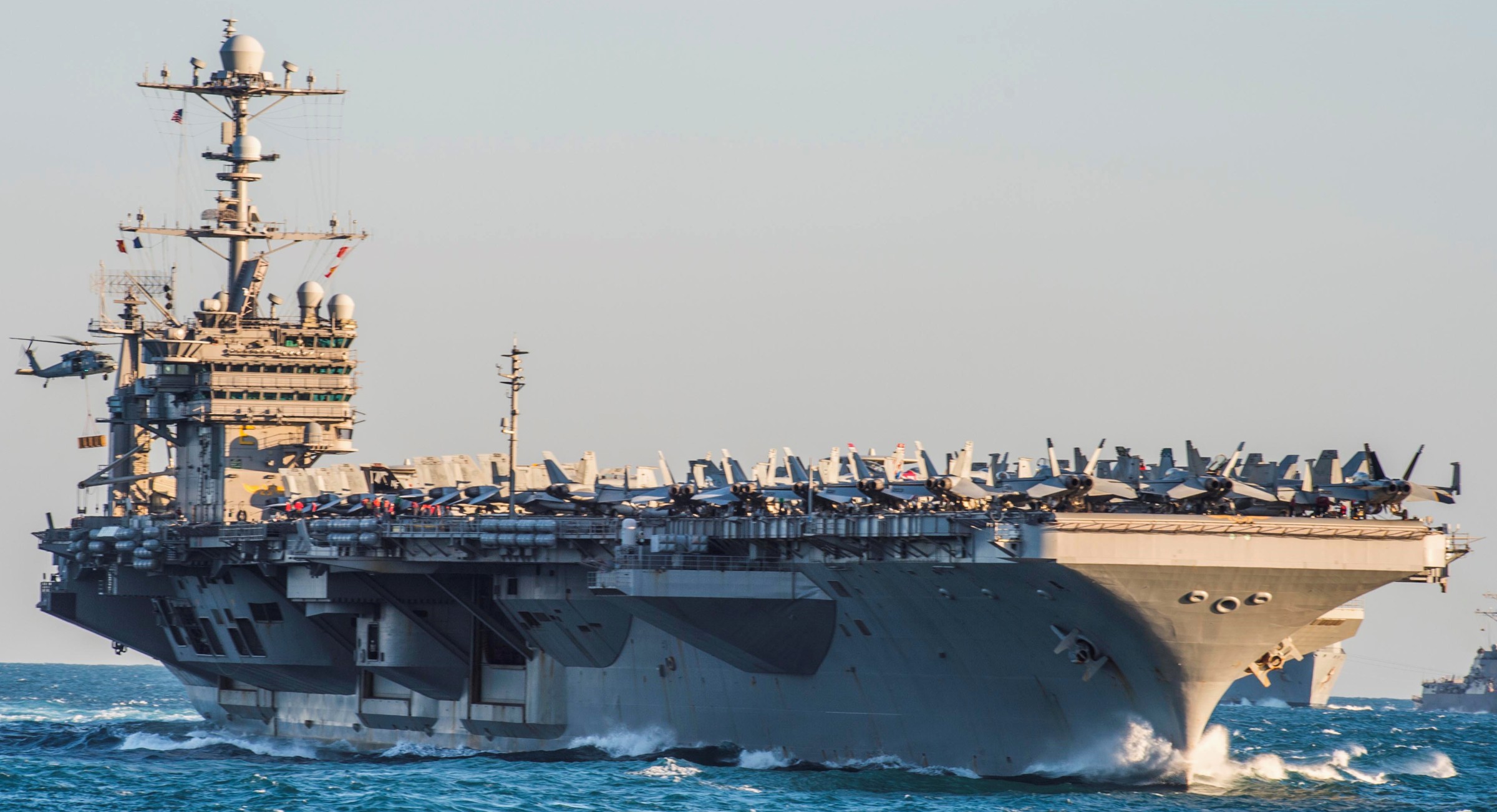 with CVW-5 embarked - Timor Sea - July 2015 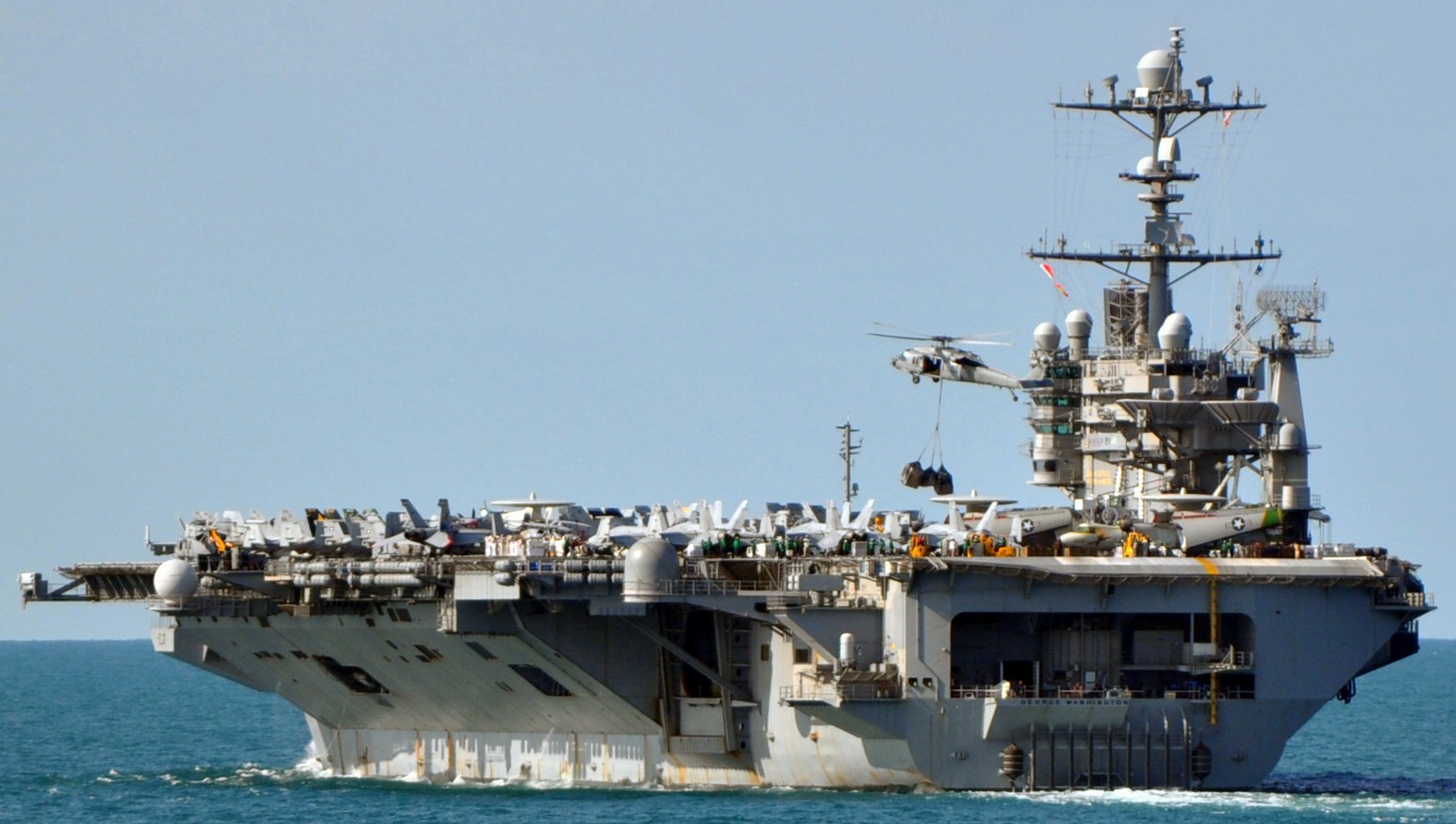 with CVW-5 embarked - Timor Sea - July 2015  departing Fleet Activities Yokosuka, Japan for her final time - May 2015  with CVW-5 embarked - Pacific Ocean - October 2014 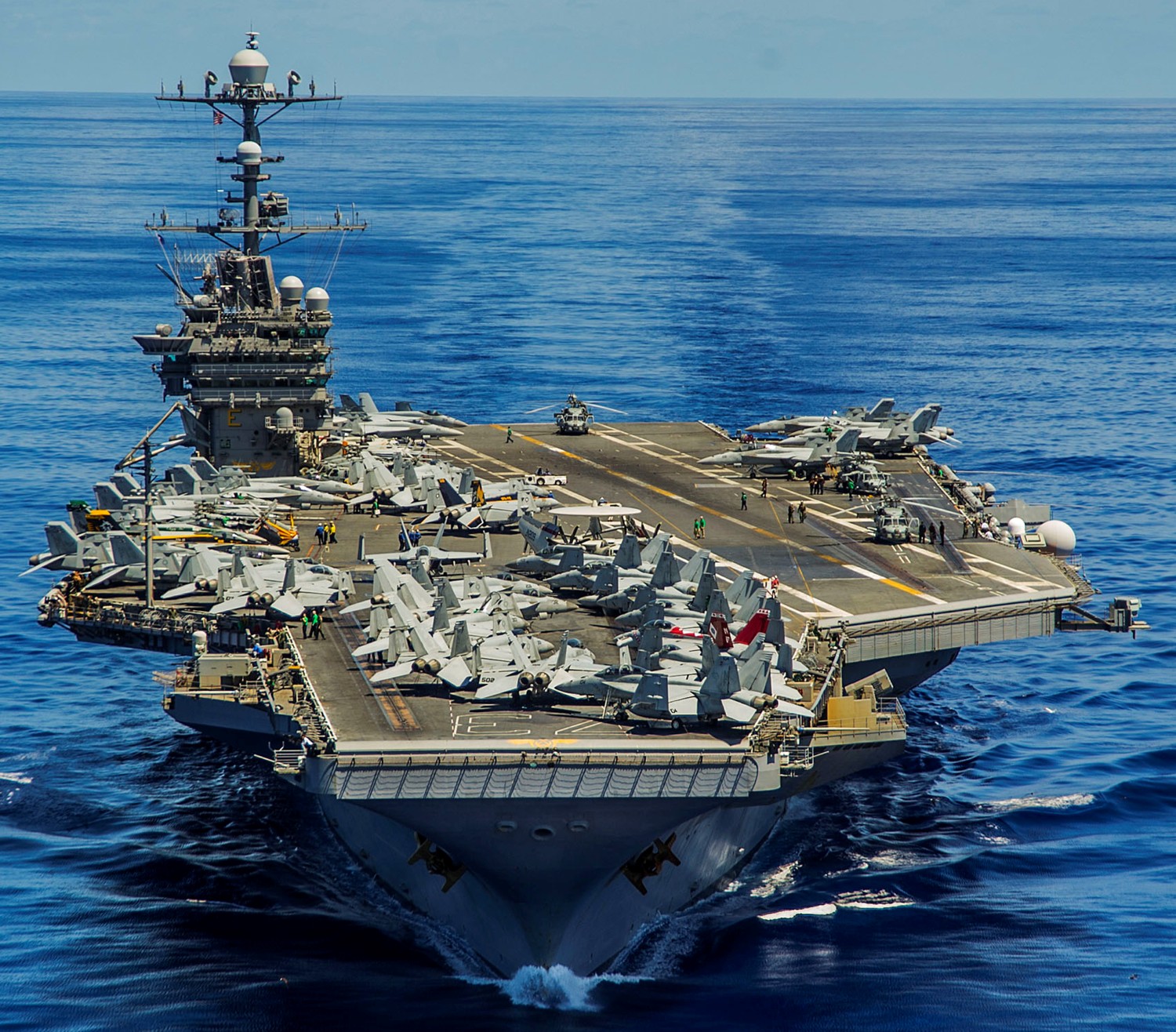 with CVW-5 embarked - Pacific Ocean - September 2014  with CVW-5 embarked - Pacific Ocean - September 2014 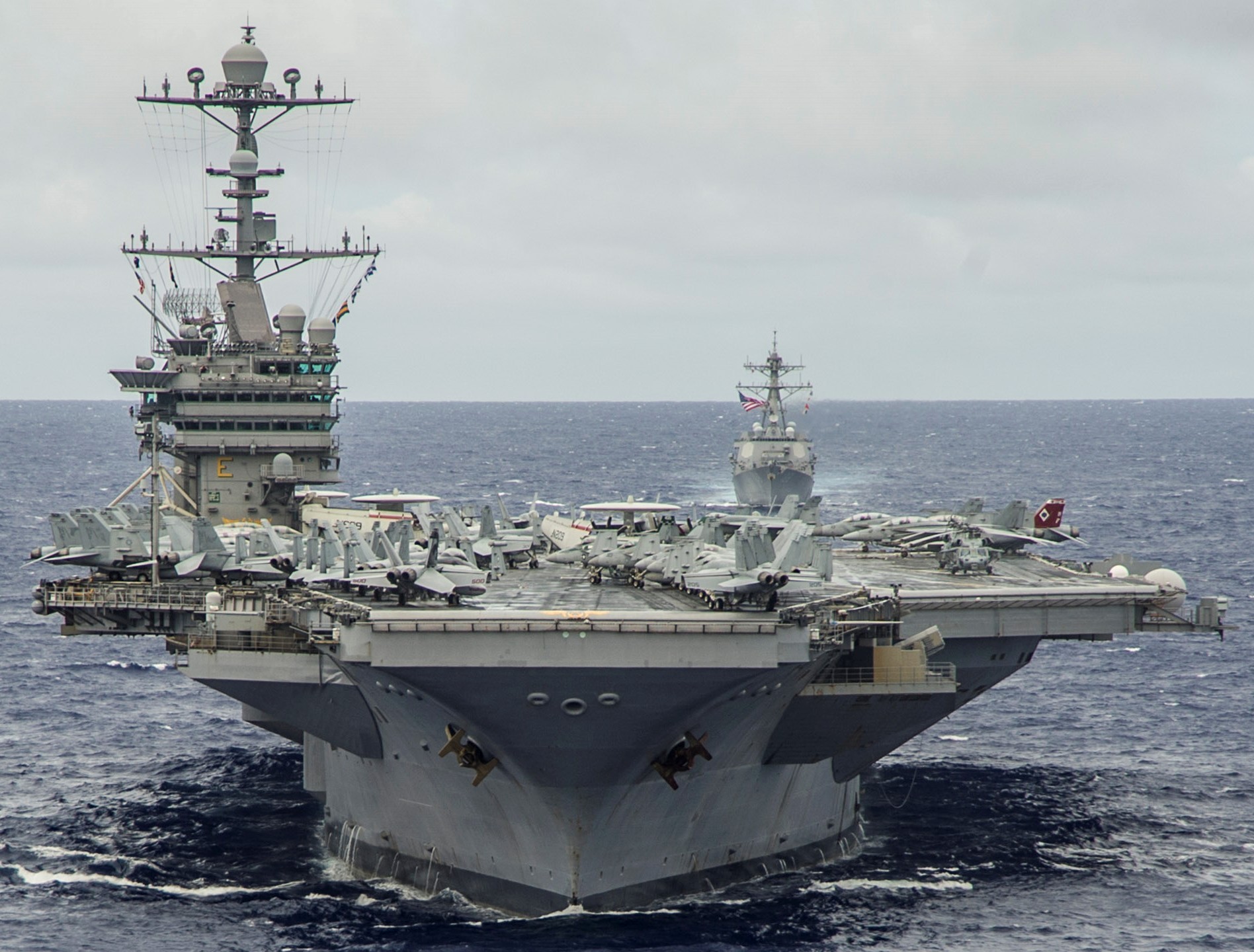 with CVW-5 embarked - exercise Valiant Shield - September 2014 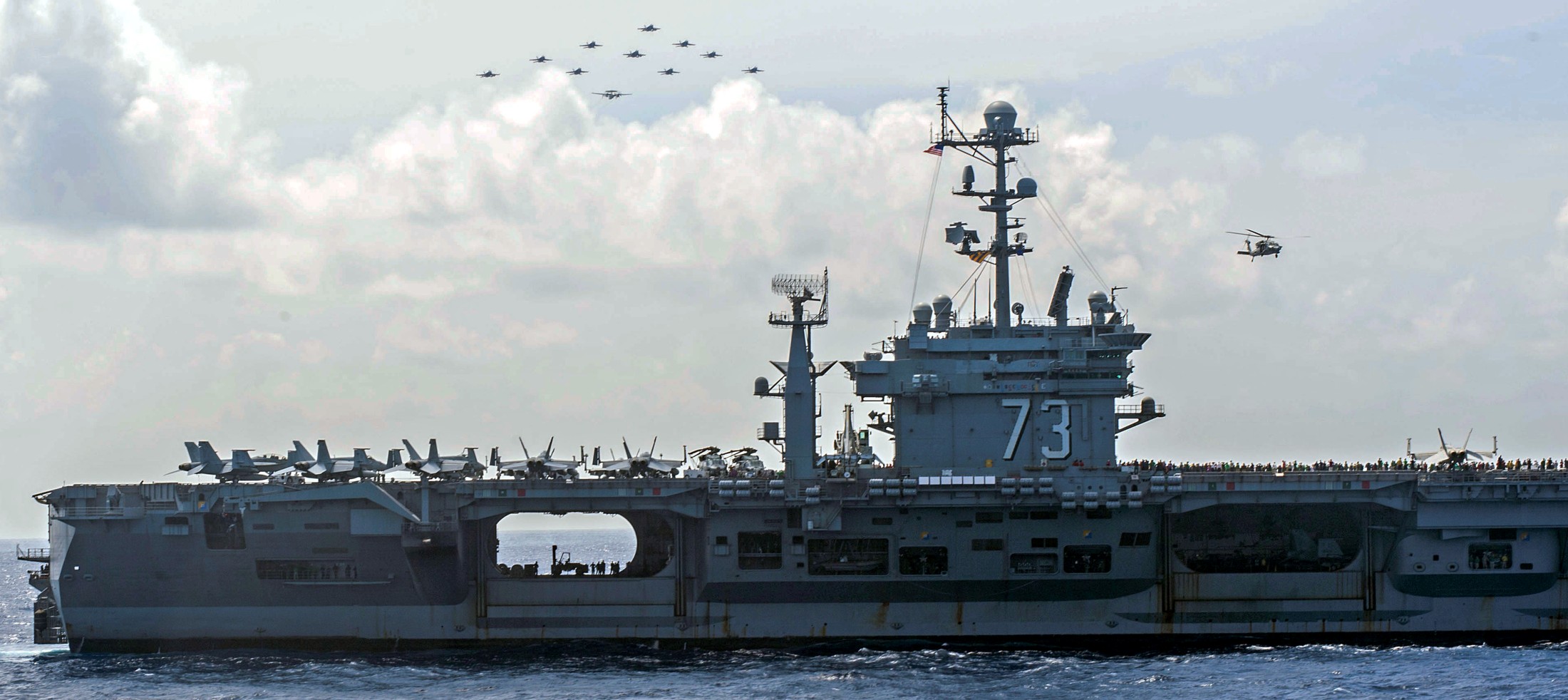 with CVW-5 embarked - Pacific Ocean - August 2014  with CVW-5 embarked - Sasebo, Japan - August 2014 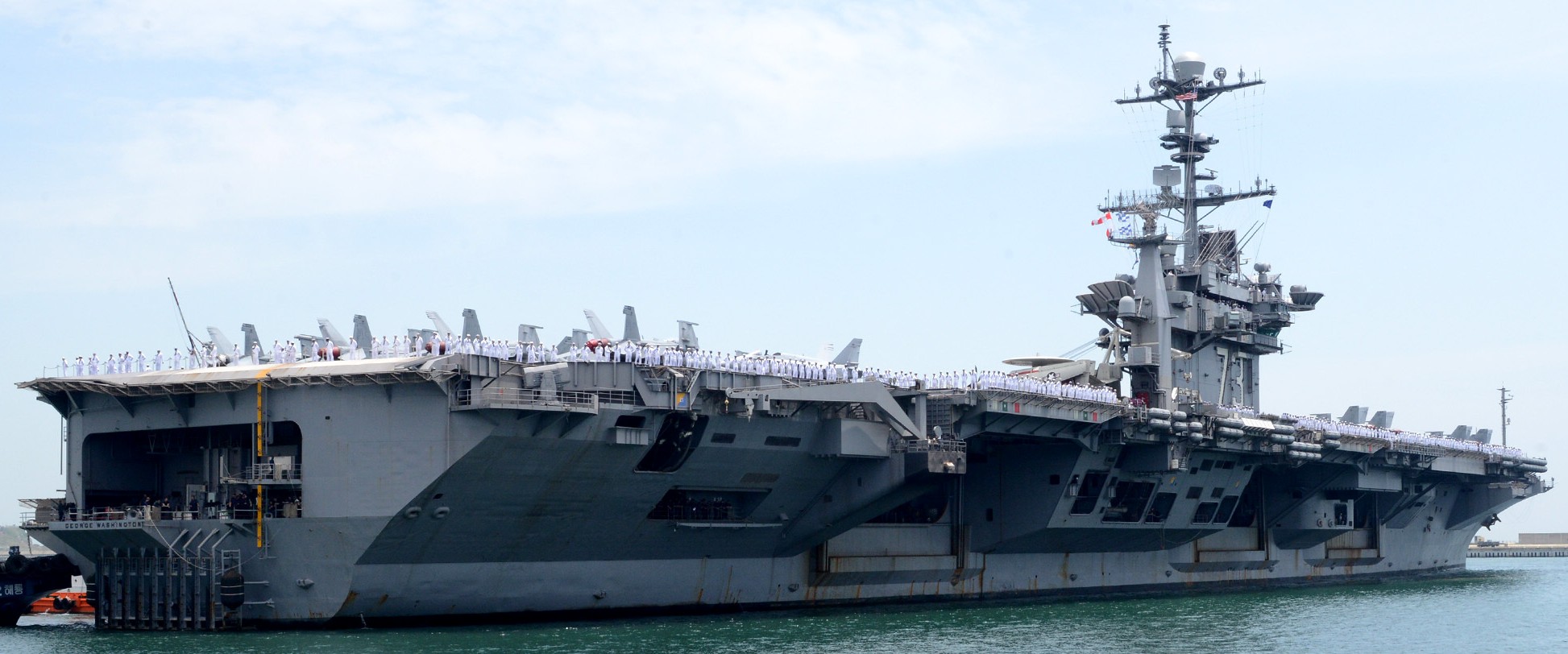 with CVW-5 embarked - Busan, Republic of Korea - July 2016  with CVW-5 embarked - Busan, Republic of Korea - July 2016 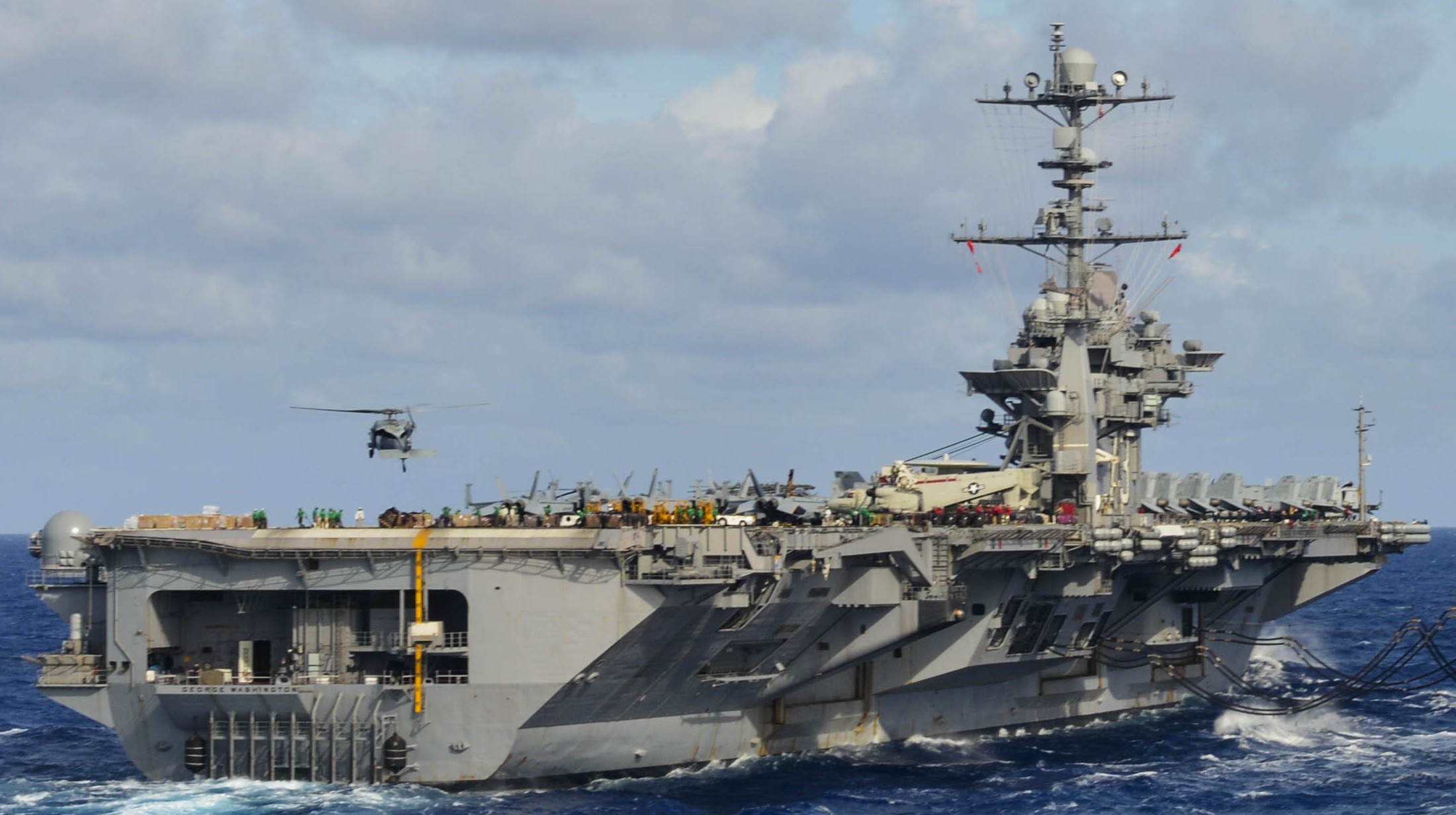 with CVW-5 embarked - Philippine Sea - July 2016 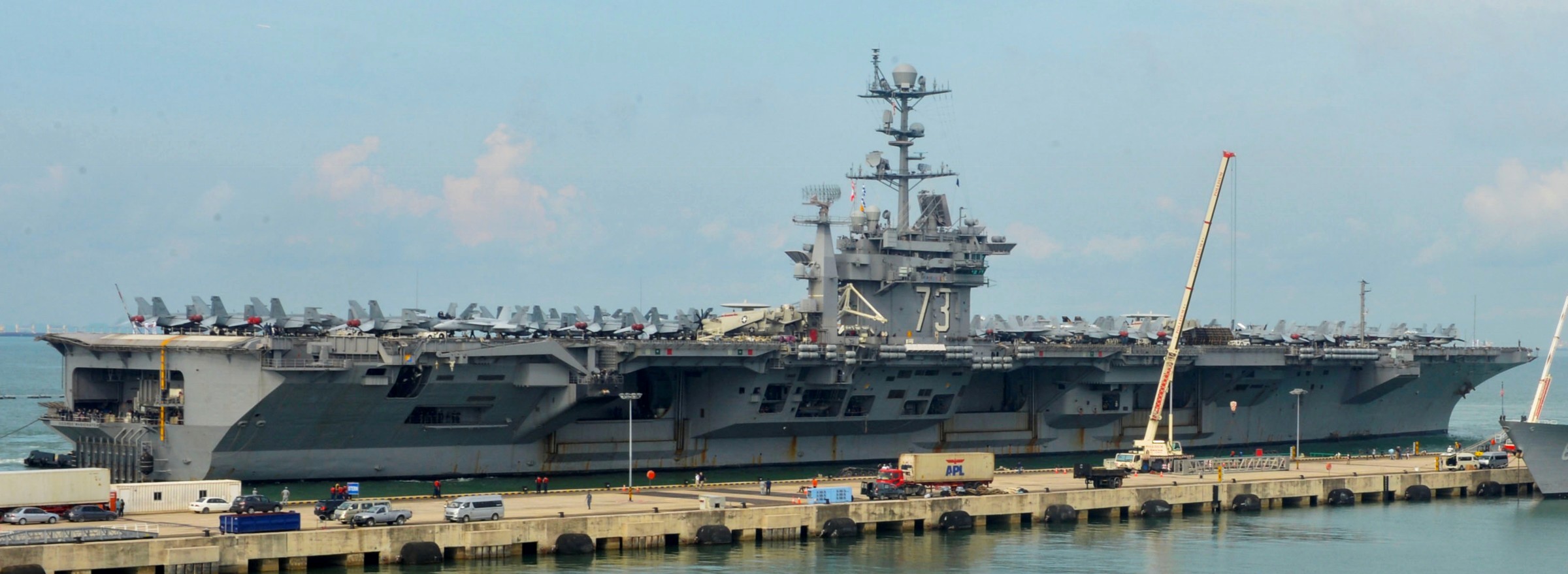 with CVW-5 embarked - Changi, Singapore - June 2016 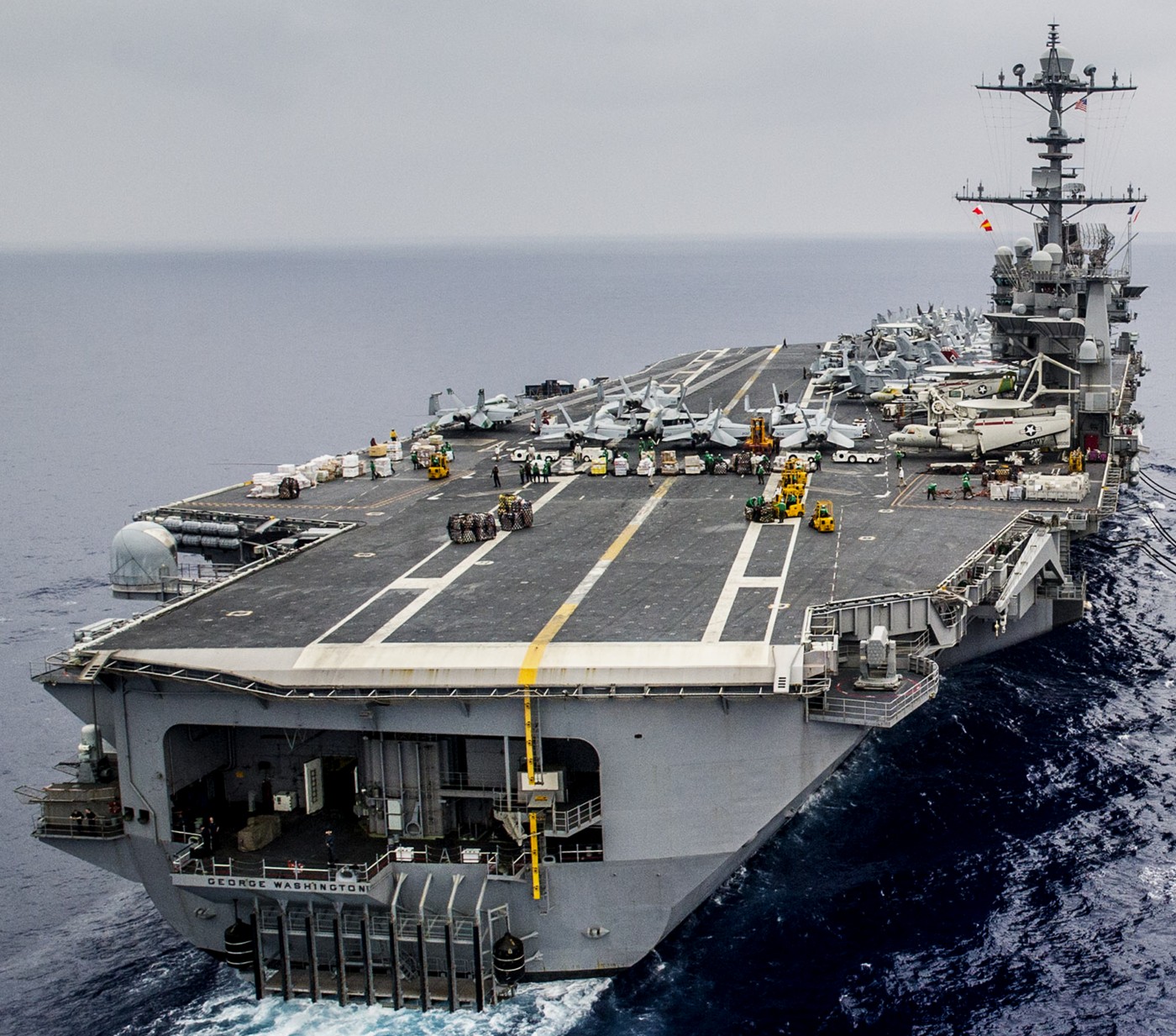 with CVW-5 embarked - off Japan - June 2014 > continue - CVN 73 image page 2 < |
||
George Washington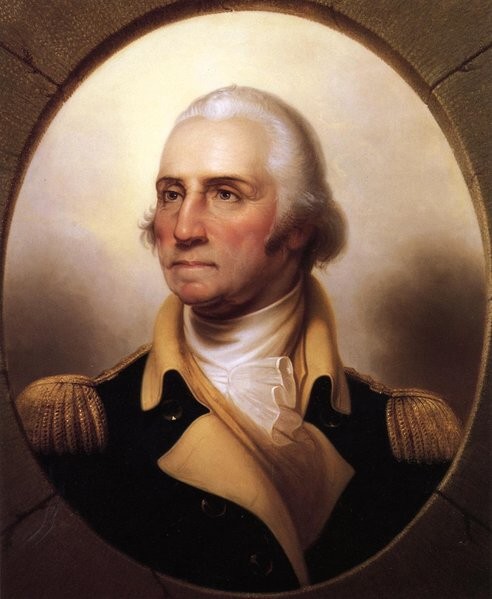
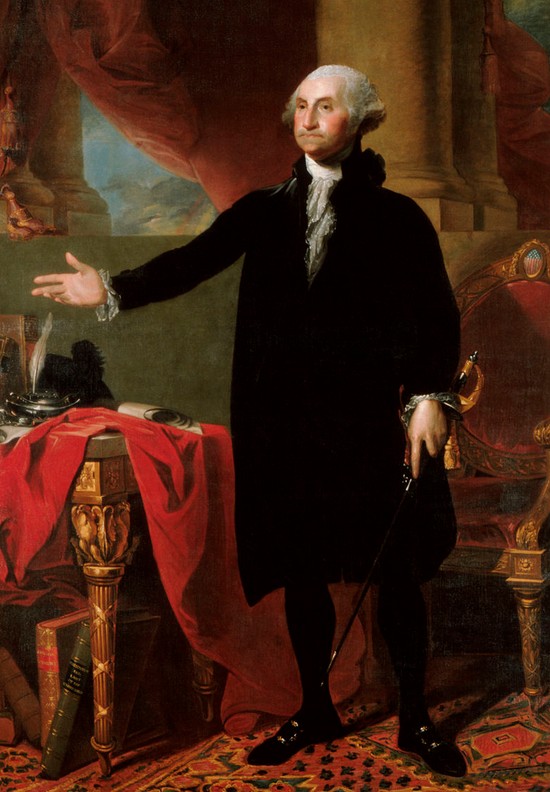 |
||
|
George Washington (February 22,
1732 - December 14, 1799): Born in 1732 into a Virginia planter family, he learned the morals, manners, and body of knowledge requisite for an 18th century gentleman. Although Washington only made one trip out to sea in his entire life (a voyage to Barbados with his half-brother, Lawrence), he instinctively saw a potential gold mine of commerce and supply, witnessing first-hand the value of Caribbean ports, by which good from Europe found their way to the New World. He also fully understood the strategic significance of the new nation’s waterways because he saw from whence came the resources to wage a rebellion. These were two factors that would later become key points to victory in the Revolutionary War when Washington fully procured a navy. In 1775, the Continental Congress was divided on the decision to create a navy. It was thought to be preposterous that any navy the Continental Army could muster would ever rival the British navy’s powerful fleet. But without a navy, the colonies on the East Coast had little defense against the British ships that raided their trading posts and harbors at will. Thus, in September of 1775, the first ships to be considered a part of the United States Navy were privateers, manned by fisherman. These fishermen, however, were not fighting men, and they were largely ineffective as a front line of defense. But Washington was desperate for gunpowder and lead at this time, and he knew that there had to be a way to use the privateers to his advantage. Thomas Jefferson once said of Washington that his strongest character trait might have been prudence “never acting until every consideration was maturely weighed and, once decided, going through with his purpose whatever obstacles opposed him.” After much consideration, he decided if the privateers could not be used as fighting men, they would become plunderers, stealing supplies and munitions from the British and giving them to the colonists. He commissioned 11 schooners, starting with the 70-ton Hannah, whose sole purpose was to raid enemy vessels and acquire whatever supplies they could. This was extremely successful, with “Washington’s Fleet,” capturing up to 55 enemy ships. This success was enough to persuade Congress that if their navy were properly financed and outfitted with the right people, they could stand a chance of defeating the British. In October 1775, Congress appointed a Naval Committee and gave its members $500,000 to immediately purchase and arm four ships and begin construction on 13 frigates, the largest type of American warship to see action in the Revolutionary War. By the War’s end, more than 50 ships, from whalers to supply ships, had been converted for the colonies’ cause. The young U.S. Navy reached its pinnacle in 1779 with John Paul Jones at the helm of Bonhomme Richard. Although his ship sustained mortal damage from an internal explosion at the British Serapis, Jones bravely boarded the enemy vessel and fought the crew hand-to-hand. In order to accomplish the boarding, the disabled Bonhomme had to move in close to Serpis and the two vessels became entangled. Throughout the night, the two crews waged a bloody and fiery war, with Jones finally forcing Capt. Richard Pearson to surrender. Two days later, Jones took Serapis’ helm, as Bonhomme slipped beneath the waves, committed to the sea forever. Jones victory was a shot in the arm for the navy, but in 1781, all 13 frigates originally constructed six years before had been destroyed or captured. Washington took his retirement on December 23, 1783, as the Navy he initiated was flailing. Still, he had an avid interest in the sea and saw the trading across the Atlantic and into the Mediterranean Sea as the future of American commerce. He sought to capitalize on this vision by institution a policy of neutrality with the warring countries of France and Britain prior to his retirement. Unfortunately, neither country in conflict paid this any mind, and America saw its merchant ships falling victim to plunderers and pirates from the Barbary States in North Africa. When he rejoined public life and was elected as the nation’s first president on February 4, 1789, Washington ultimately avoided war by paying $1 million ransom for 115 Sailors held hostage in North Africa. This event gave Congress the proof needed to realize a strong maritime presence was necessary if America was to prosper from international trade. Washington’s efforts culminated in the Naval Construction Act of 1794, which set in motion the groundwork for the most powerful Navy in the world today. Washington gave his farewell address on September 19, 1796, and returned to his Mount Vernon home upon the inauguration of John Adams on March 4, 1797. Washington died at his home on December 14, 1799 of a throat infection, leaving behind the most recognizable name and legacy in American history. |
||
|
USS George Washington (CVN 73): The fourth George Washington (CVN-73) was laid down on 25 August 1986, at Newport News Shipbuilding and Dry Dock Co., Newport News, Va.; launched on 21 July 1990; sponsored by Mrs. Barbara Bush, wife of President George H.W. Bush; and commissioned on 4 July 1992 at Norfolk, Va., Capt. Robert M. Nutwell in command. President William J. and First Lady Hilary R. Clinton led an entourage of the nation’s leaders on board George Washington on 5 June 1994, during the commemoration of the 50th anniversary of D-Day. George Washington sailed off the coast of Portsmouth, England, and then crossed the English Channel toward the invasion beaches of Omaha and Utah, France. Intelligence analysts meanwhile identified the (apparent) preparations of five Iraqi divisions to invade Kuwait, and on 6 October 1994, the U.S. launched Operation Vigilant Warrior to protect the Kuwaitis. The following day President Clinton dispatched George Washington from the Adriatic, the ship reaching the Red Sea on 10 October. In addition, amphibious assault ship Tripoli (LPH-10) and 2,000 Marines of the 15th Marine Expeditionary Unit deployed to the Northern Arabian Gulf. These resolute moves convinced Saddam Hussein to withdraw his mobile troops from the Kuwaiti borders. On 3 September 1996, George Washington became the first carrier to undergo more frequent maintenance periods under the Planned Incremental Maintenance Availability program. The plan aimed to save money by performing maintenance on a more regular basis, thus allowing carriers to return to the Fleet following shorter but more intensive overhaul periods. In November 1996, the Improved Fresnel Lens Optical Landing System completed shore-based technical evaluation at NAS Patuxent River, Md. The system was subsequently installed on board George Washington, and on 1 March 1997, the operational testing and evaluation of the system began when a Boeing F/A-18 Hornet from NAWC (AD) Patuxent River trapped on board George Washington. The United States Central Command launched Operation Desert Thunder I, a large-scale deployment to the Middle East to pressure the Iraqis and to bolster the UN’s negotiating position that included the planned continual availability of two aircraft carriers, on 18 January 1998. On this date U.S. aircraft carriers George Washington and Nimitz (CVN-68) and British aircraft carrier Invincible (R.05) operated in the region. A total of more than 50 additional allied ships and submarines, including amphibious assault ship Guam (LPH-9), deployed to the region during this period. British aircraft carrier Illustrious (R.06) turned-over with Invincible in the Arabian Gulf while operating with aircraft carriers George Washington and Independence (CV-62) on 3 March 1998. Aircraft carrier John C. Stennis (CVN-74) relieved George Washington in the Arabian Gulf on 12 March. A resurgence of tensions later in the year led to additional deployments as part of Operation Desert Thunder II. When George Washington returned from the six-month deployment to the Mediterranean and Arabian Gulf and disembarked the 26 Marines of her security detachment on 3 April, she ended an era of a Marine Corps security presence on board carriers. Gulf Air Flight 072, an Airbus A320 en route from Cairo, Egypt, to Manama, Bahrain, crashed in the Arabian Gulf on 23 August 2000. George Washington operated in the region and launched two Sikorsky SH-60F Seahawks from Helicopter Antisubmarine Squadron (HS) 15 that helped direct rescuers to the scene of the crash. All 143 people on board Gulf Air Flight 072 perished in the crash. Al-Qaeda terrorists hijacked four airliners, crashing two of the jets into the twin World Trade Center towers in New York City, and one about 80 miles southeast of Pittsburgh, Pa., on 11 September 2001. The terrorists also flew American Flight 77, a Boeing B-757, into the Pentagon. The impact of the plane thrust it into the reinforced building and severely damaged the newly opened Navy Command Center. The attack at the Pentagon killed 189 people: all 64 on board American 77 including Naval Reservist and pilot Capt. Charles F. Burlingame III; and injured 125 including 33 sailors and nine Navy civilians. The strikes killed an estimated 2,977 people on 9/11. The Department of Defense declared Force Protection Condition Delta - the highest alert. George Washington sailed from Norfolk to protect New York City. The carrier responded to tasking from NORAD, and supported Military Sealift Command-operated hospital ship Comfort (T-AH-20) during the relief efforts. Aircraft carriers John F. Kennedy (CV-67) and John C. Stennis positioned themselves to defend the East and West Coasts, respectively, while across the globe many aircraft ashore sortied. Coast Guardsmen began to escort Navy ships during their departures or arrivals at ports. The following year, George Washington deployed to the Mediterranean and the Arabian Gulf (20 July-20 December 2002). Three days after she sailed, Kauffman (FFG-59) also deployed and subsequently rendezvoused with the carrier. Venom 502 and Venom 510, two SH-60Bs of Helicopter Antisubmarine Squadron Light (HSL) 48 Detachment 7, embarked on board the guided missile frigate, the Seahawks conducting multiple maritime interception operations (MIO) during the voyage, including one that involved 60 flight hours tracking a merchant vessel, leading to the capture of 15 suspected al-Qaeda terrorists by Italian authorities. United States Special Forces fought al-Qaeda extremists and Taliban militants defending a compound in Afghanistan on 27 July 2002. The heavily armed and well-entrenched defenders fought with determination, but two Grumman F-14B Tomcats of Fighter Squadron (VF) 103, and four F/A-18C Hornets of Strike Fighter Squadrons (VFAs) 81 and 83, all deployed with CVW-17 on board George Washington, flew close air support runs firing 20 millimeter guns and dropping 500-pound bombs, destroying the compound and defeating the enemy. During that deployment, aircraft flew 925 sorties and completed 4,378.7 flight hours from George Washington supporting Operation Enduring Freedom. While an SH-60B from HSL-43 Detachment 1, flying from guided missile cruiser Mobile Bay (CG-53), hovered over a Syrian vessel to observe a health inspection, its rotors accidentally cut into the ship’s mast and the Seahawk crashed, about 80 miles west of Bushehr, Iran, on 6 September 2002. Fifty-year-old Larry Greene, a civilian cameraman with KCBS-TV, died. Greene flew with the Navy crew while covering a feature commemorating the al-Qaeda onslaught on 9/11, and was survived by his wife and two sons. The four crewmembers all sustained minor injuries. A helicopter flew one of the sailors to George Washington for medical treatment. Australian helicopter frigate Arunta (FFH.151), Cmdr. R. J. Griggs, RAN, in command, assisted Mobile Bay. Arunta’s medical officer provided triage advice and helped in prioritizing the other three patients prior to their evacuation for further care ashore. Thirty-three-year-old Lt. Cmdr. Robert E. Clukey of VFA-34, deployed on board George Washington, crashed in a Hornet during a nighttime practice bombing run over the Aegean Sea, 85 miles north of Bari, Italy, on 3 November 2002. Aircraft from the carrier and guided missile cruiser Normandy (CG-60) searched into the next day but failed to locate either Clukey, who had flown more than 20 combat missions over Southern Iraq and Afghanistan, or his plane. Early the following year, 25-foot fishing boat Little Spray caught fire and sank approximately 60 miles east of St. Augustine, Fla., on 2 February 2003. The Coast Guard notified George Washington, which carried out flight operations nearby, and she launched two helicopters from Reserve Helicopter Antisubmarine Squadron 75, temporarily embarked on board from Naval Air Station Jacksonville, Fla. The helos rescued four of the five people from the boat, and a private boat, Whiskey Man, also responded to the Coast Guard’s call and retrieved the fifth person. One of the people died, but the carrier’s medical team treated the four survivors for mild hypothermia and second degree burns, and a Grumman C-2A Greyhound of Fleet Logistics Support Squadron (VRC) 40 flew the four injured people to medical facilities at Jacksonville for further treatment. Investigators did not determine the cause of the fire. Jihadis (Muslim volunteers) increased their infiltration into Iraq during the winter and spring of 2004, primarily moving along a route that ran across the Syrian mountains and down the Tigris and Euphrates Rivers into Fallujah and Ramadi west of Baghdad. Navy and Marine aircraft struck these jihadis and insurgents during Operation Vigilant Resolve. On 9 April 2004, the Coalition suspended Vigilant Resolve to allow negotiations, but Fallujah remained an extremist stronghold and the fighting continued. George Washington, with CVW-7 embarked, operated in the area and on 28 April she launched F-14Bs of VFs 11 and 143 and F/A-18Cs of VFAs 131 and 136 that dropped 13 GBU-12 guided bomb units on jihadis and insurgents locked in fierce battle with Marines of the 1st Marine Expeditionary Force, enabling the leathernecks to hold their positions. Aircraft flew more than 7,000 sorties from George Washington during this deployment, 1,500 of them against the enemy during the fighting in Iraq. Twenty-one-year-old AN David M. Wilson of Red Oak, Texas, assigned to the ships Air Department, died from severe head injuries he incurred while operating a tow tractor in the hangar bay, while the ship trained off North Carolina at approximately 0400 on 21 November 2003. Wilson had enlisted in the Navy in June 2001, and served on board George Washington since October of that year. He was survived by his wife. On 2 December 2005, the Navy announced that George Washington would relieve Kitty Hawk (CV-63) in 2008 as the forward deployed aircraft carrier at FSA Yokosuka, Japan. George Washington, with CVW-17 embarked, therefore sailed from Norfolk on 7 April 2008. On 22 May, however, a fire erupted on board George Washington while she accomplished a replenishment with guided missile frigate Crommelin (FFG-37) in the Pacific. The ships conducted emergency breakaways and sailors fought the blaze for 12 hours, 38 George Washington crewmembers receiving treatment for their injuries. The fire apparently resulted from the ignition of improperly stowed refrigerant compressor oil, and delayed George Washington from relieving Kitty Hawk. George Washington completed repairs, turned-over with Kitty Hawk at NAS North Island, Calif., in August, and reached Yokosuka on 25 September. Super Typhoon Haiyan/Yolanda cut a wide swath of destruction across the Central Philippines, killing at least 6,268 people (6-9 November 2013). Multiple U.S. aircraft and ships, including George Washington, with CVW-5 embarked, guided missile cruisers Antietam (CG-54) and Cowpens (CG-63), littoral combat ship Freedom (LCS-1), guided missile destroyers Lassen (DDG-82) and Mustin (DDG-89), submarine tender Emory S. Land (AS-39), and Military Sealift Command-manned oceanographic survey ship Bowditch (T-AGS-62) and auxiliary dry cargo ship Charles Drew (T-AKE-10), steamed to the Philippines during Operation Damayan: humanitarian assistance to the victims of the disaster. George Washington received her orders while visiting Hong Kong on 12 November, but returned to sea and reached the Philippines two days later. Cowpens’ embarked SH-60B, from HSL-49 Detachment 6, supported an MH-60R Seahawk flying from Freedom, and delivered relief supplies to people from a position 16 nautical miles off shore, beginning on 16 November 2013. The following day, two Bell Boeing MV-22 Ospreys of Marine Medium Tiltrotor Squadron (VMM) 262 and an Osprey of VMM-265, landed on board George Washington for their first operations from the carrier. The unique aircraft refueled and then continued their mission of mercy, delivering supplies to the victims of the tragedy. That same day, George Washington deployed a medical team ashore in the Guinan area of eastern Samar. American and Filipino servicemembers and civil aid workers unloaded ten pallets (five of medical and five of hygienic supplies) at Daniel Z. Romualdez Airport at Tacloban, Leyte. The victims, as well as the aid workers, desperately needed the supplies, especially hand sanitizer, baby wash, band-aids, and disinfectant. “The first time I saw the impact of the typhoon, I was shocked,” Lt.( j.g.) Christine Mayfield of HSL-49 recalled, “It feels great to be out there and helping people.” In January 2014, it was announced that George Washington would be replaced by Ronald Reagan at Yokosuka when the ship's Refuelling and Complex Overhaul is due. As part of the Navy's FY 2015 budget, Pentagon officials hinted at the possibility of taking George Washington out of service due to budget reductions. The ship is due for her mid-life refueling and overhaul in 2016, which will take three years and cost over $3 billion. The decision to replace George Washington with the newer Ronald Reagan in her area of operations near Japan means decommissioning the ship would not affect American carrier presence in the region. The Congressional Budget Office has found that the elimination of the carrier and the air wing would save $7 billion from 2016 to 2021. They also found that the cost of decommissioning would be $2 billion, but spread out through 2021. After 2021, George Washington would return to service and remain operational until its planned out of service date in 2042. Nimitz is the oldest ship in the class and would be expected to be decommissioned early instead of George Washington. However, Nimitz has undergone a mid-life refuelling and is not due for decommission until the mid 2020s, whereas George Washington has yet to undergo this procedure, providing an opportunity to remove the ship from service before the planned expenditure. In February 2014, under pressure from Congress, the Obama administration was reported to have decided to request additional funds from Congress for the refueling. However, if sequestration is not repealed by 2016, the Pentagon may not be able to find funding to keep George Washington operating and it may have to be retired. In the draft of the Navy's unfunded priorities list for FY 2015, a $796 million line item was included for the Refueling and Complex Overhaul (RCOH) of USS George Washington. Before it was approved by the Pentagon and sent to Congress, it was vetted by the Office of the Secretary of Defense (OSD) and signed by Chief of Naval Operations Jonathan Greenert, after which the line item was removed. In a 31 March 2014 letter to Congress, Admiral Greenert said that the decision to remove the RCOH line item from the unfunded priorities list was made to align with budget decisions over the next several years. The list was for the FY 2015, so a decision to refuel or inactivate the carrier has to be made during FY 2016 budget planning with the fiscal outlook at that time and the possibility of sequestration funding levels. The removal of the line item removes funding for advanced procurement of materials for the overhaul; another line item had funding to remove the fuel from the ship, but not to overhaul or refuel it. By July 2014, the Navy had decided it would find the $7 billion in funds needed to keep George Washington in service. This was followed by three congressional marks to fund the Refueling and Complex Overhaul if the Navy would not provide funding in the FY 2015 budget. As of July 2014, the Navy was still awaiting the fate of sequestration and the moving of funds to refueling the ship puts pressure on other programs. The Navy's FY 2016 budget funds nuclear refueling and overhaul of George Washington. George Washington departed Japan in May 2015 to participate in Exercise Talisman Sabre 2015 with Australia and New Zealand. She arrived at Naval Air Station North Island on 10 August. In San Diego, George Washington conducted a 10-day turn over period with Ronald Reagan before leaving the Southern California operating area for Naval Station Norfolk, where the ship is expected to begin mid-life RCOH at Newport News Shipbuilding, Huntington Ingalls Industries in fall 2016. USS George Washington deployed in October 2016 to Haiti to provide support after Hurricane Matthew, along with USNS Comfort and USS Mesa Verde. 2017-2023 RCOH On 4 August 2017, USS George Washington entered the Dry Dock #11 at the HII Newport News Shipbuilding in Newport News, Virginia, for a four-year Refueling and Complex Overhaul (RCOH). The contract for the RCOH is worth $2.8 billion and work was expected to be completed by August 2021. However, due to the COVID-19 pandemic, work is planned to finish in early 2023. This target date was confirmed in August 2022. It was announced on 3 March 2023 that following the completion of her overhaul, George Washington is expected to be forward-deployed to Japan. She will be replacing USS Ronald Reagan, which by that point will have been forward-deployed there for ten years. In 2019, federal law was enacted that limited the forward-deployment of naval vessels to ten years. She departed NS Norfolk on April 25th, 2024 and participated in U.S. Naval Forces Southern Command/U.S. 4th Fleet’s Southern Seas 2024 deployment en route to NAS North Island. There, the crews of George Washington and Ronald Reagan swapped ships. GW proceeded to Japan from there. |
||
| patches + more | ||
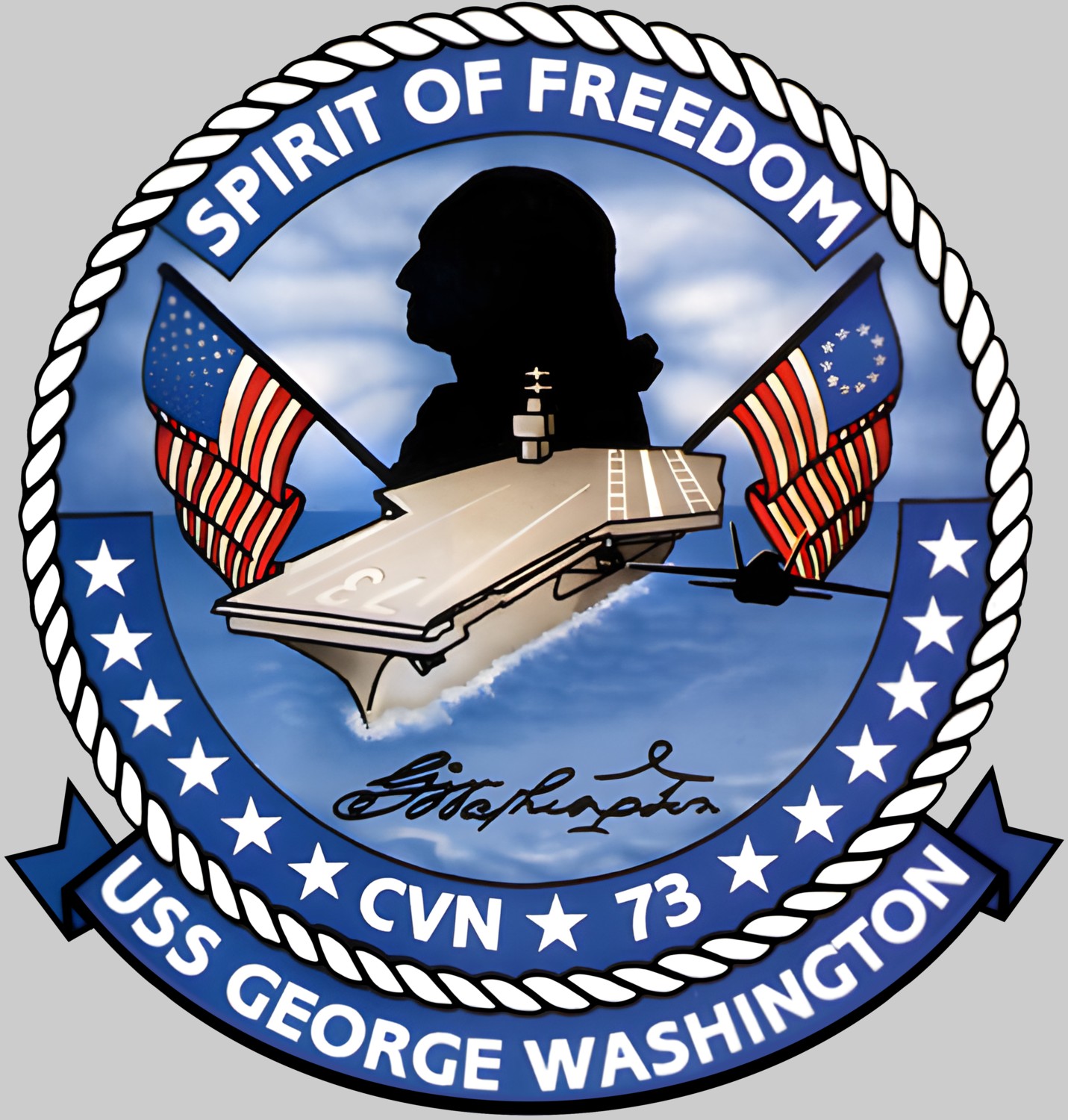 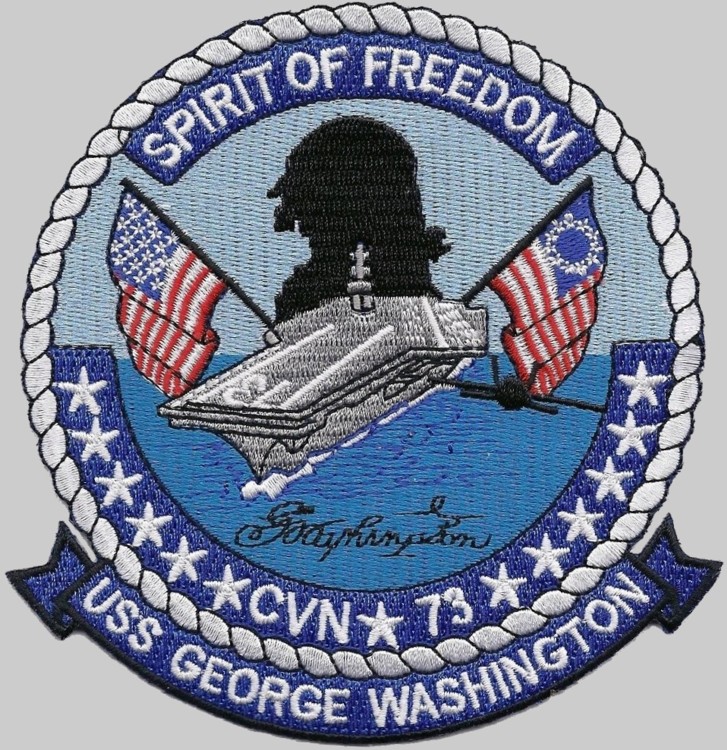 |
||
|
|
seaforces.org |
USN ships
start page | |
